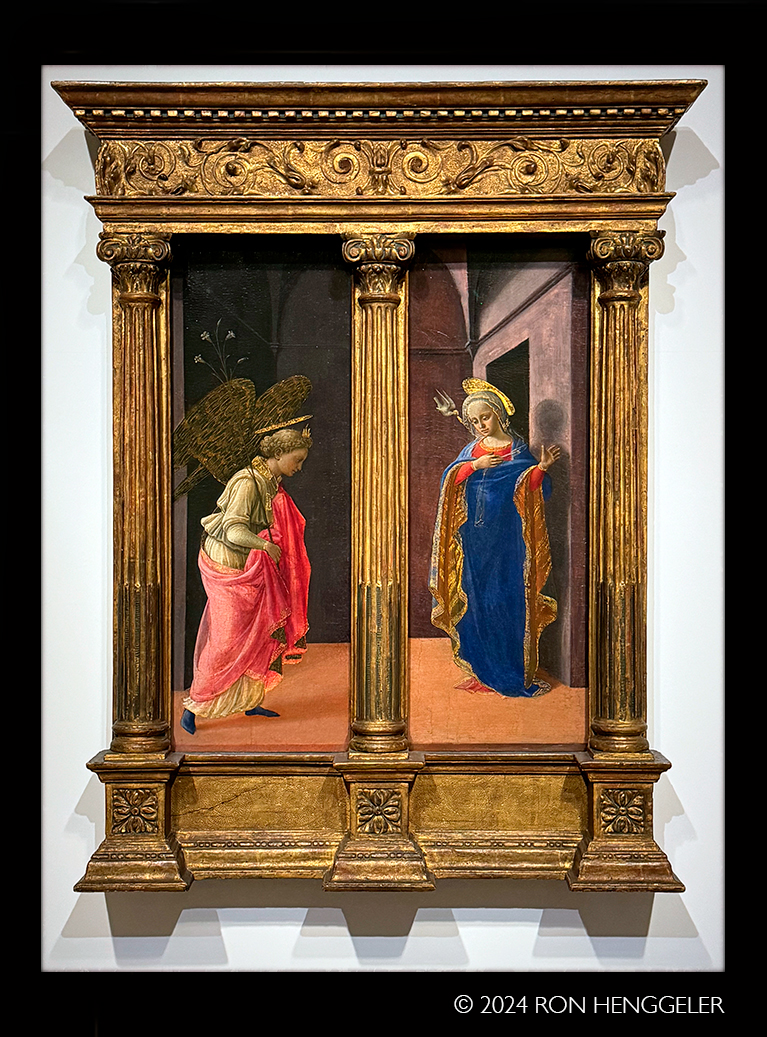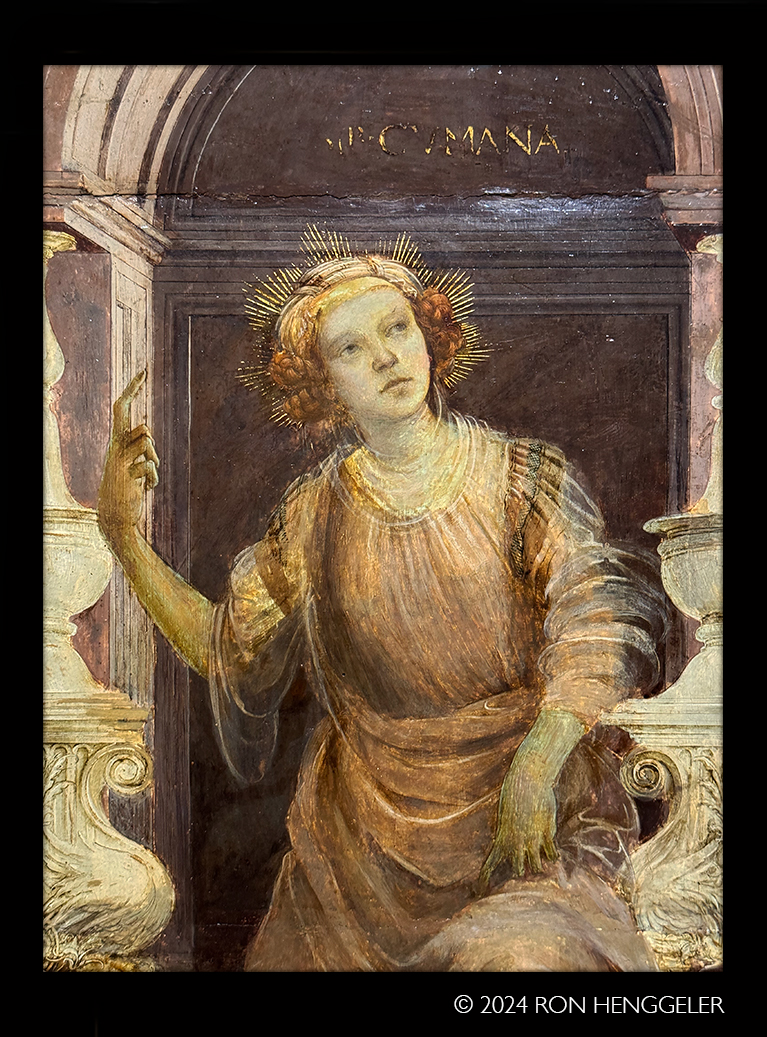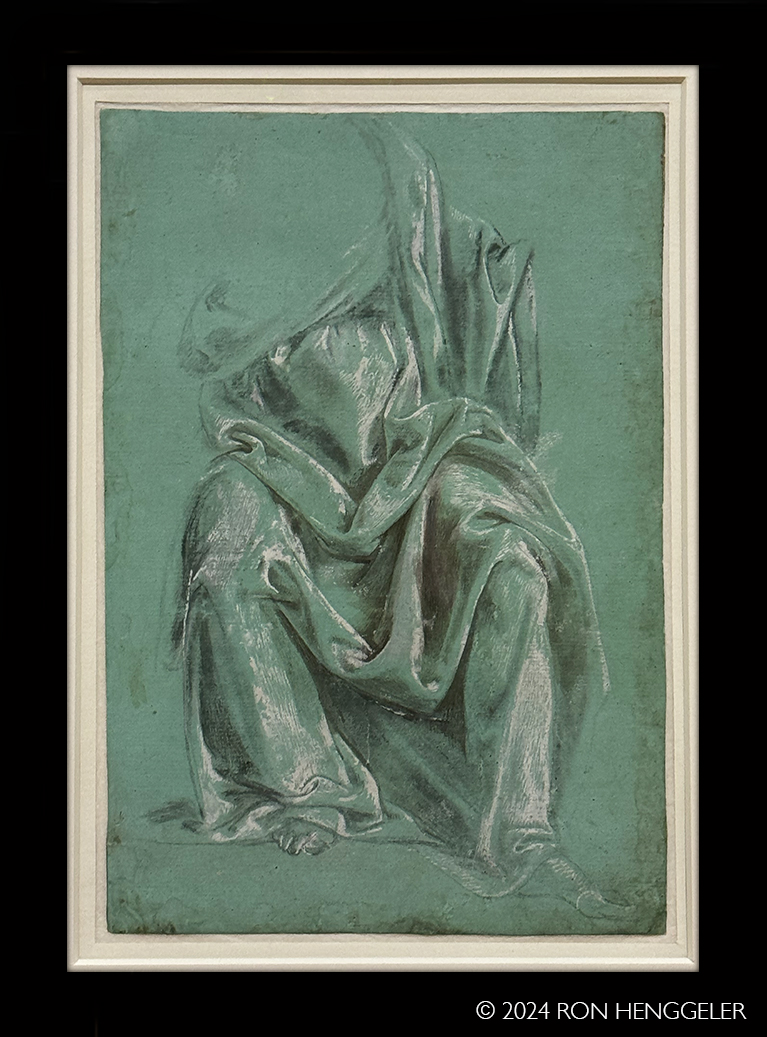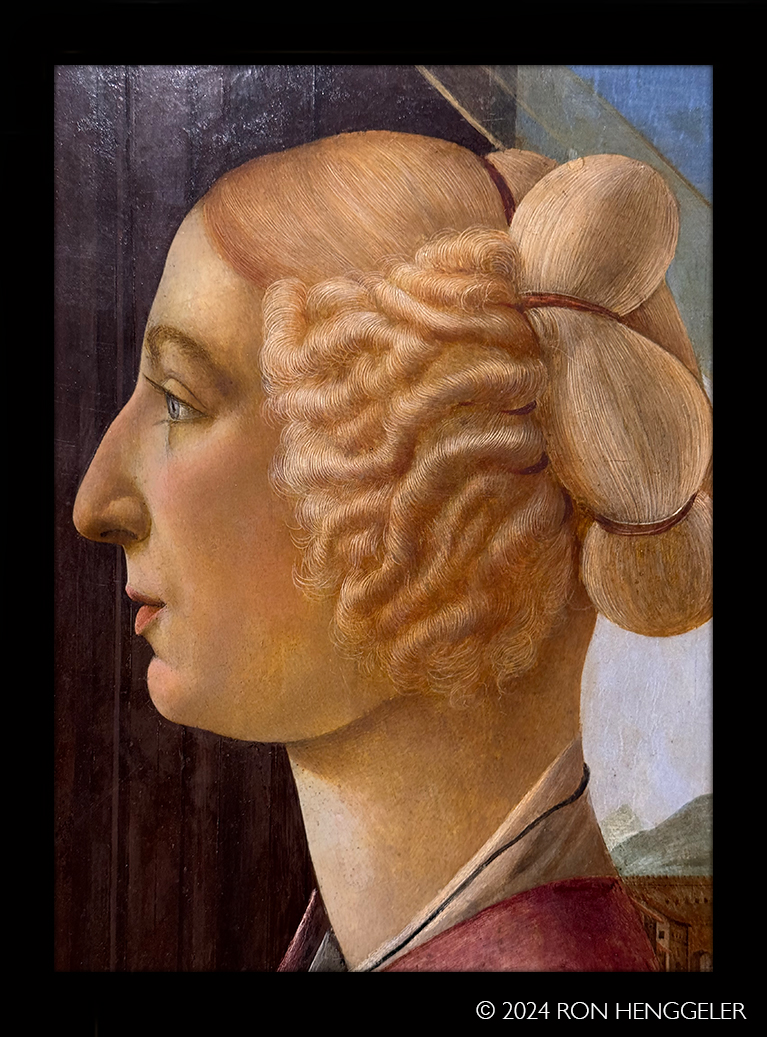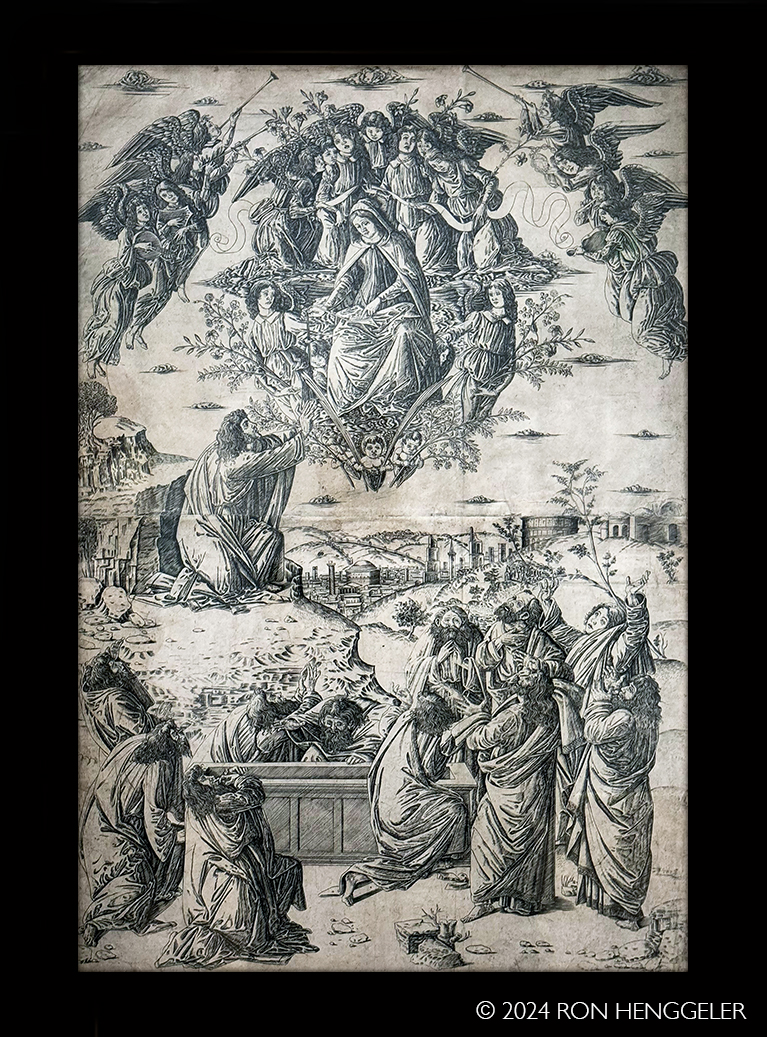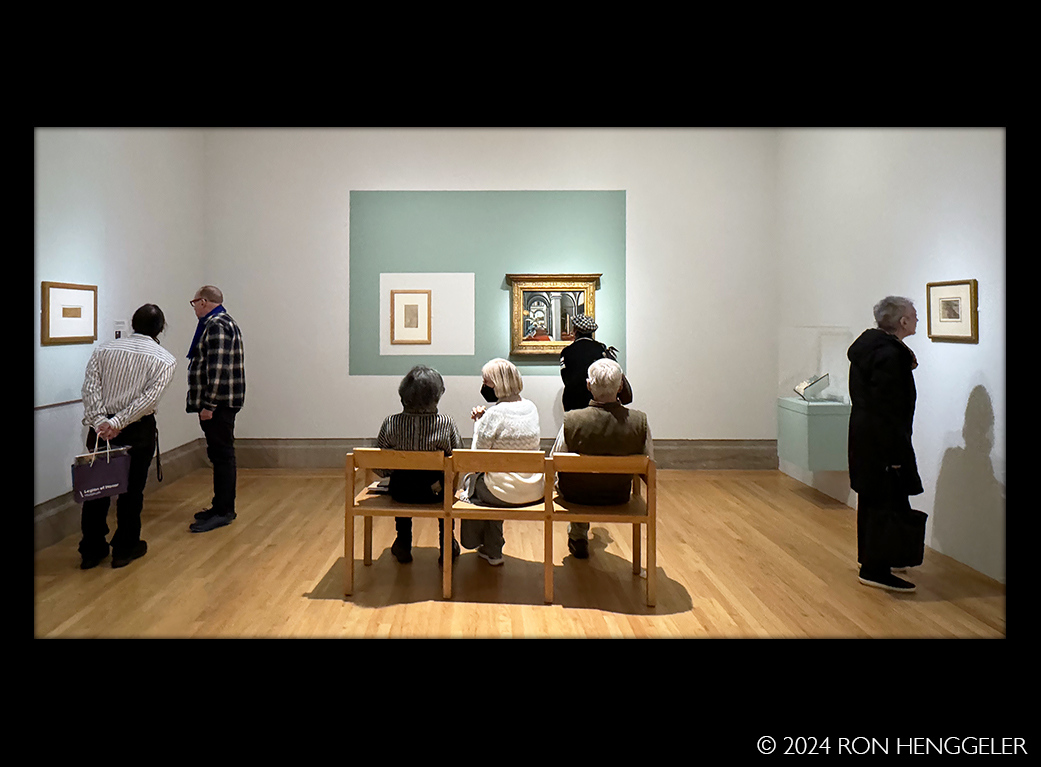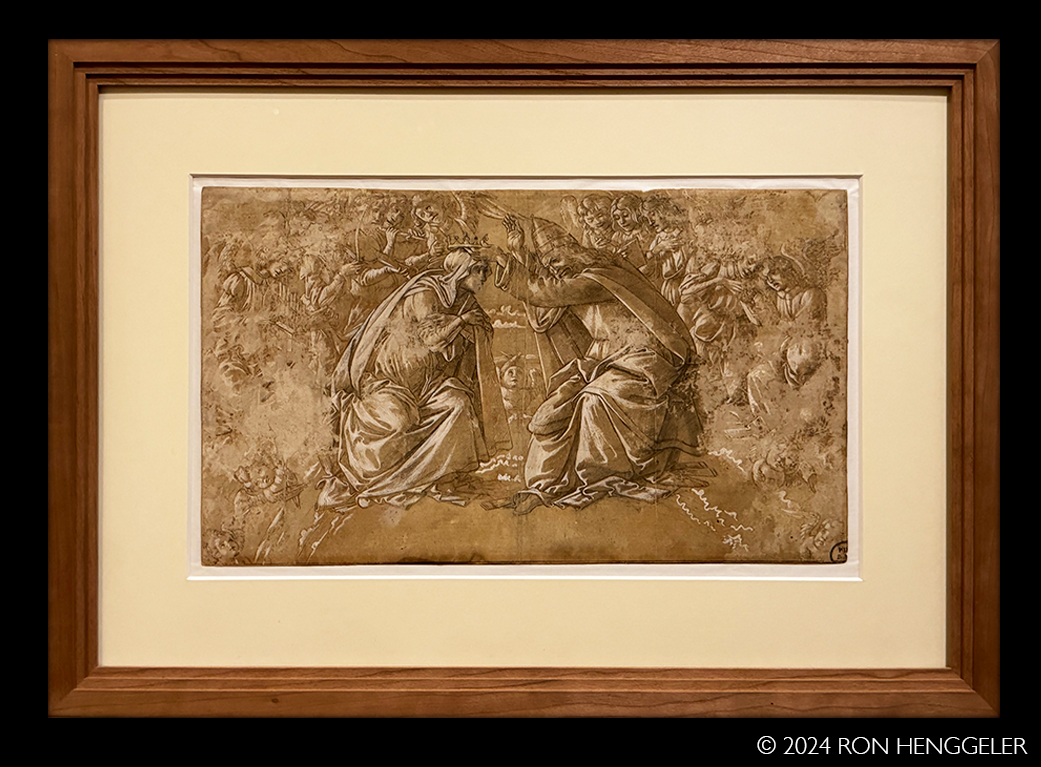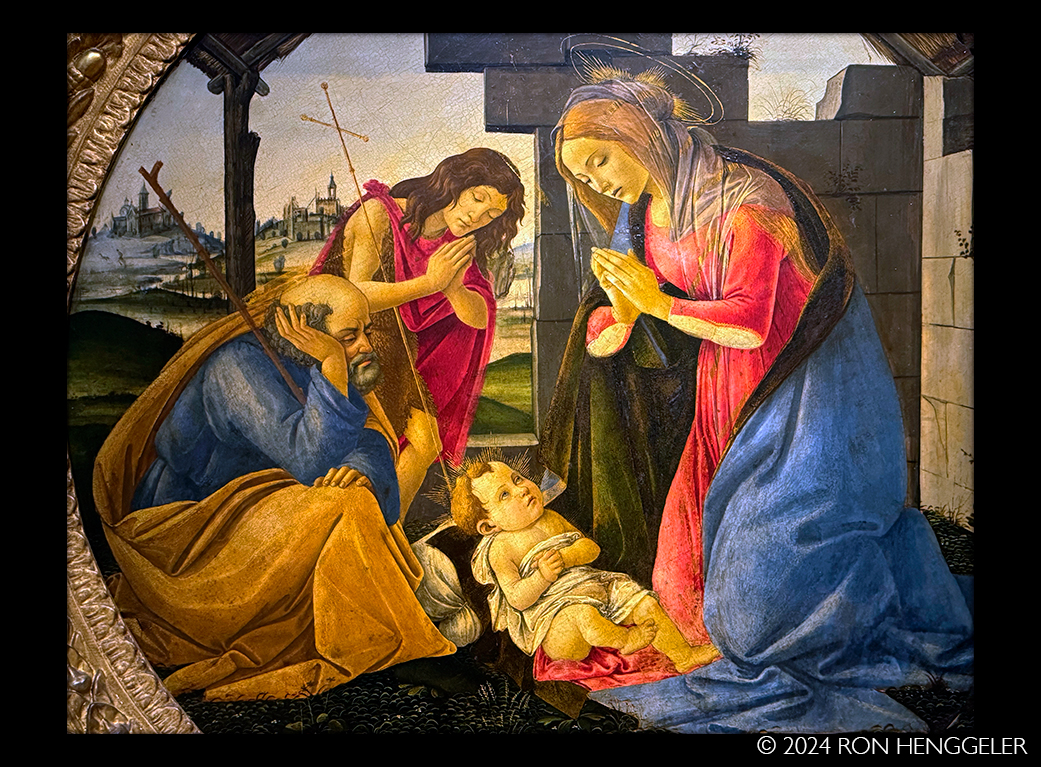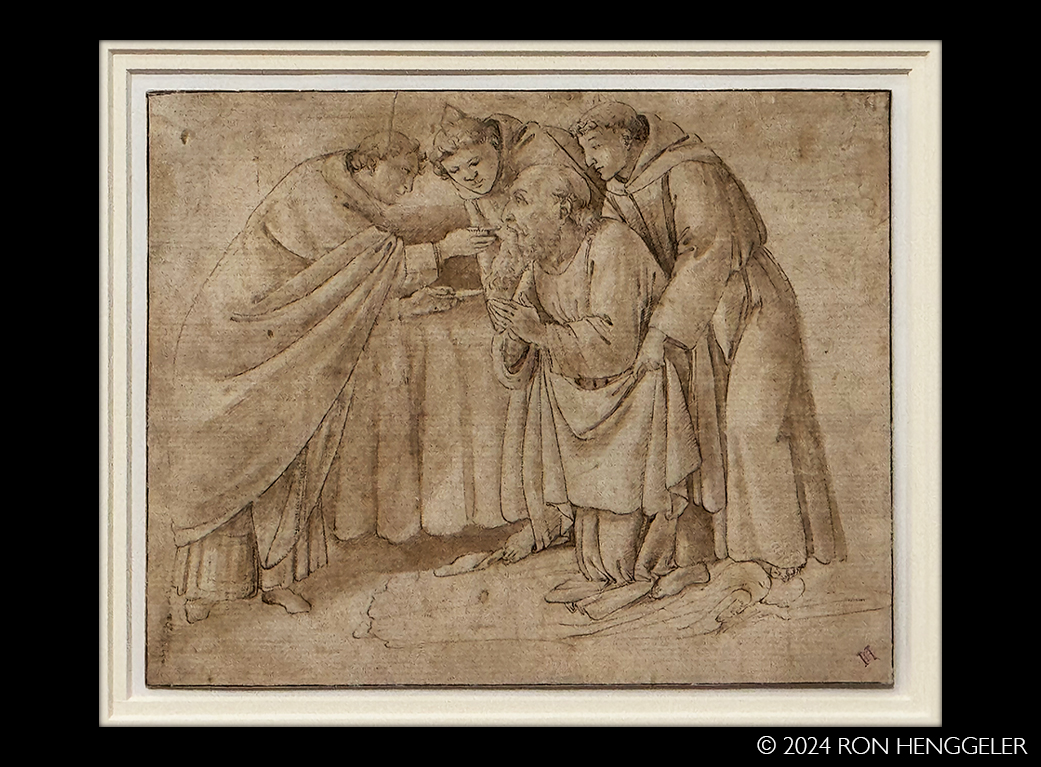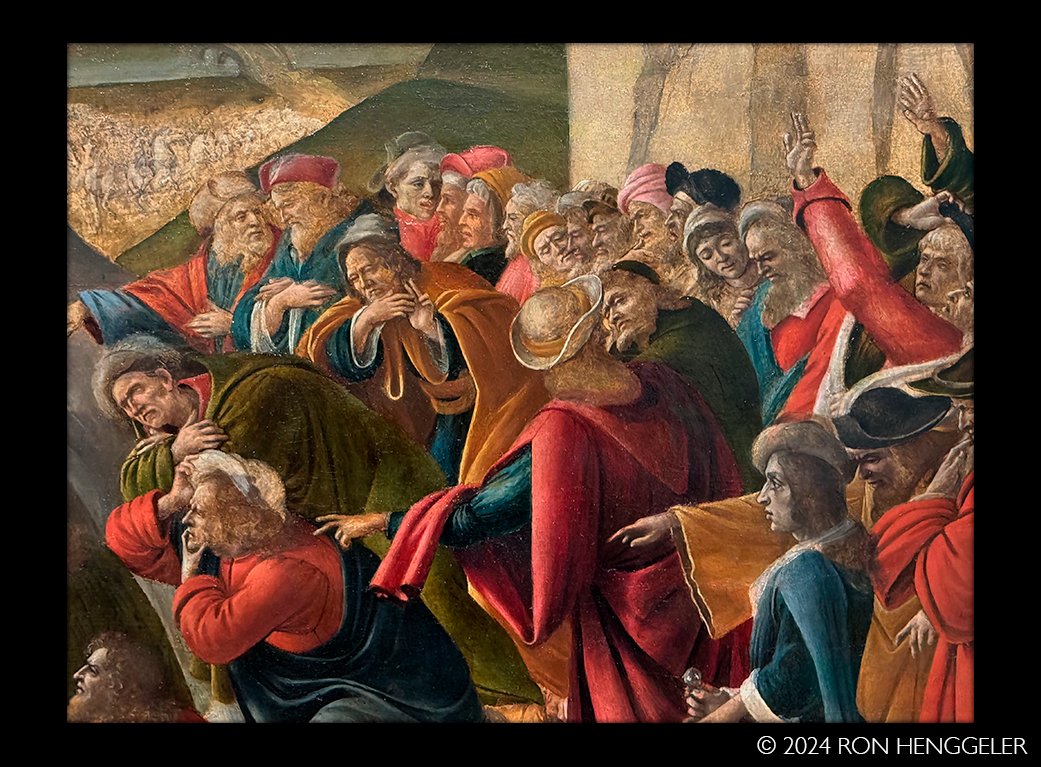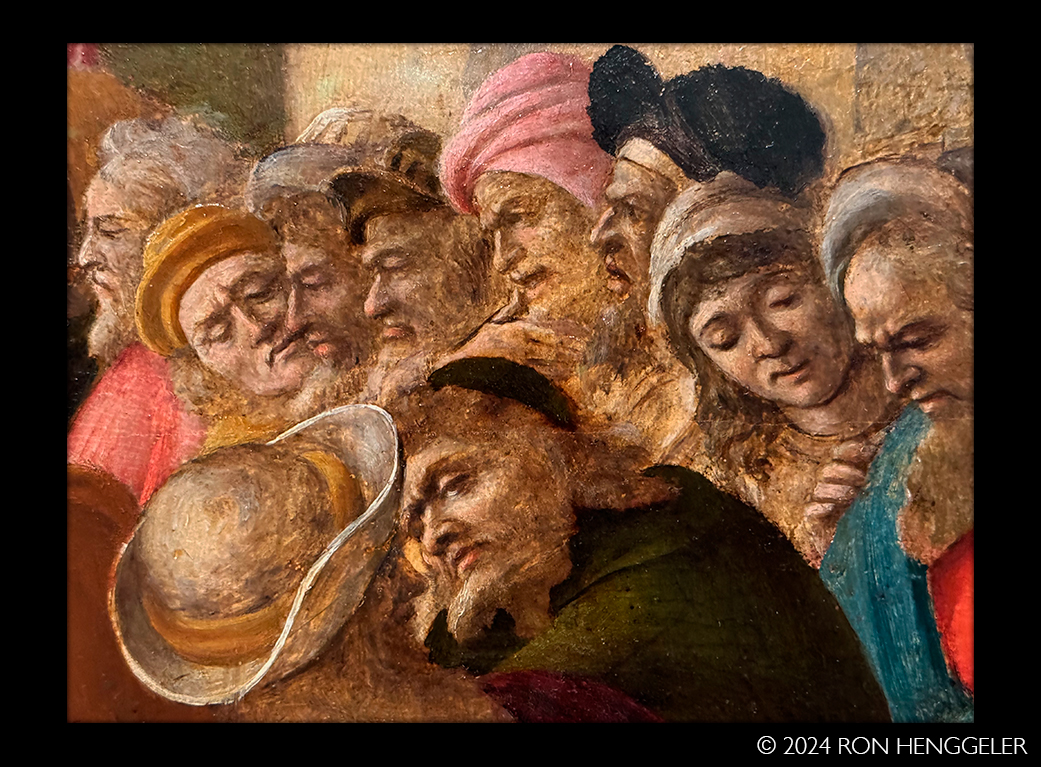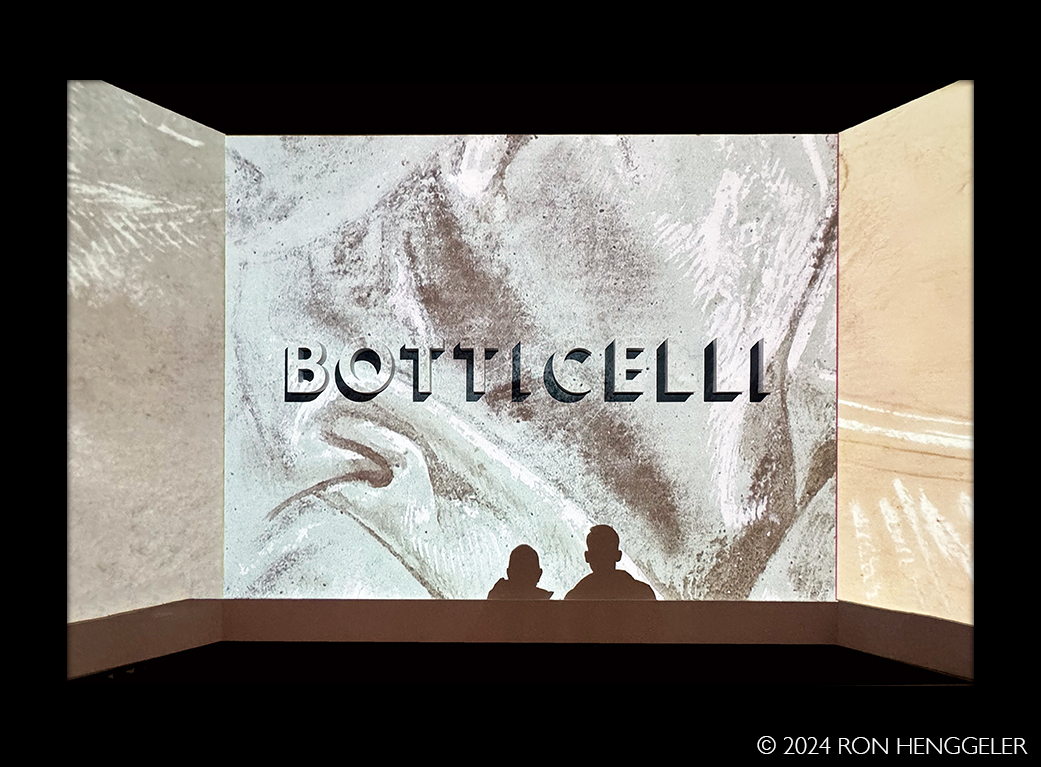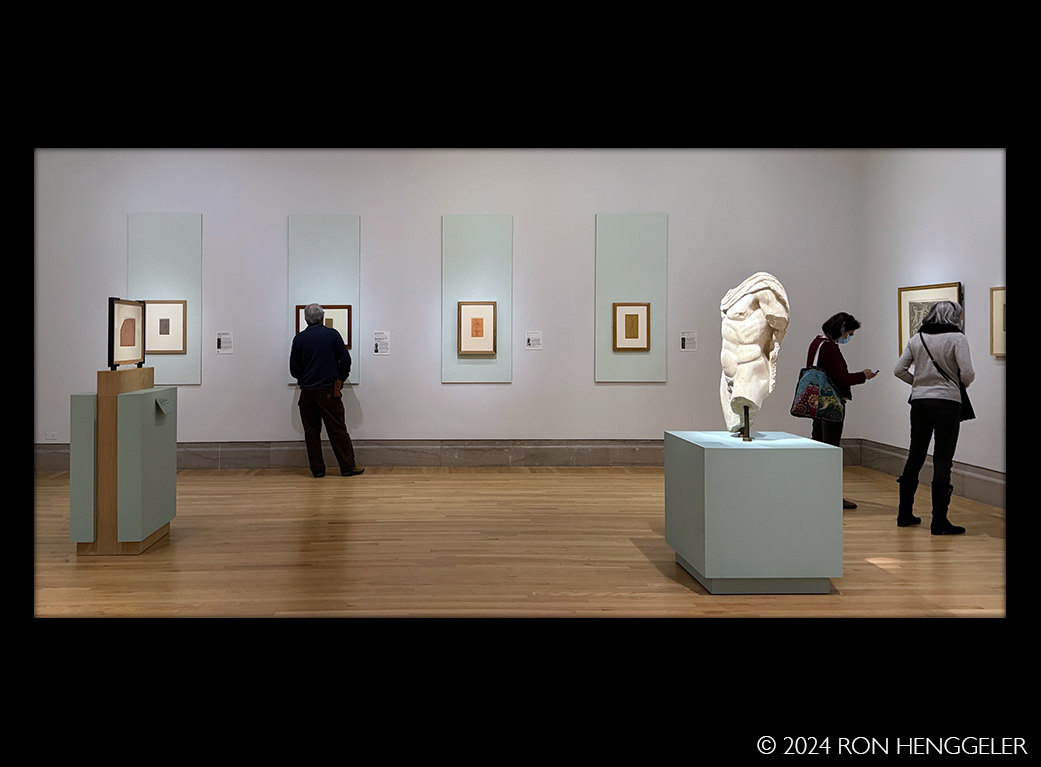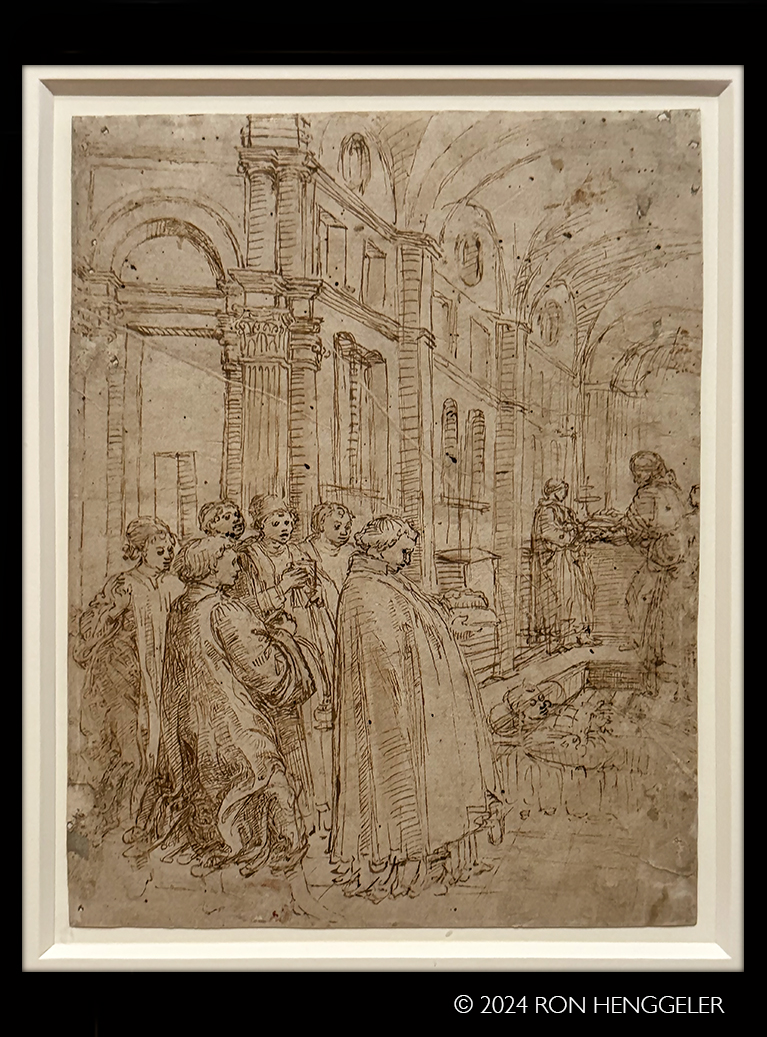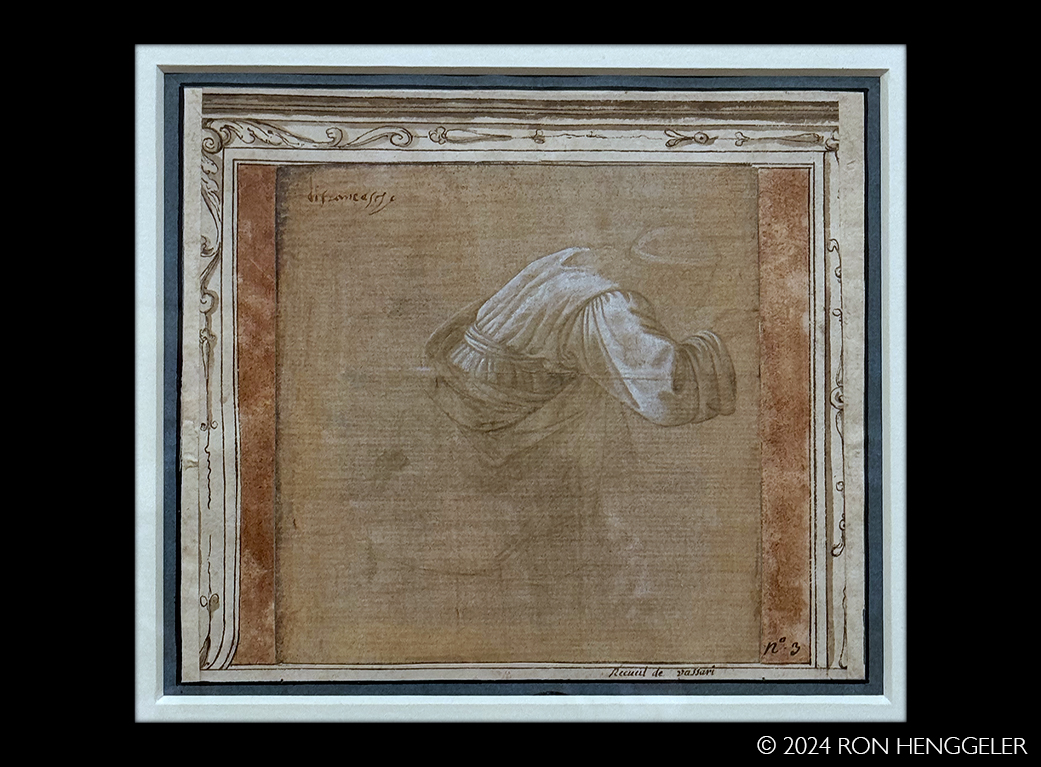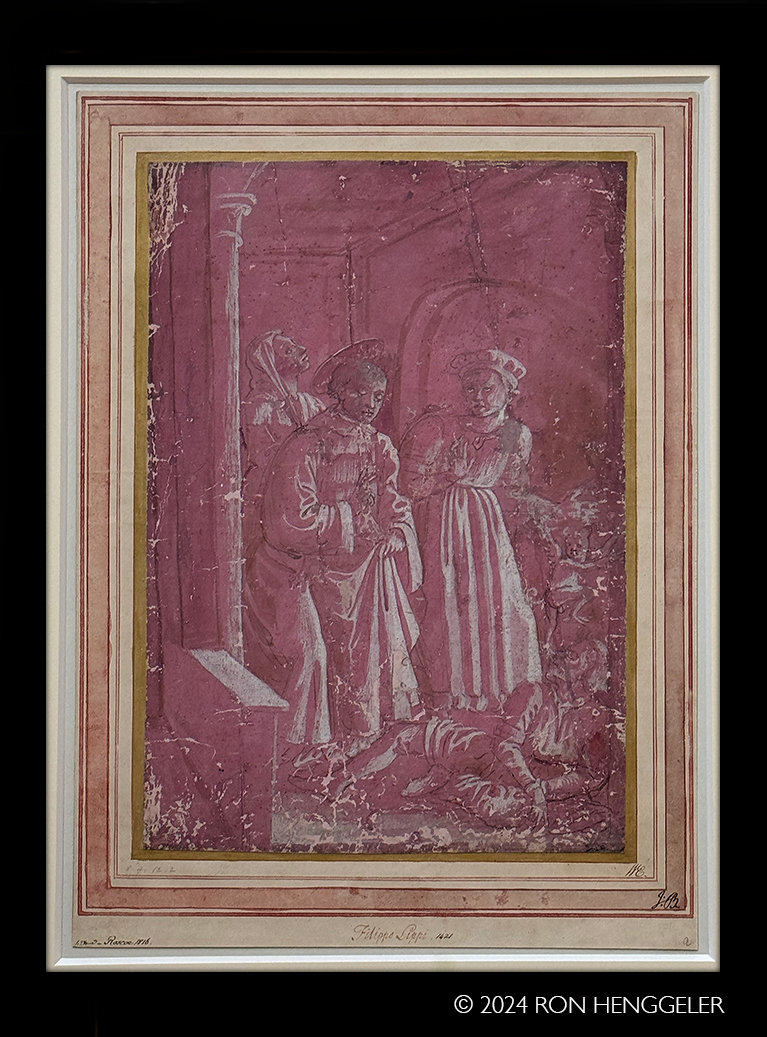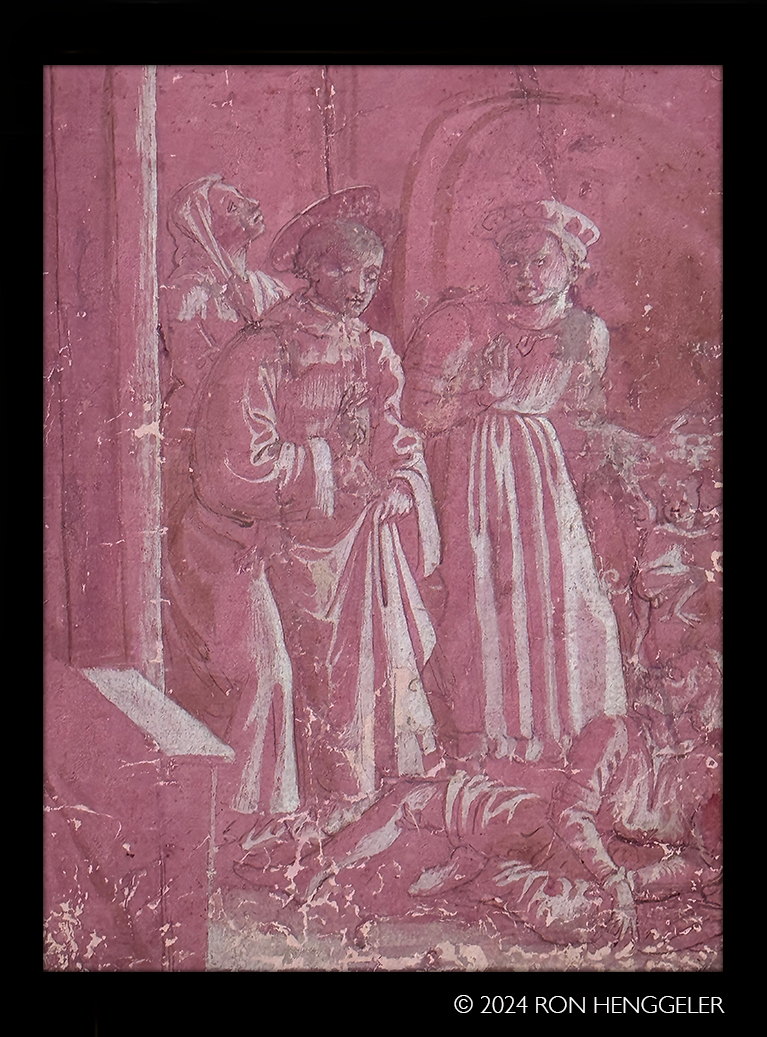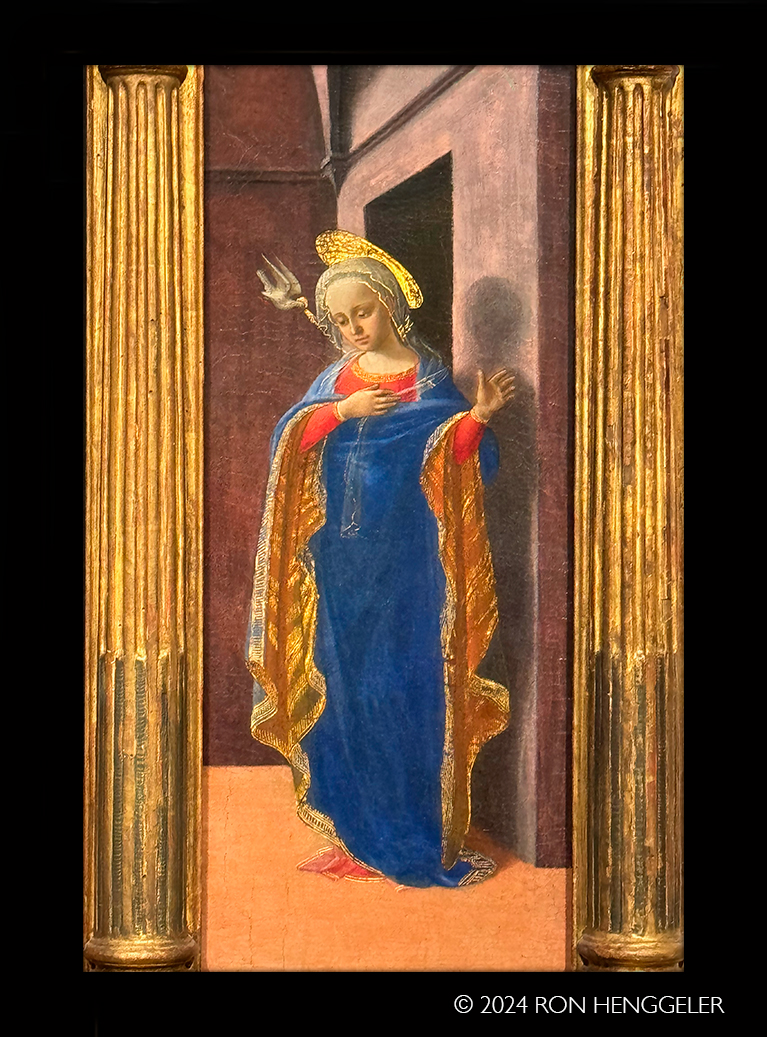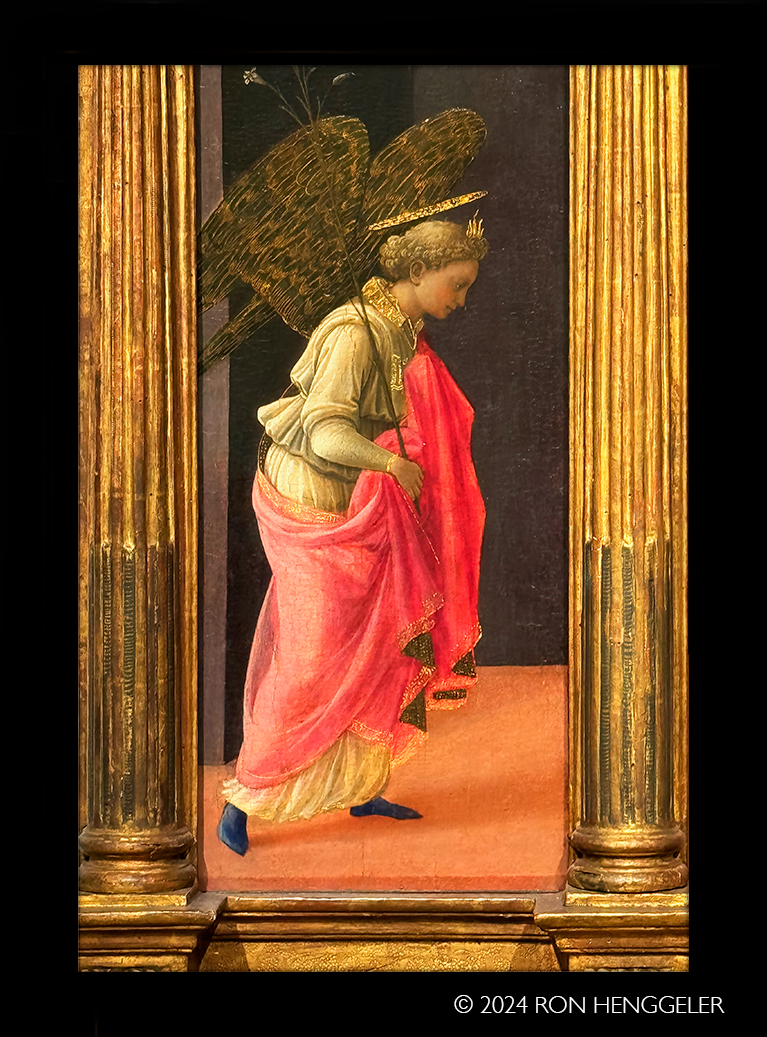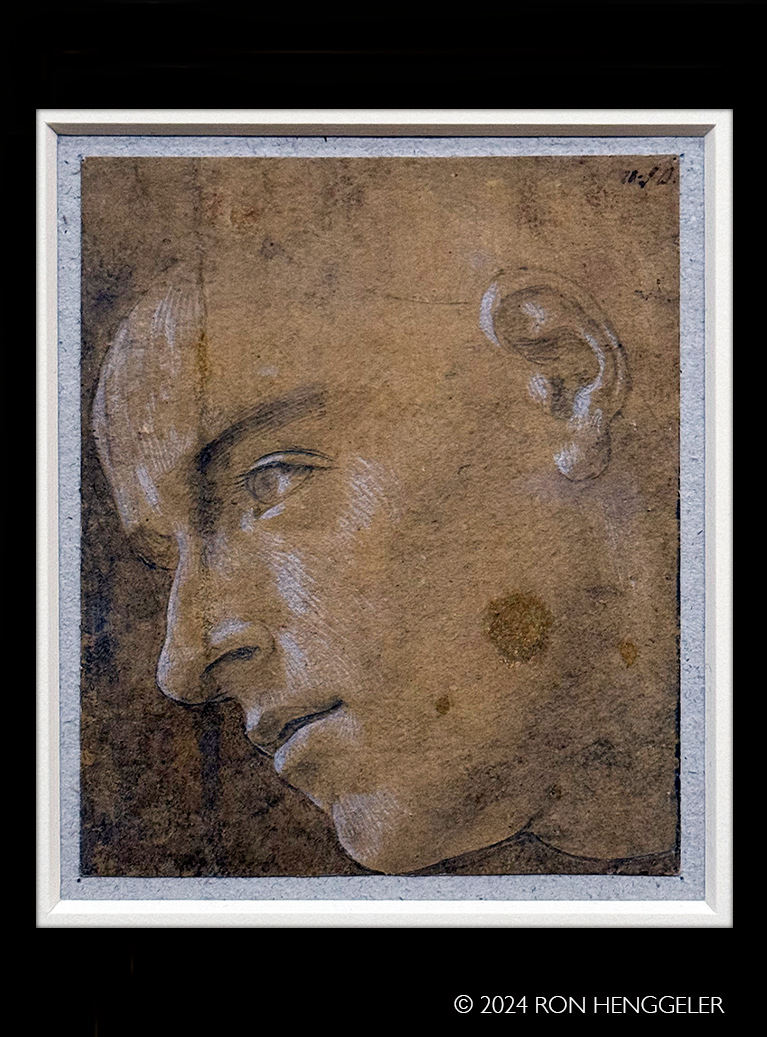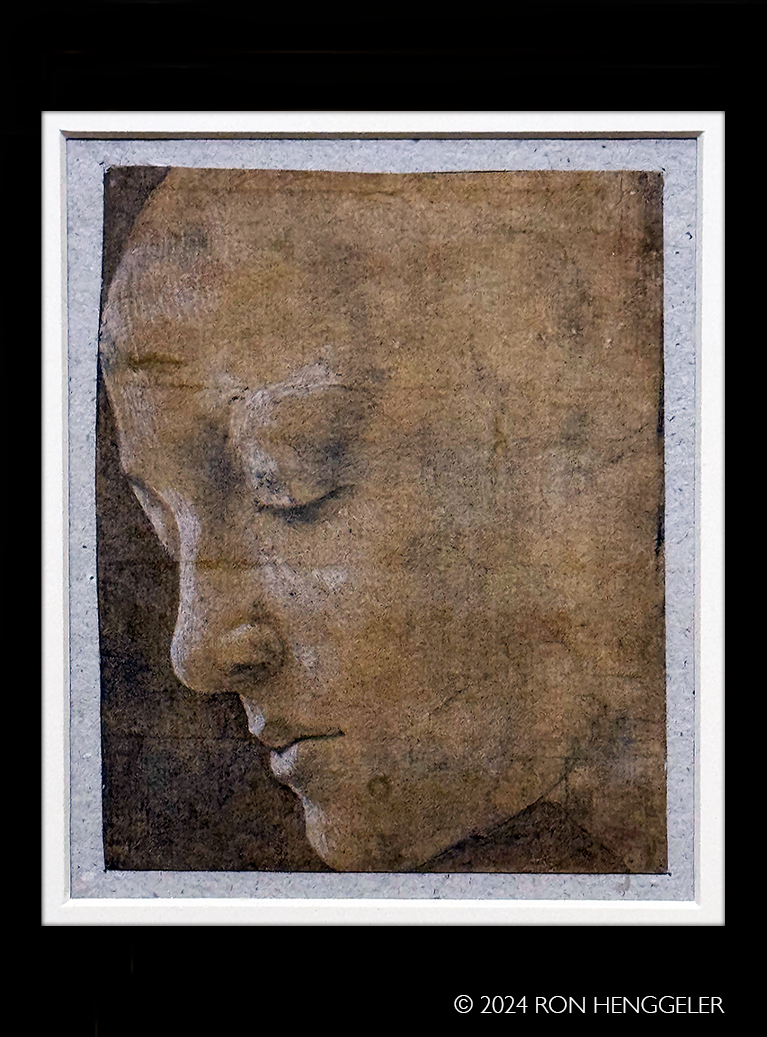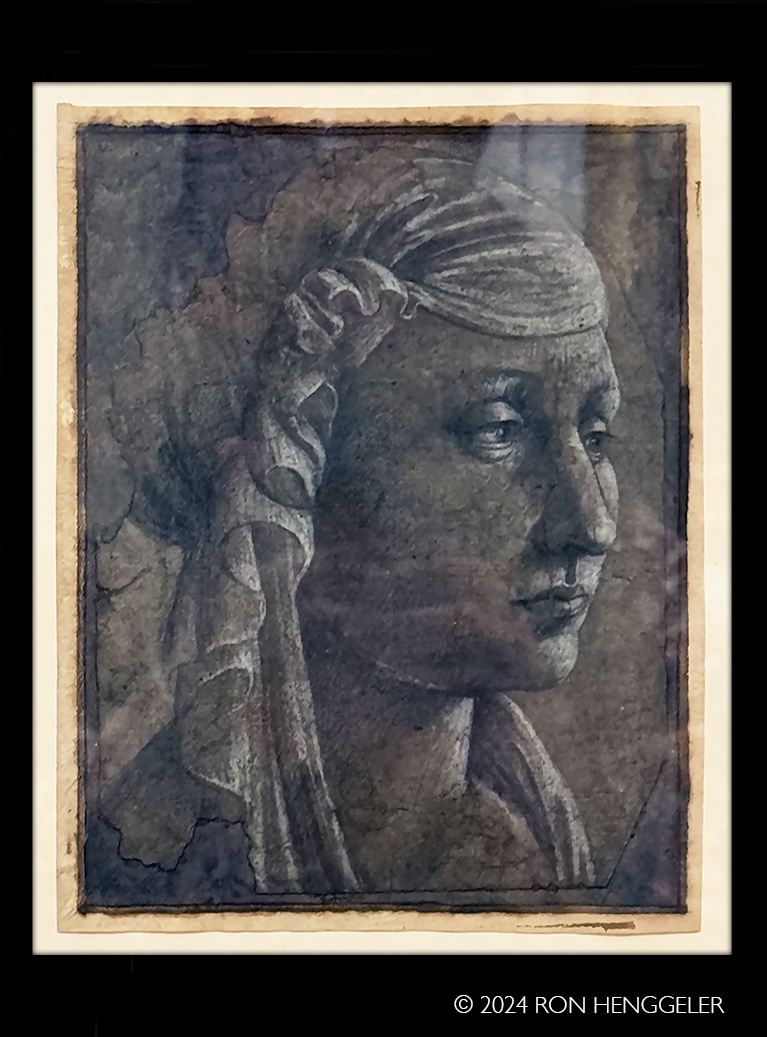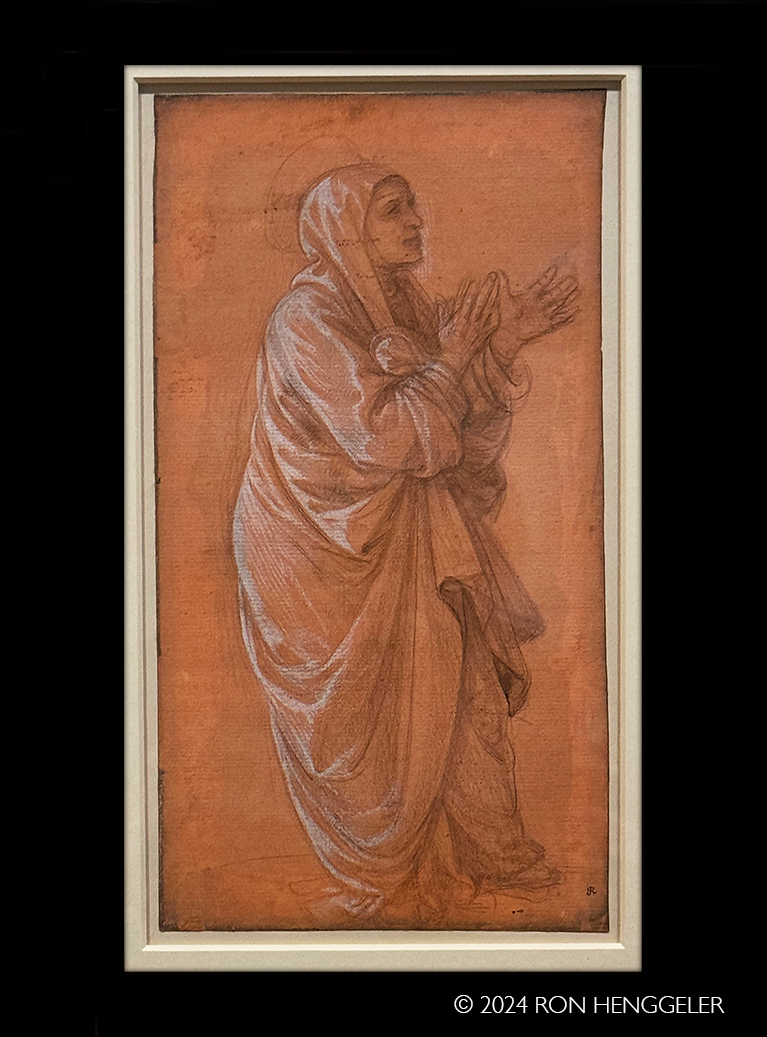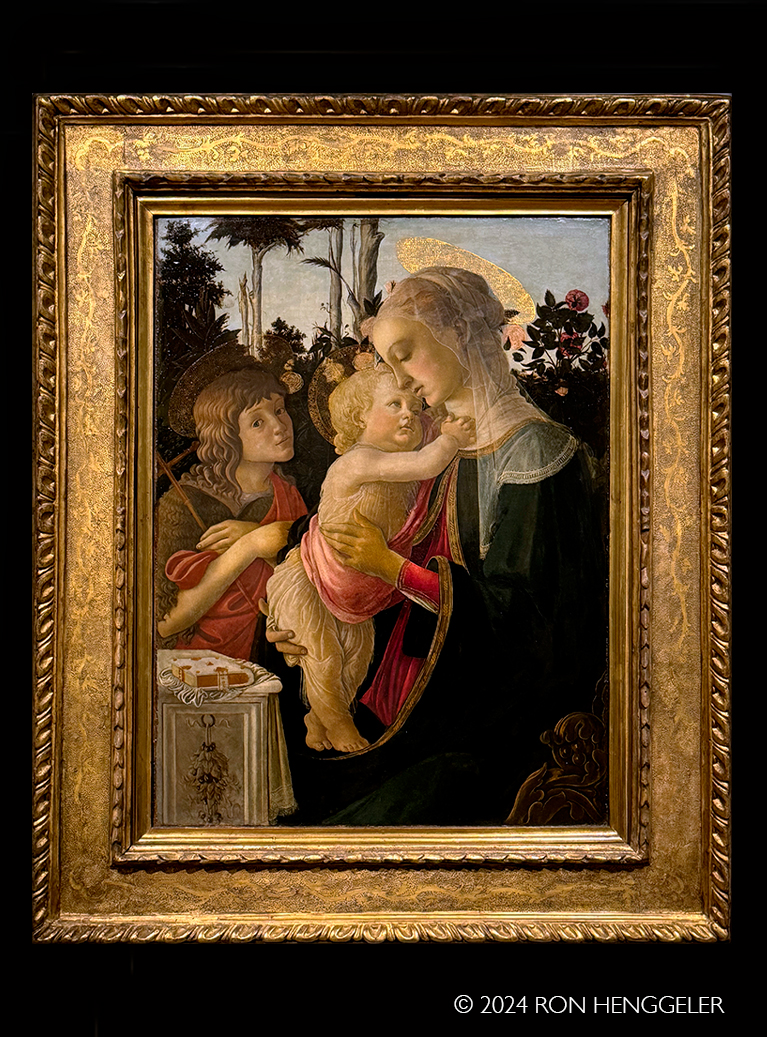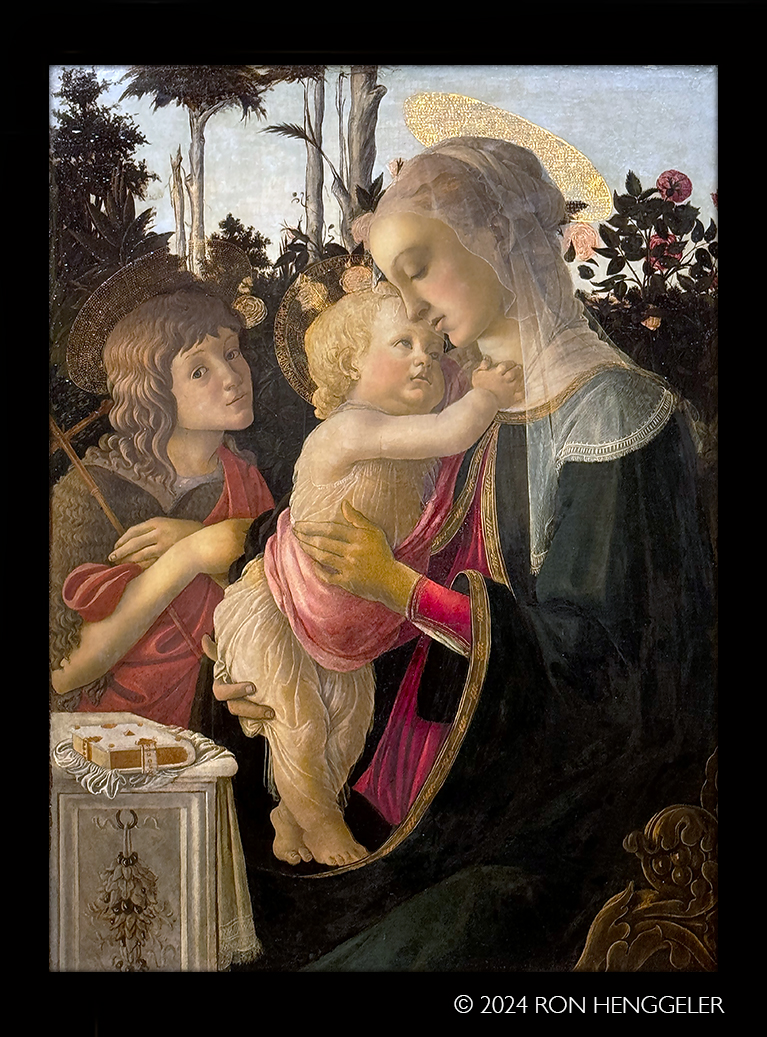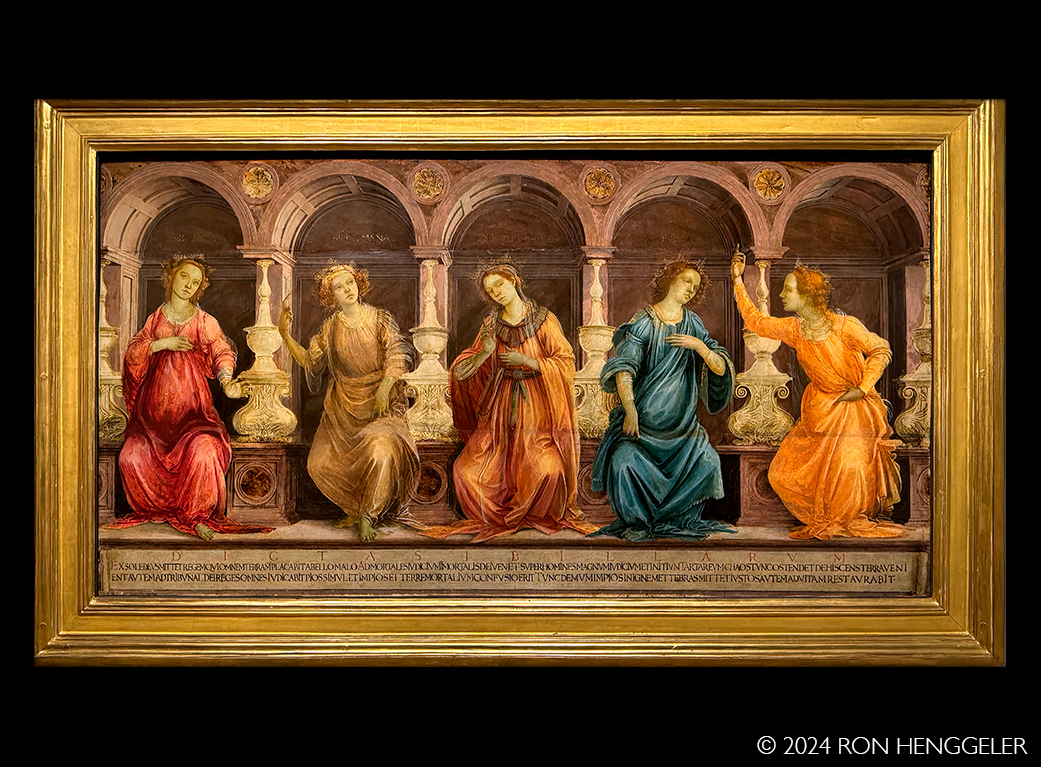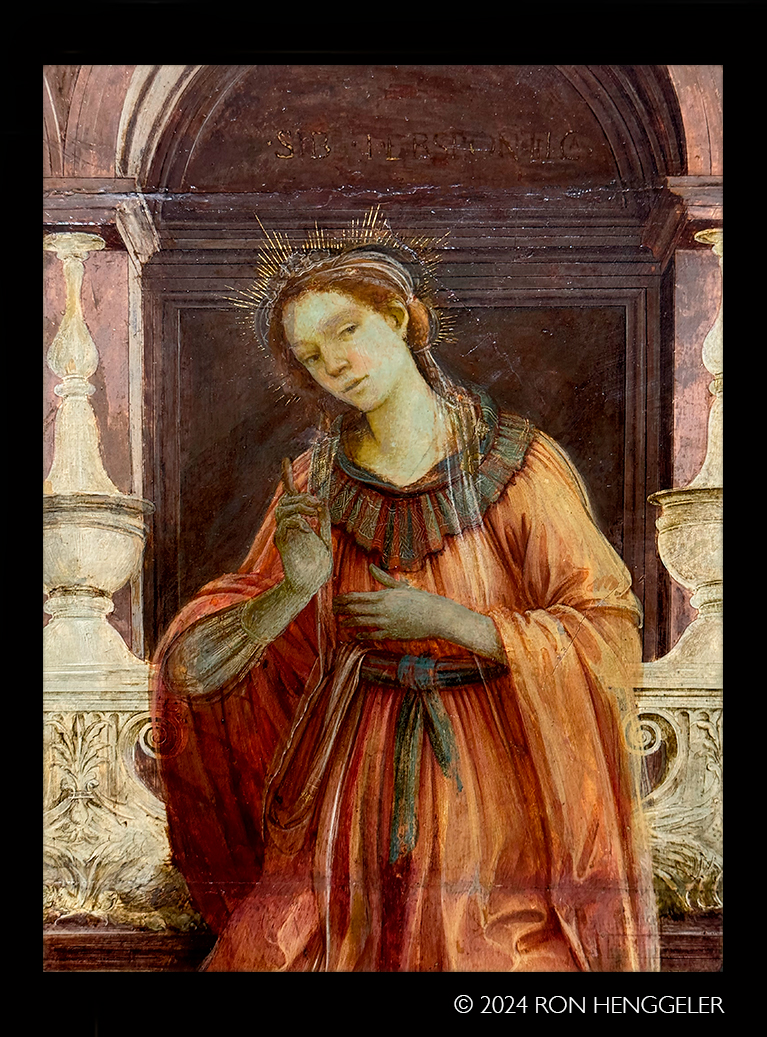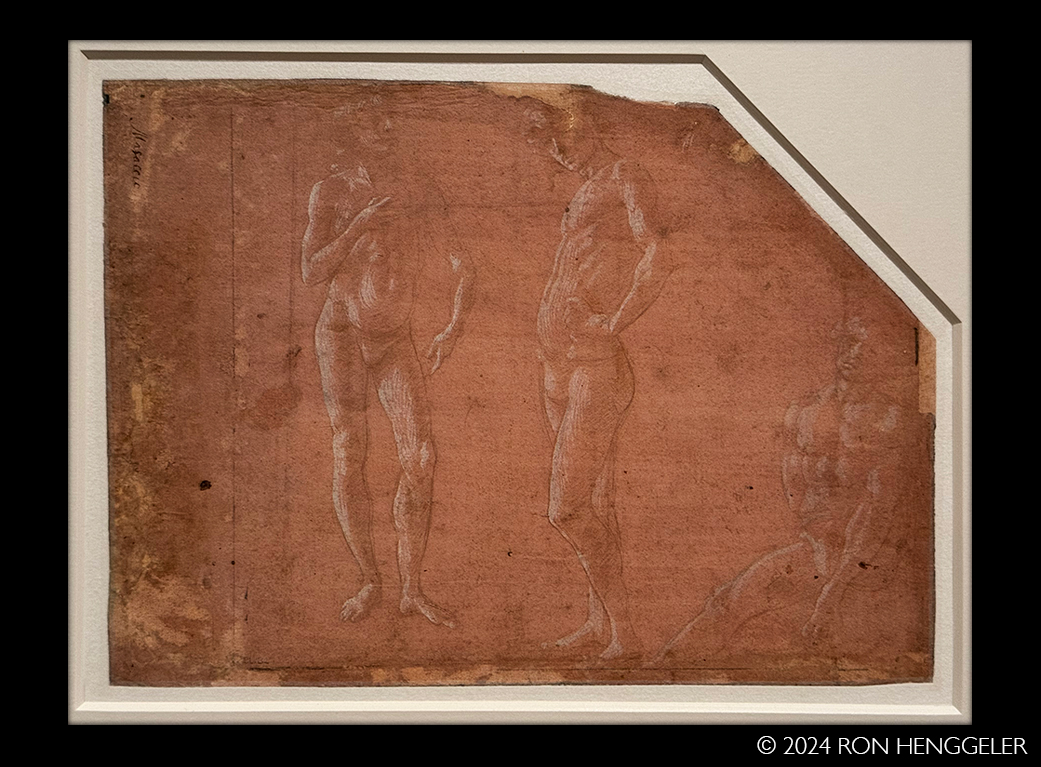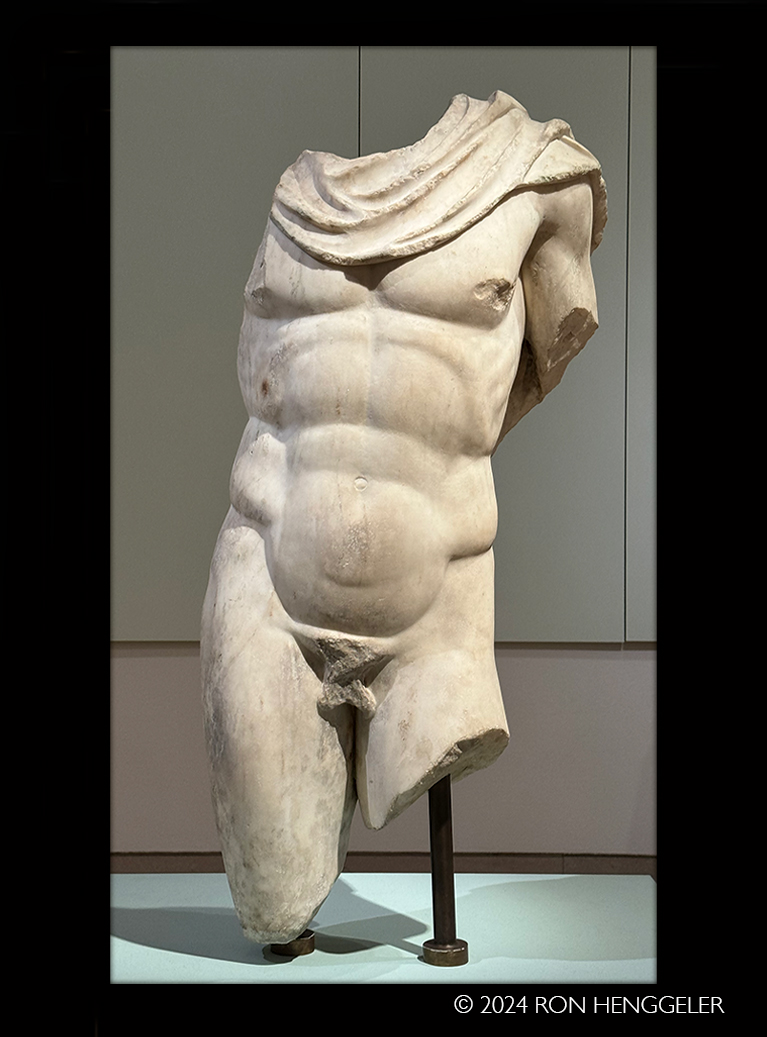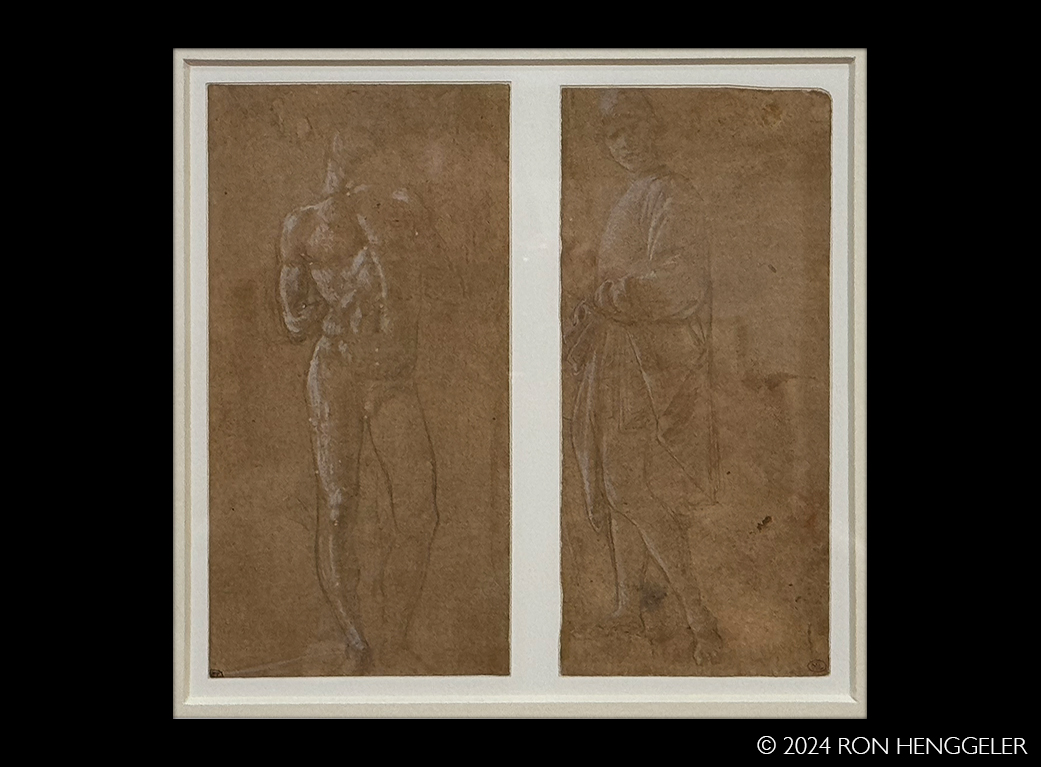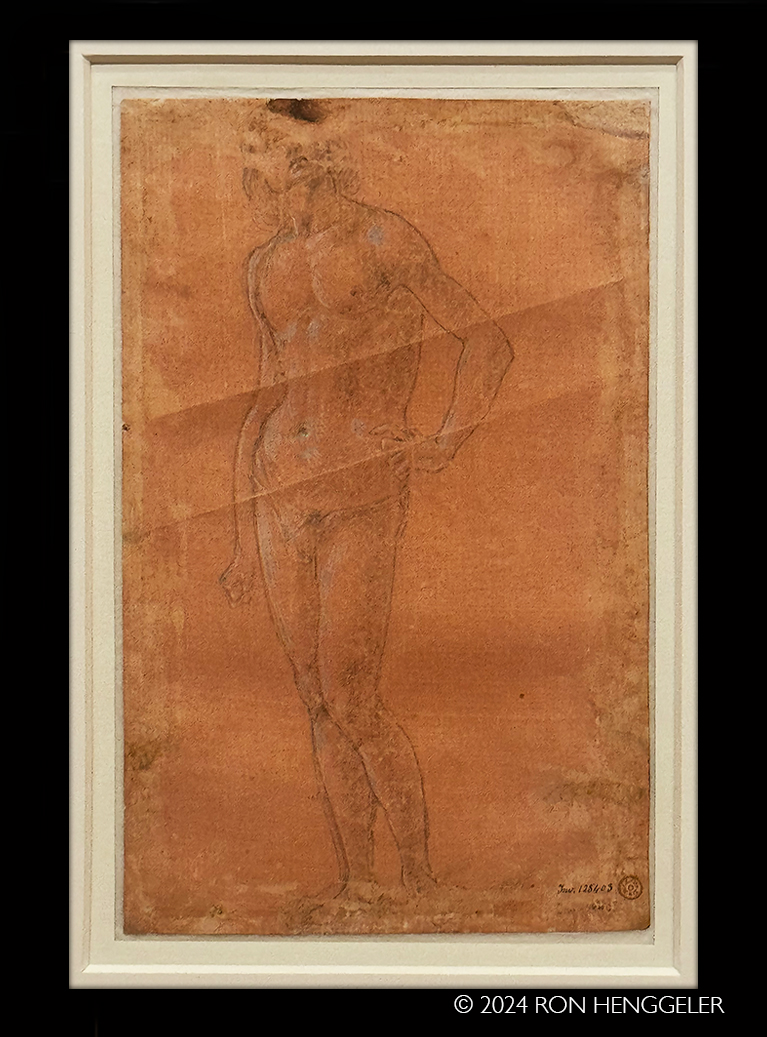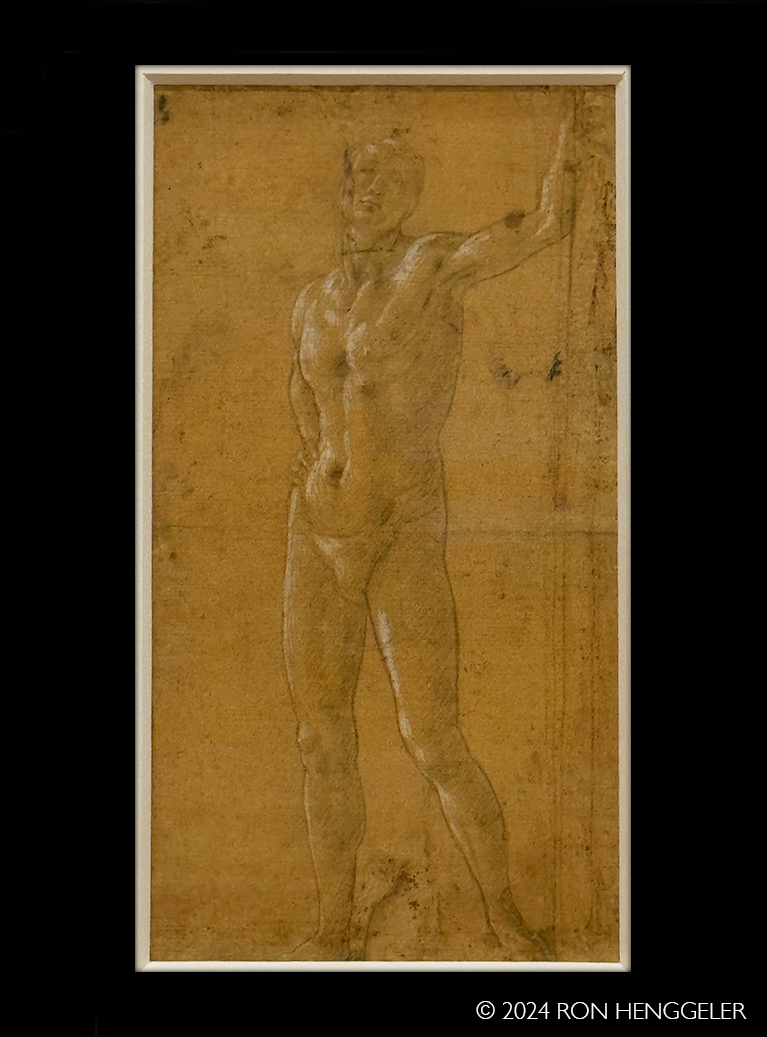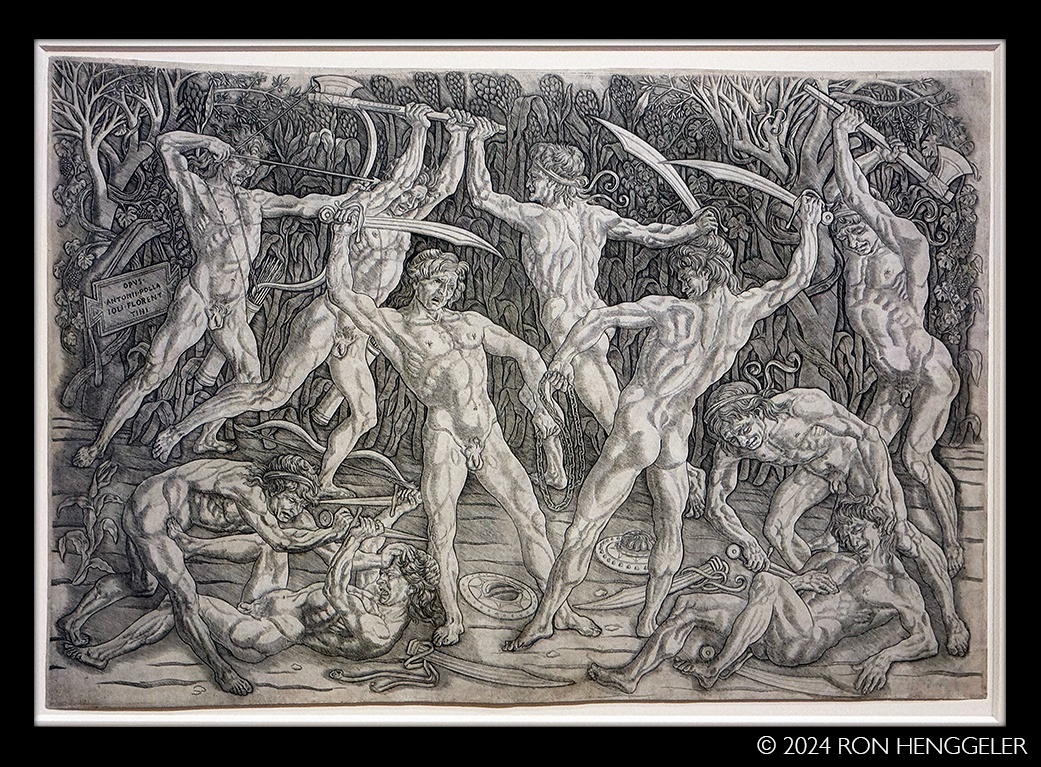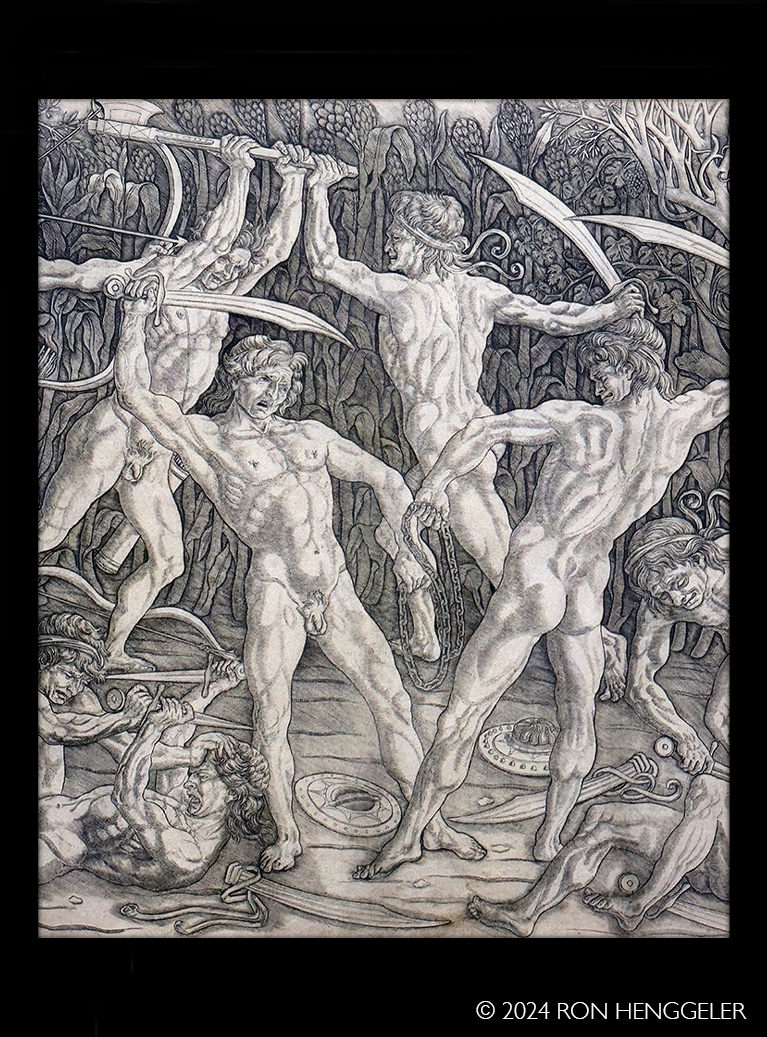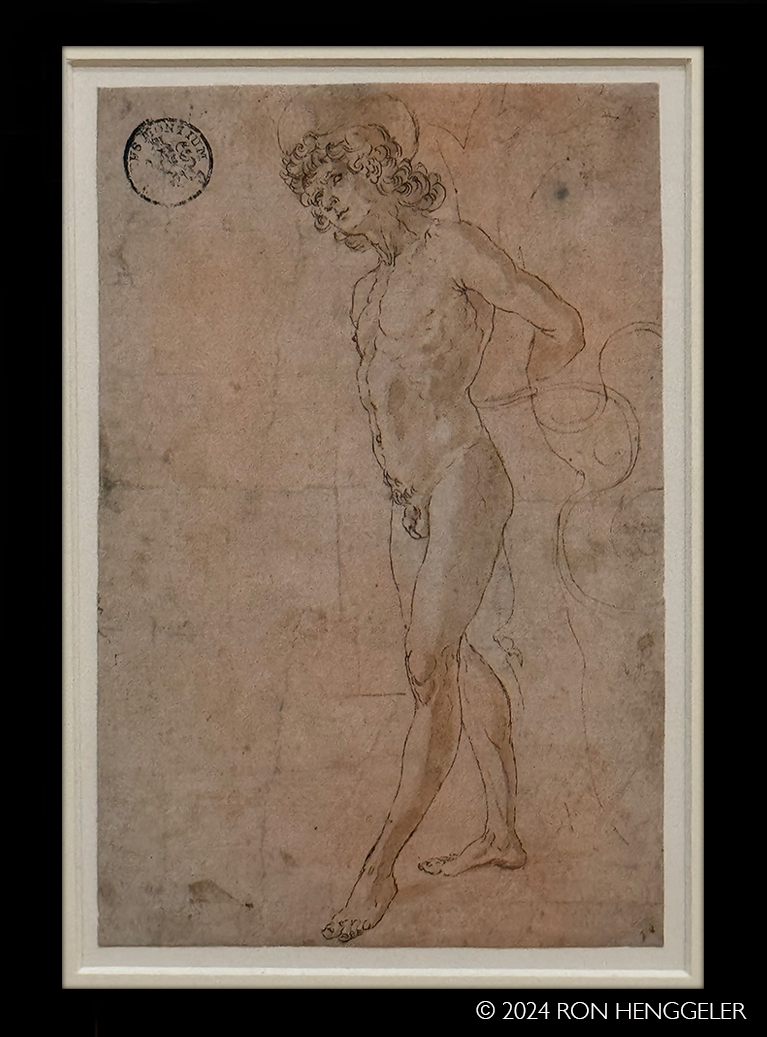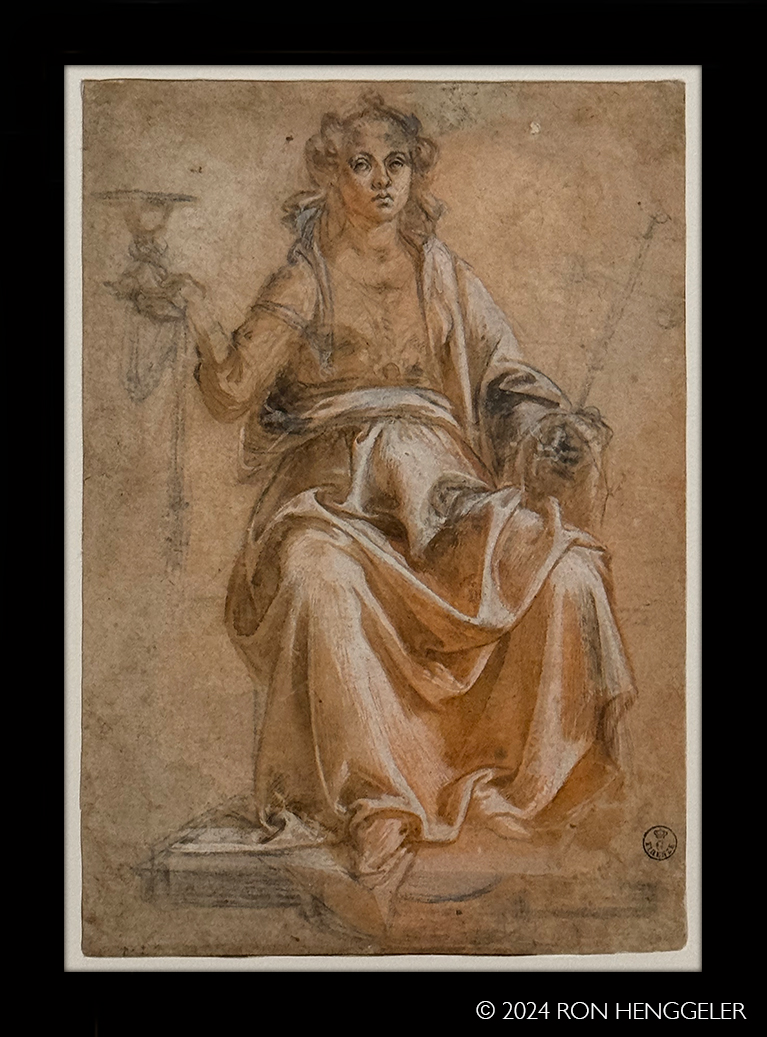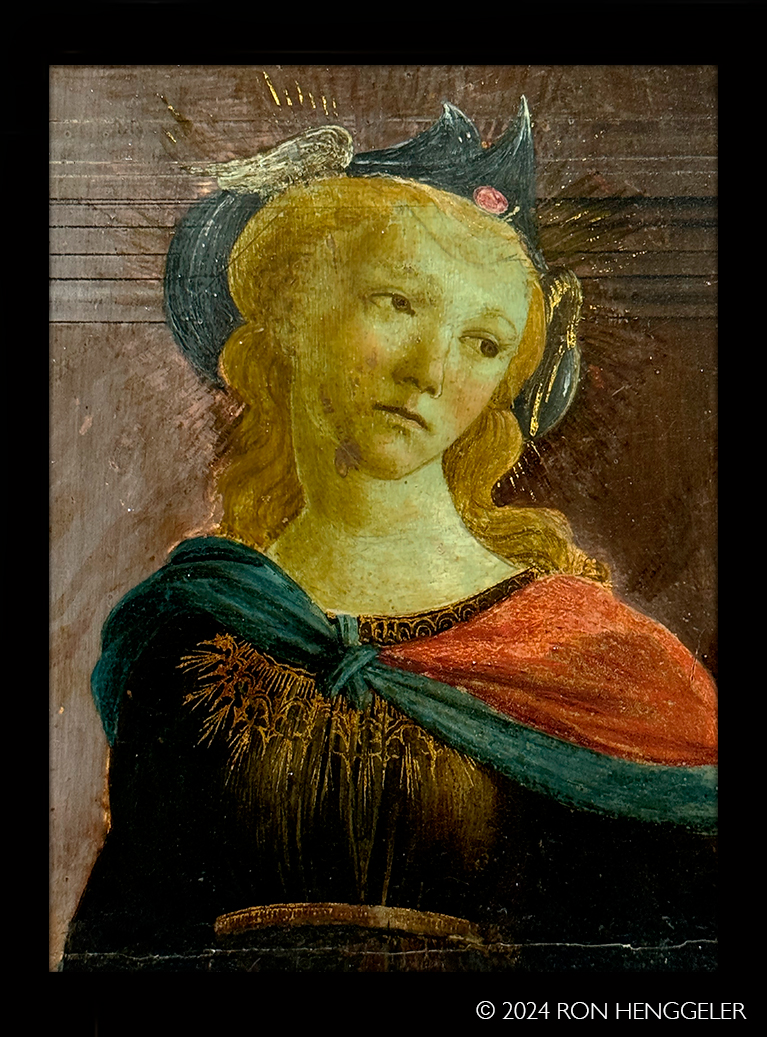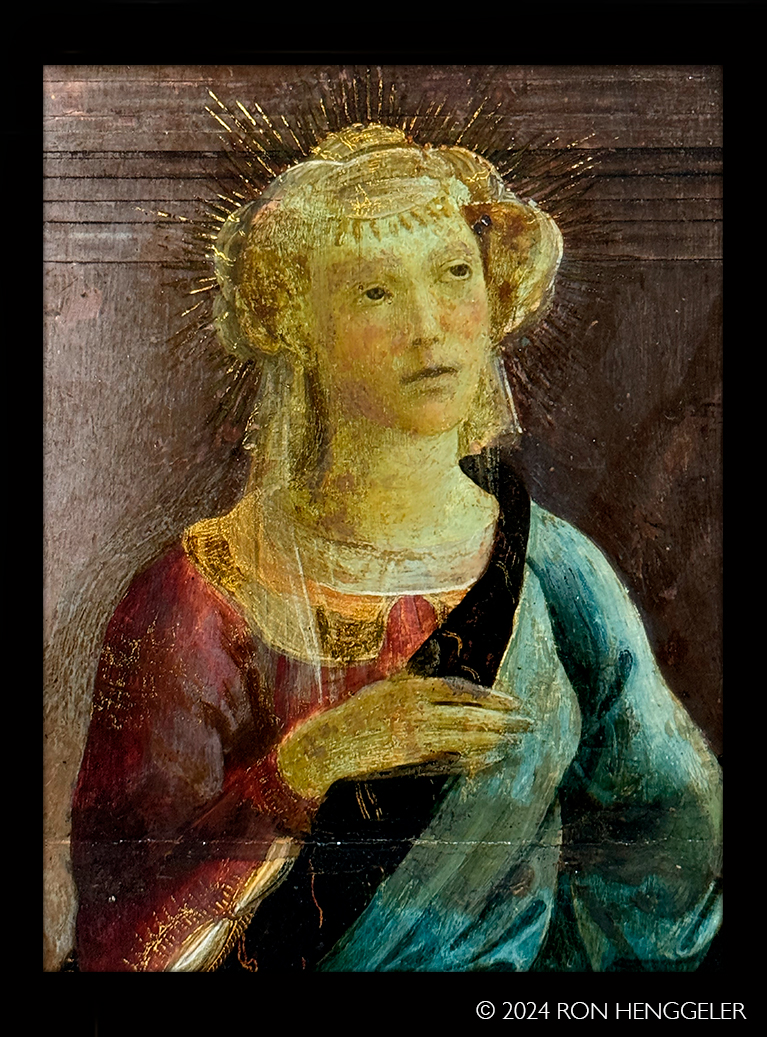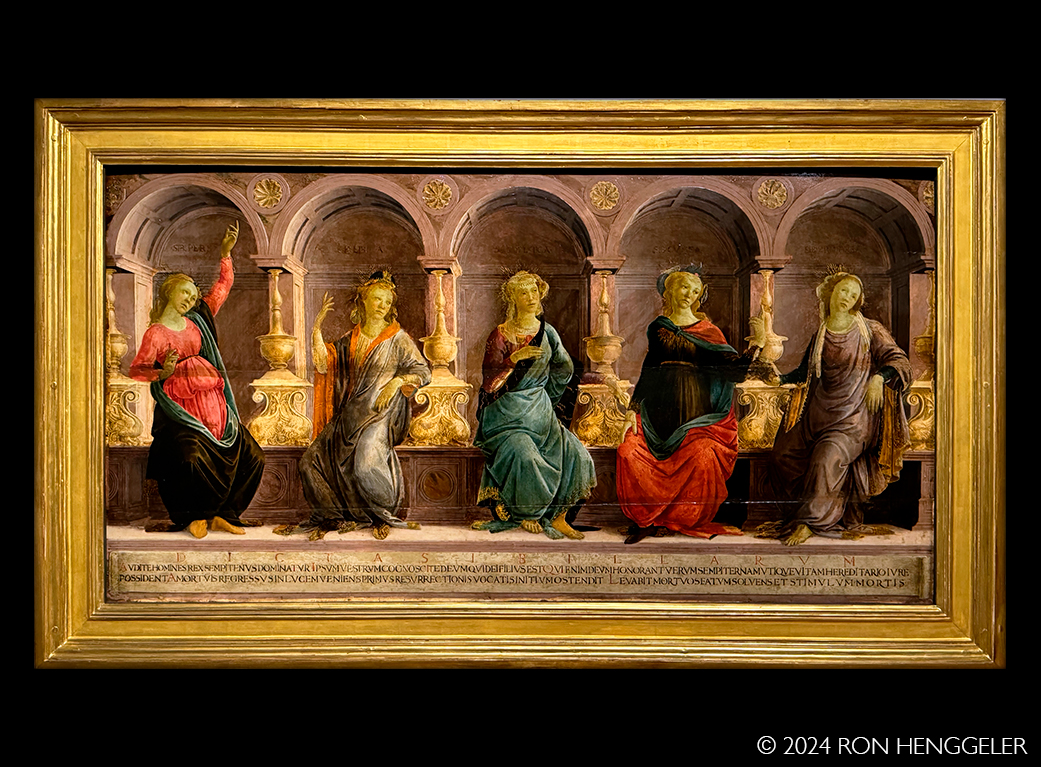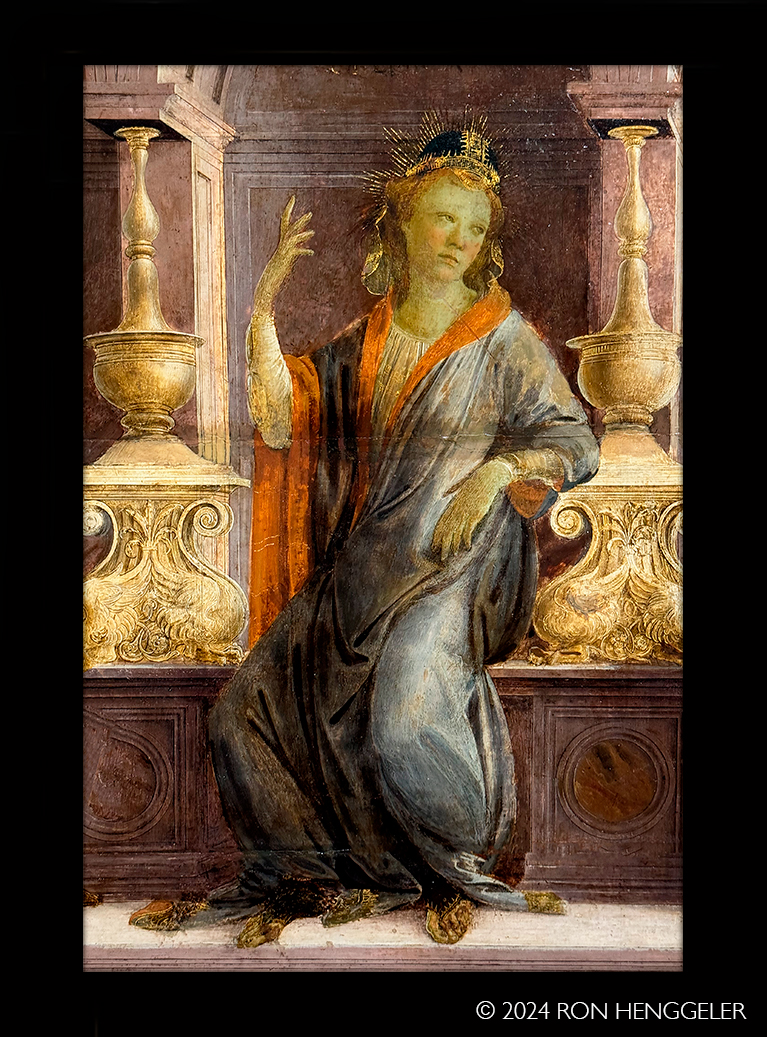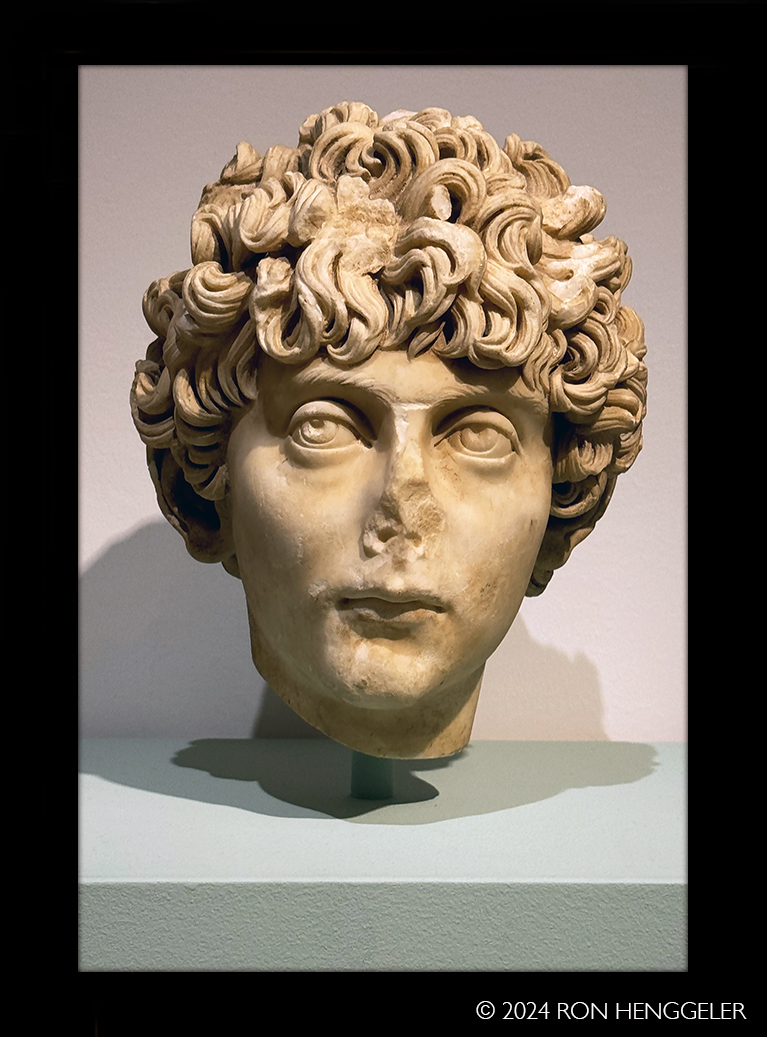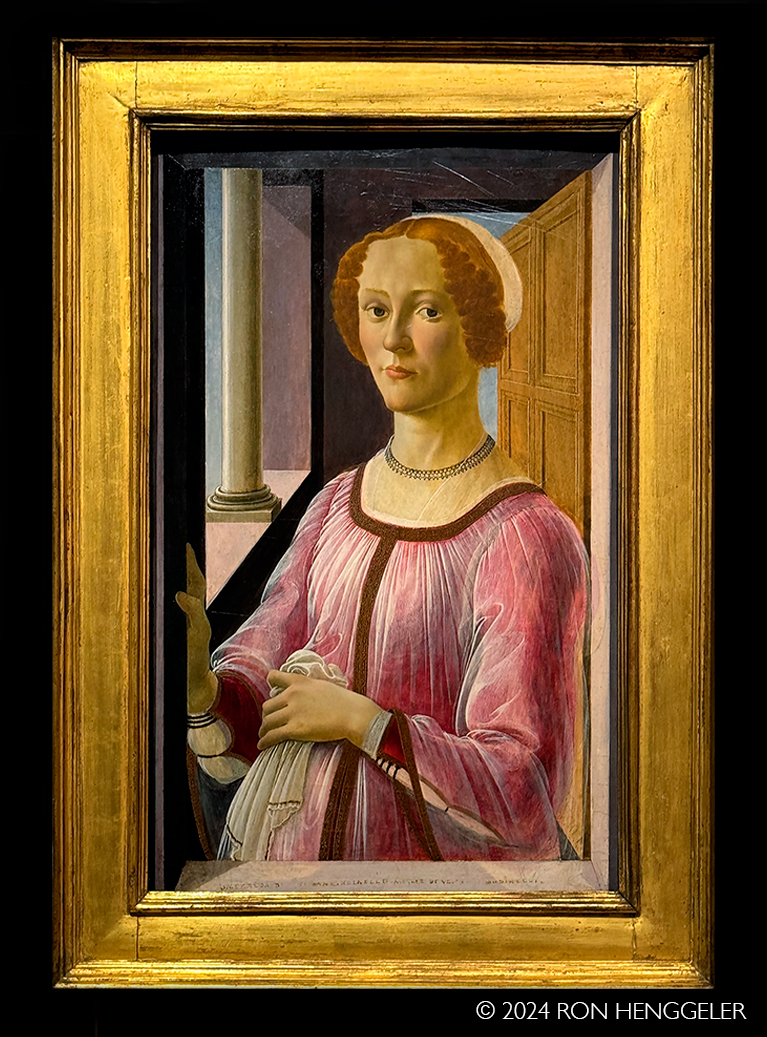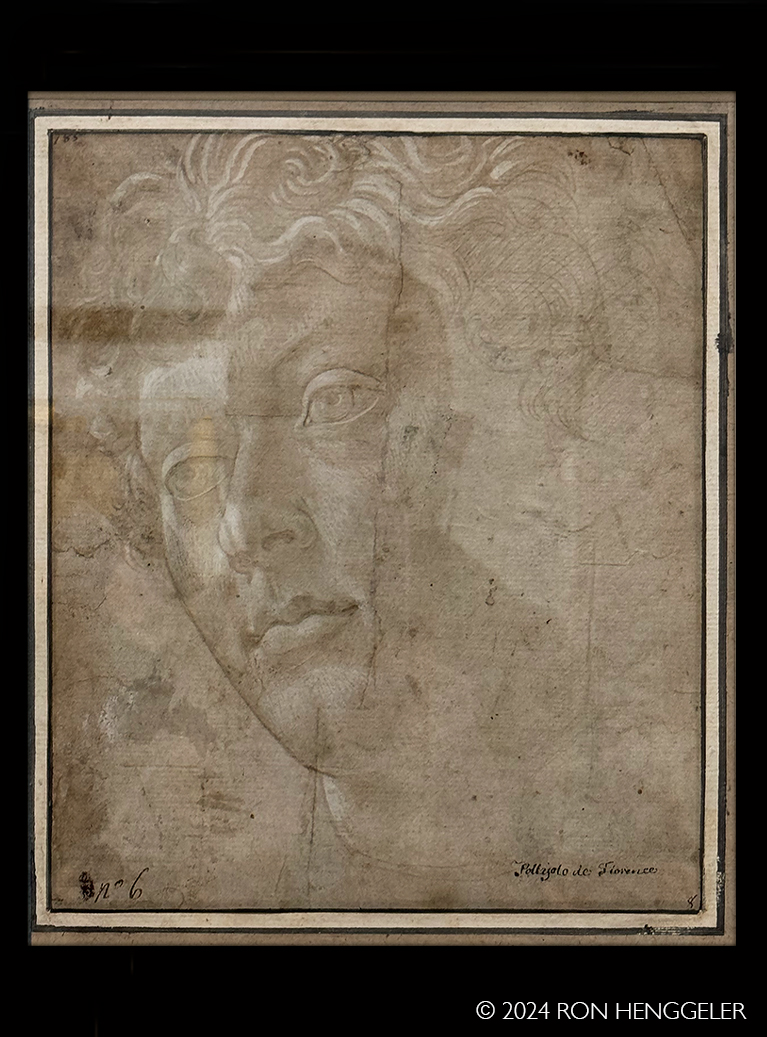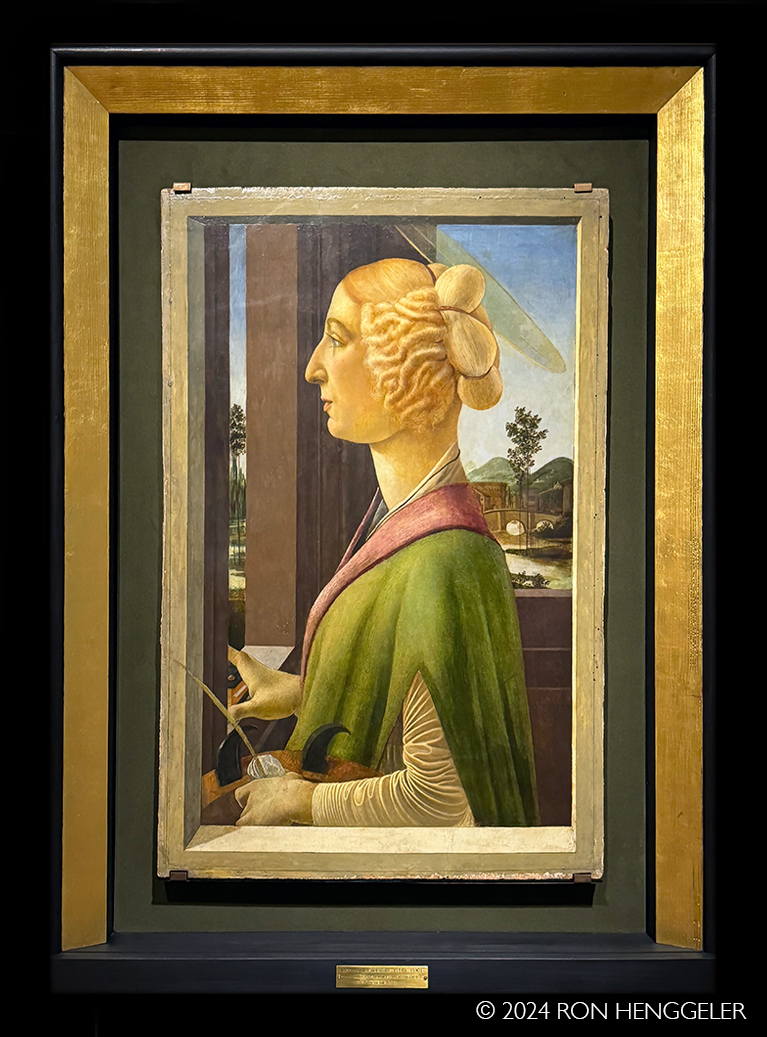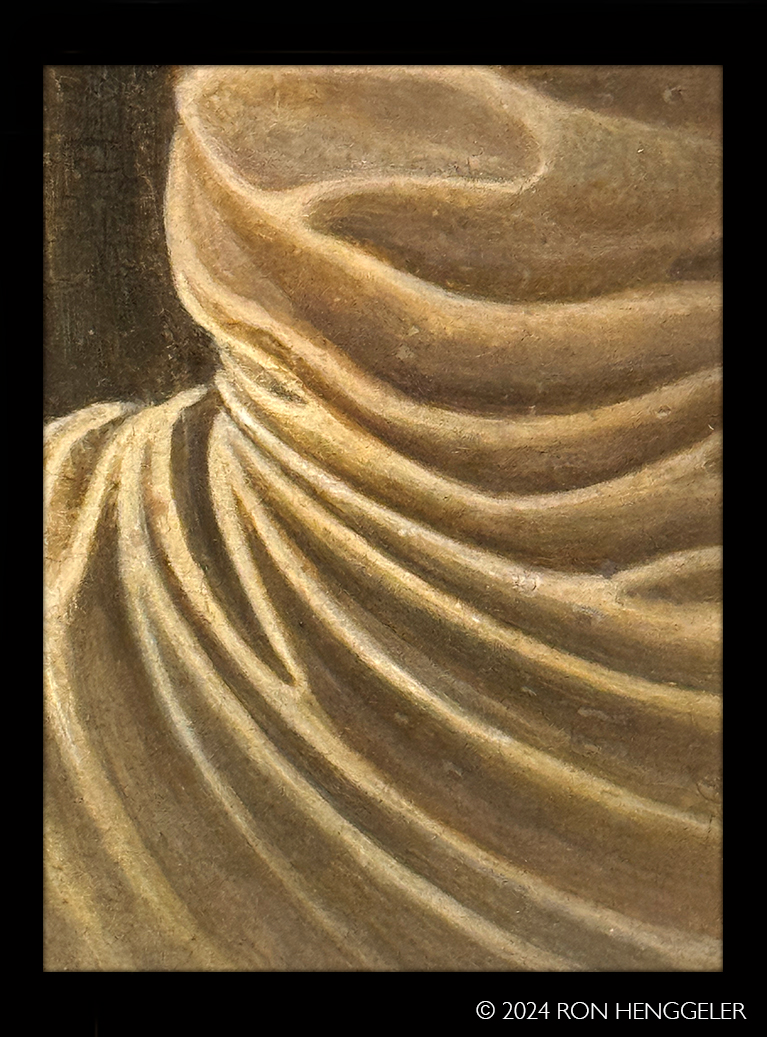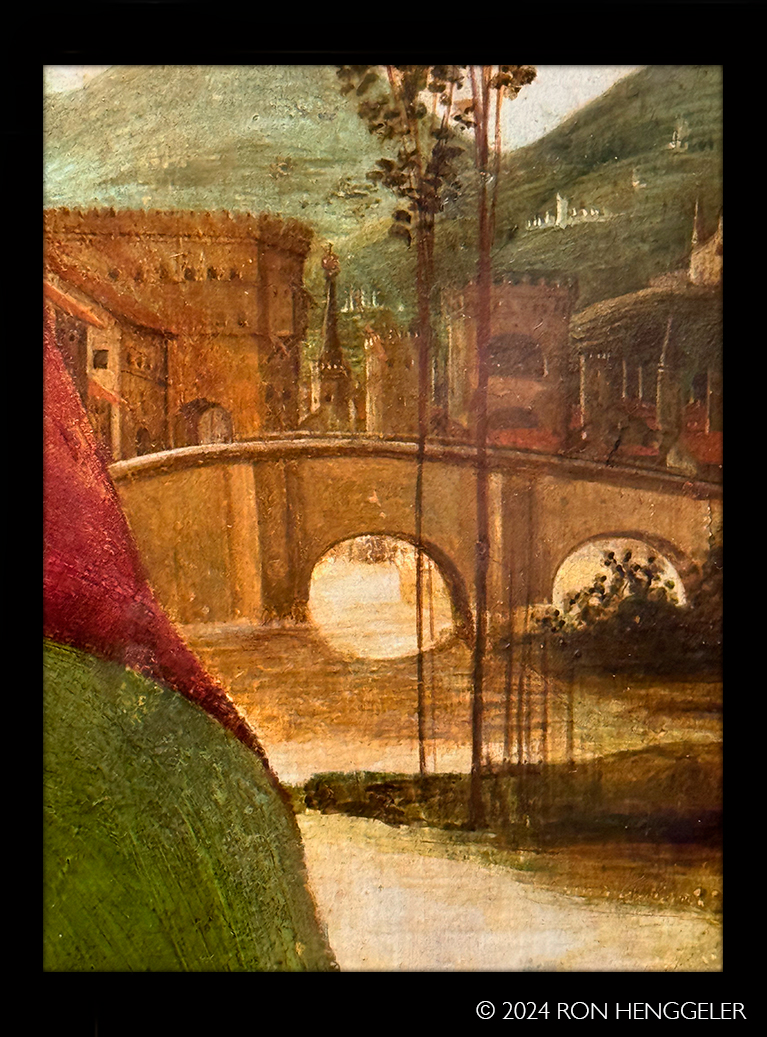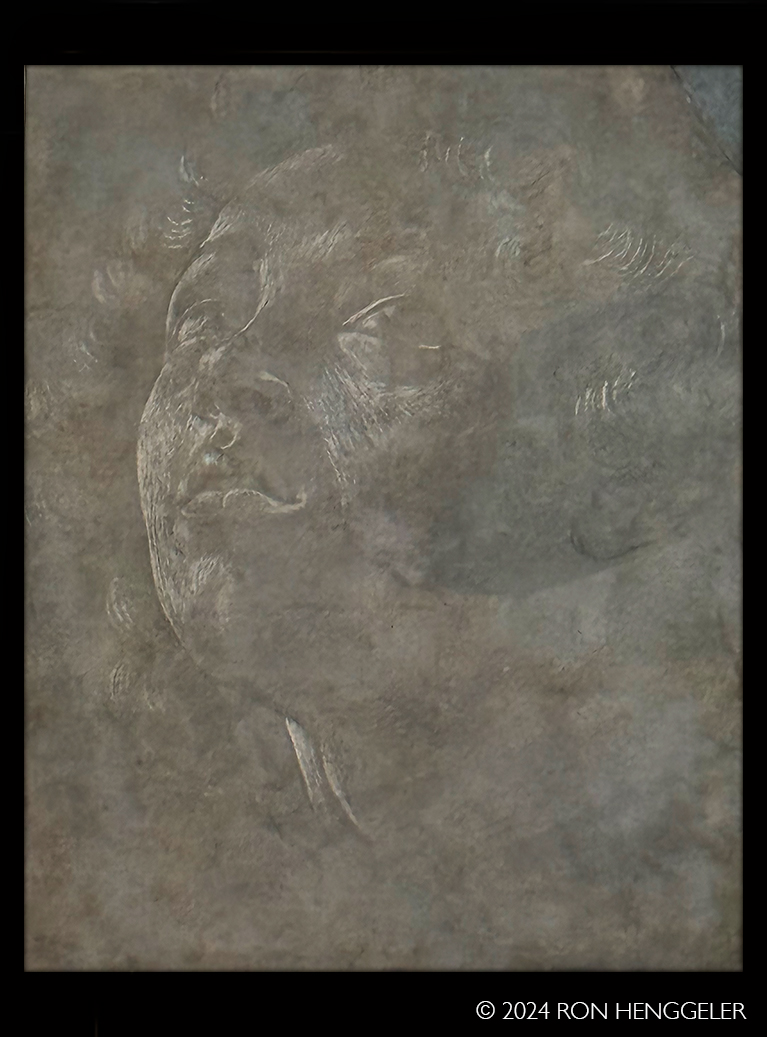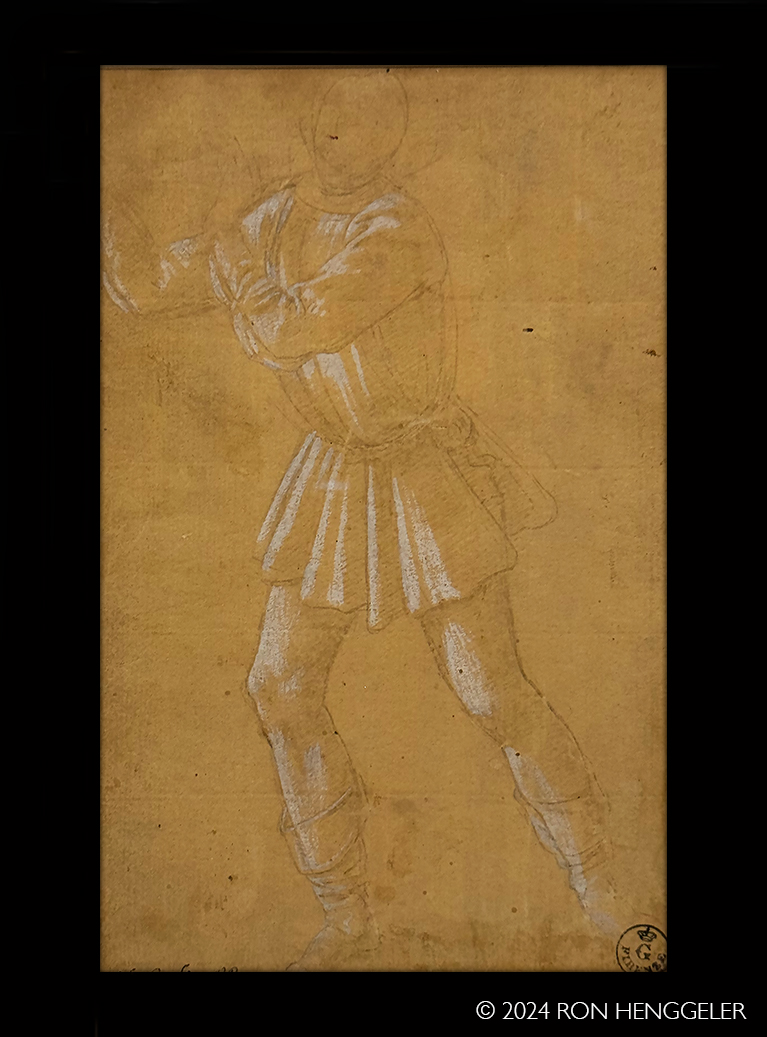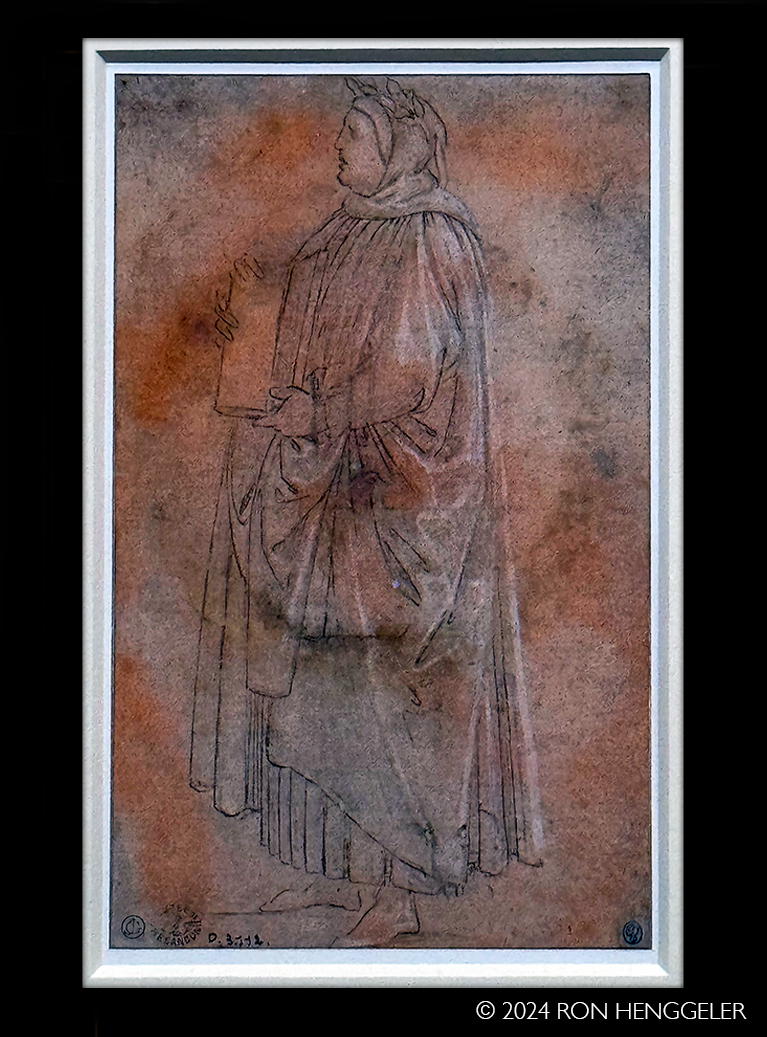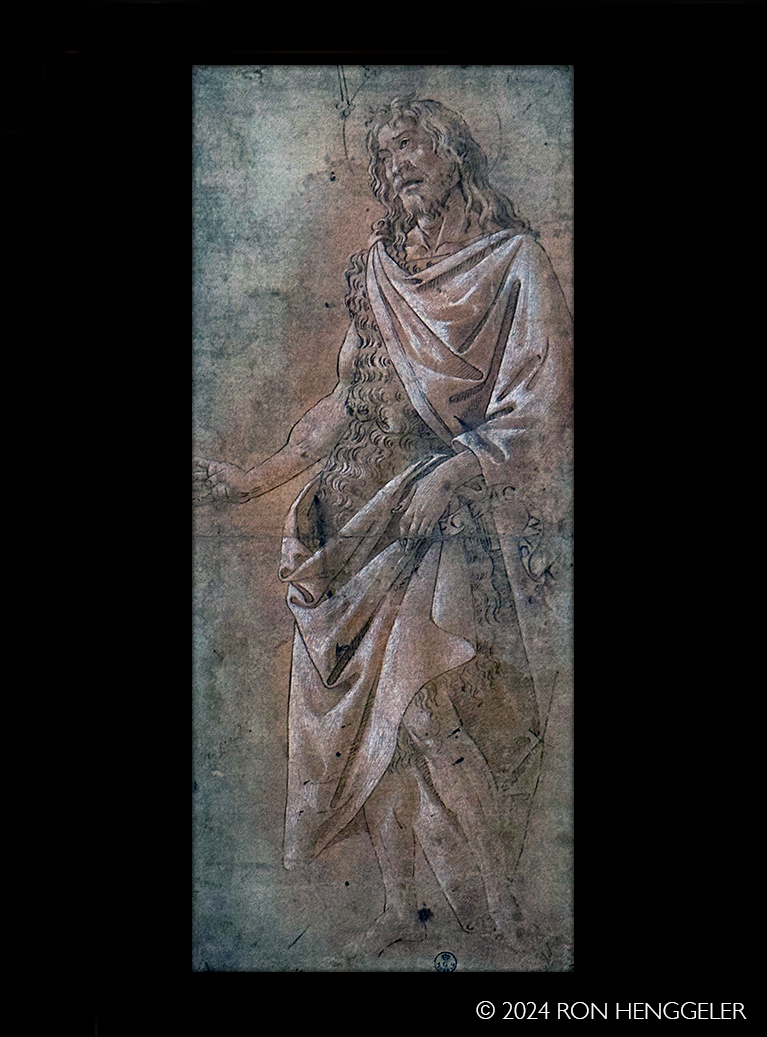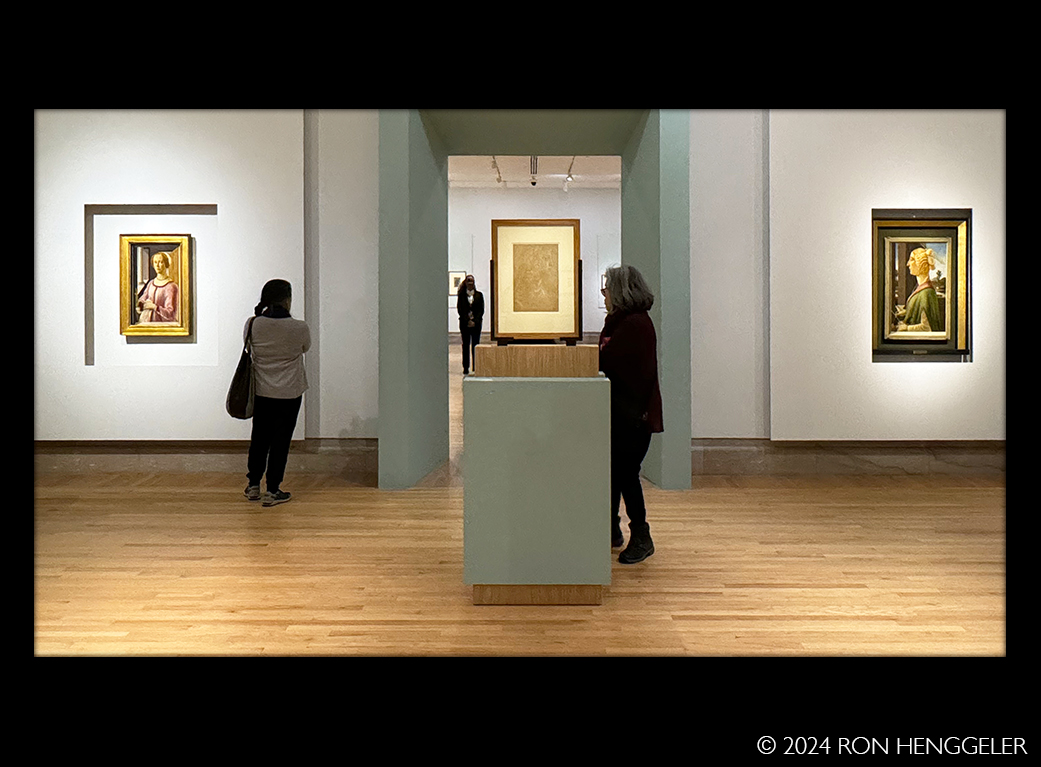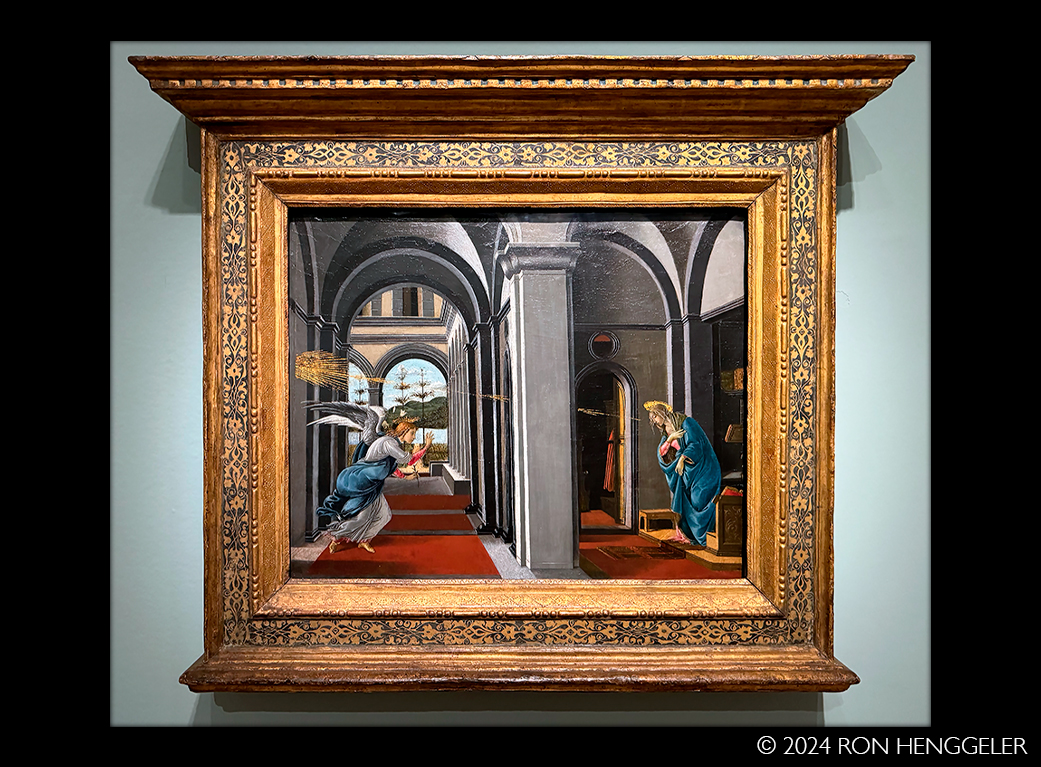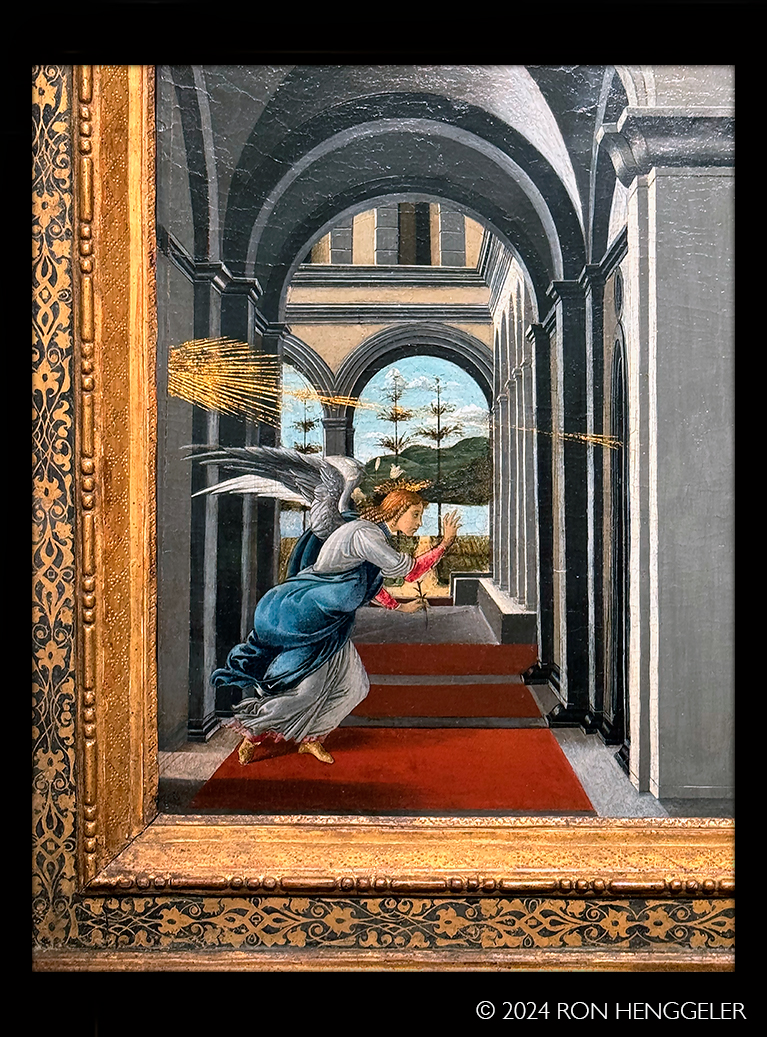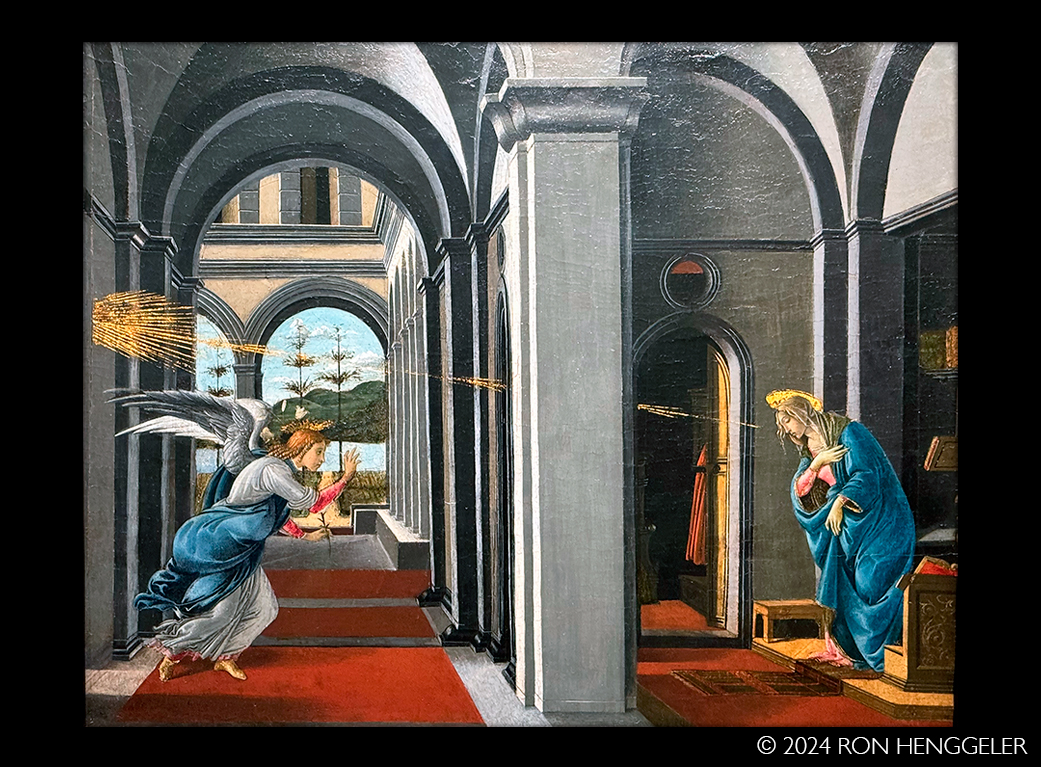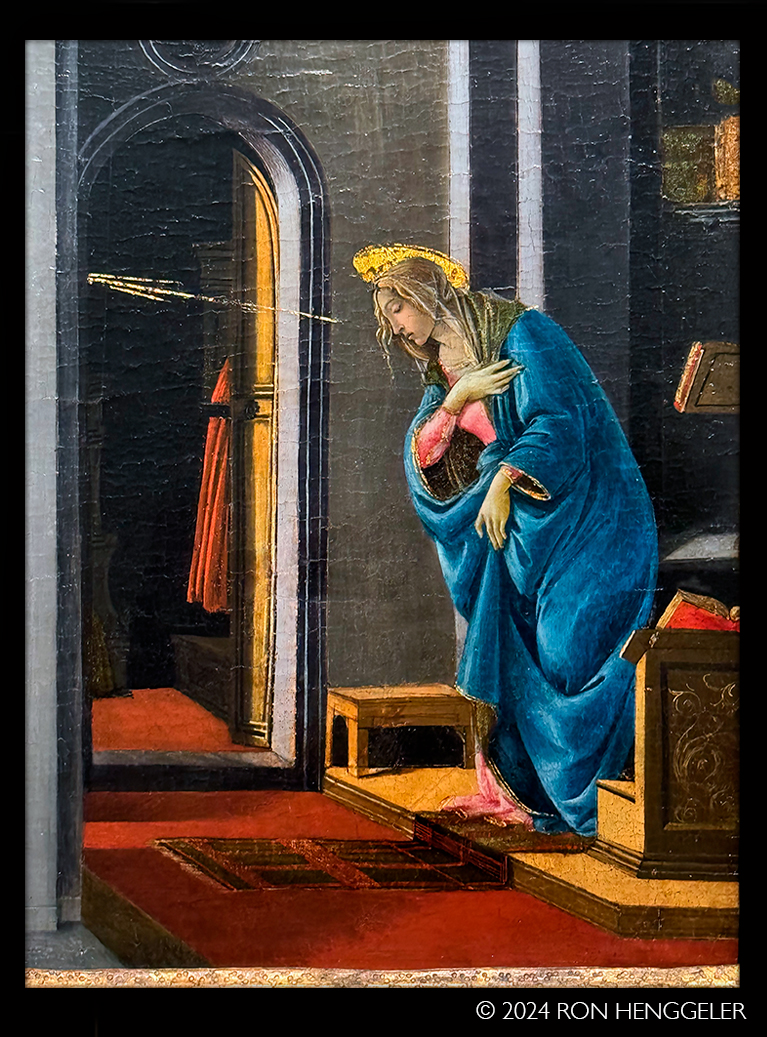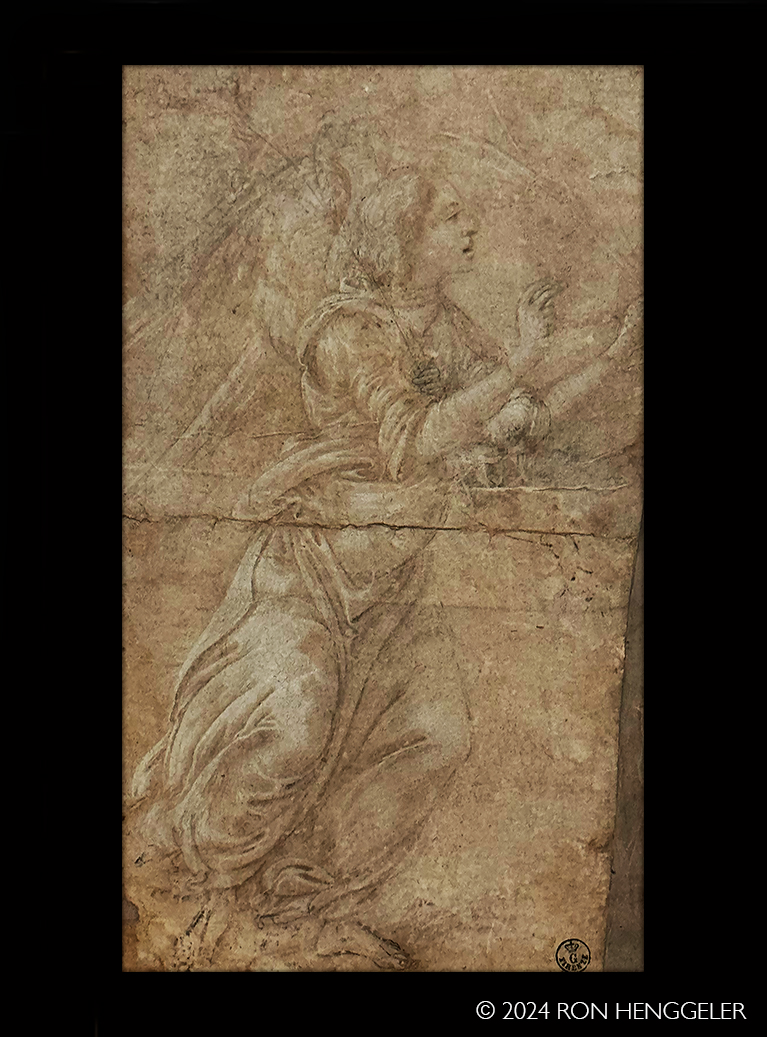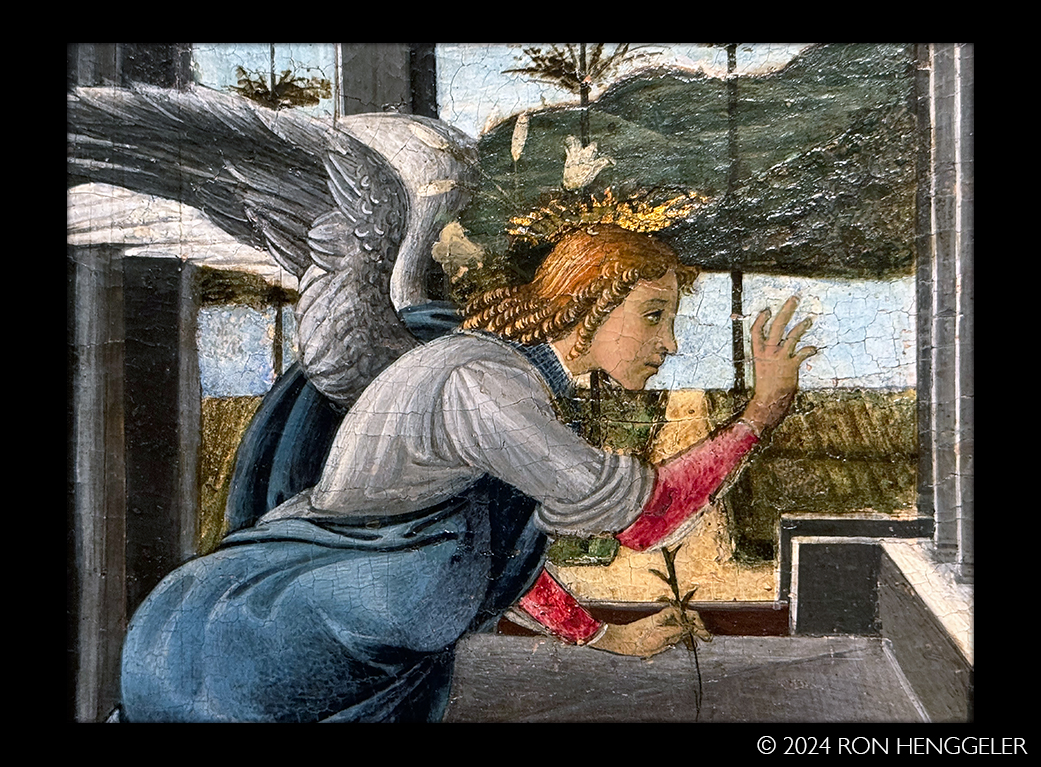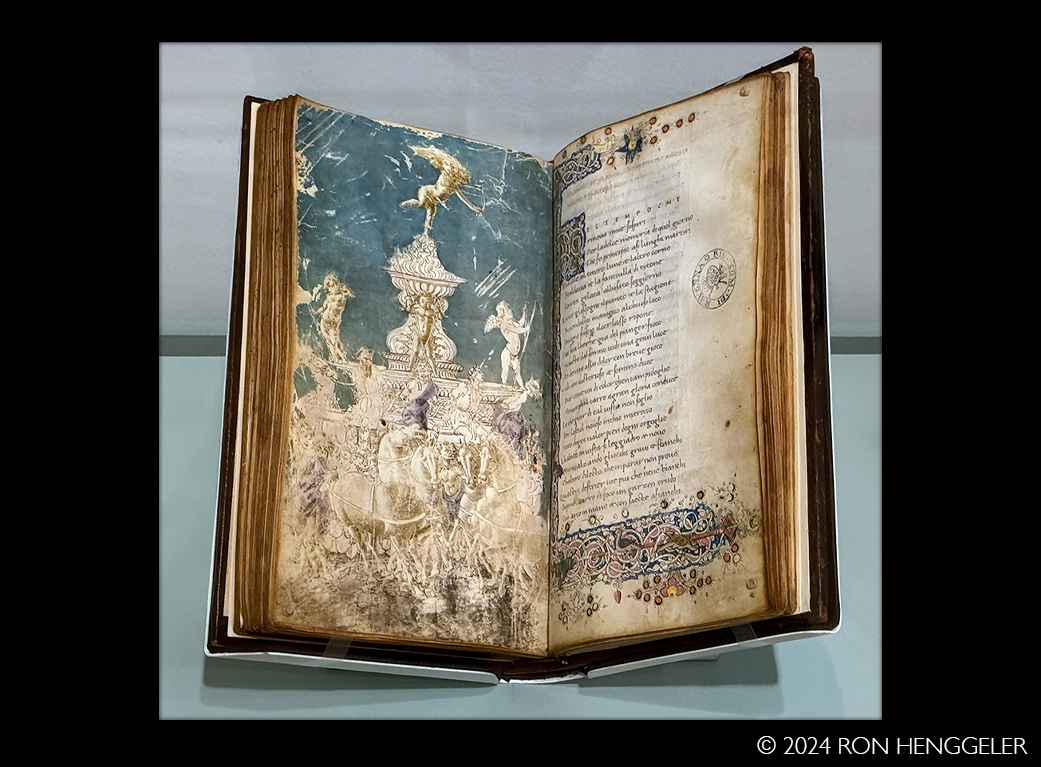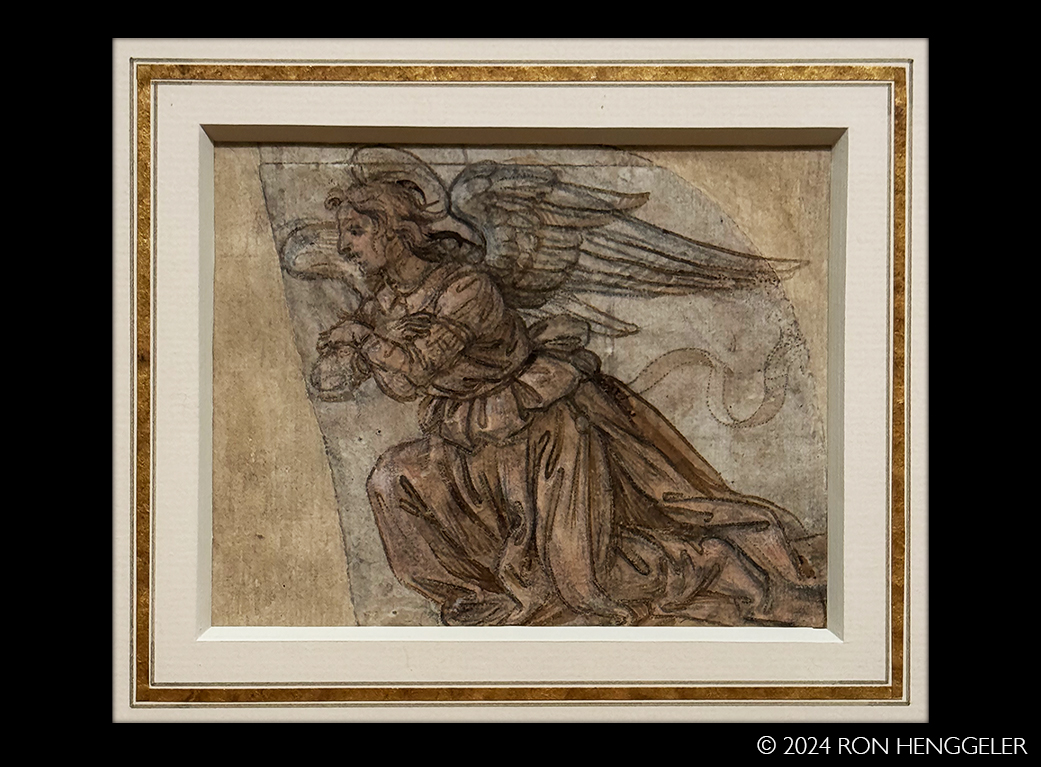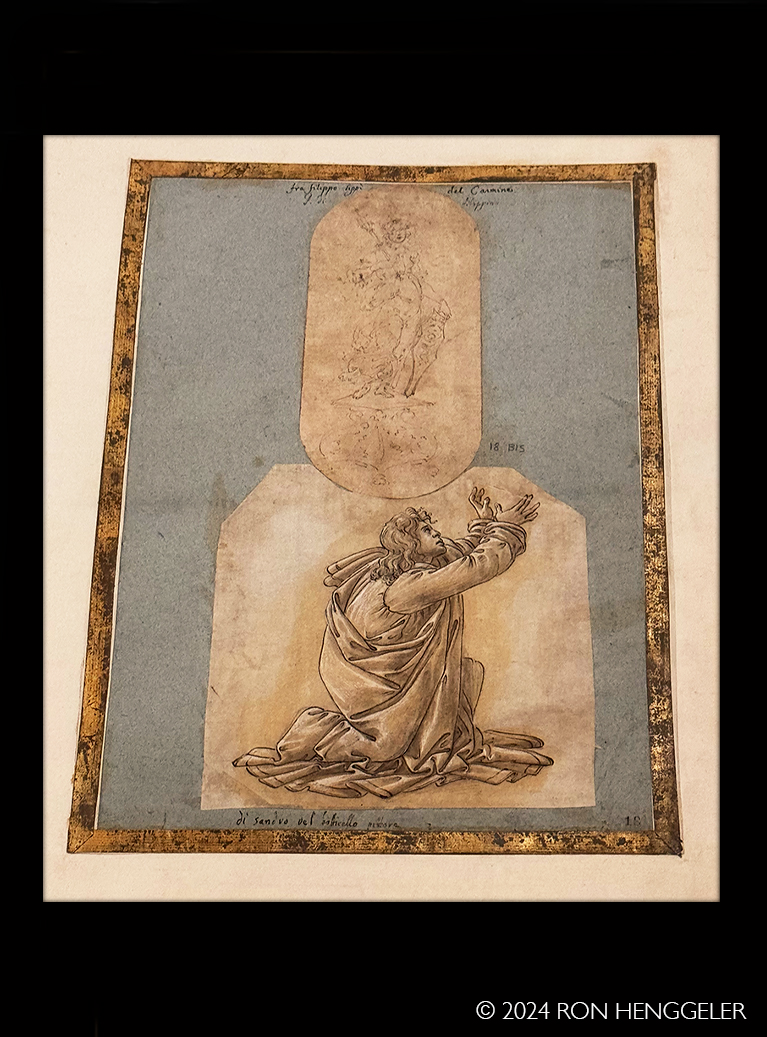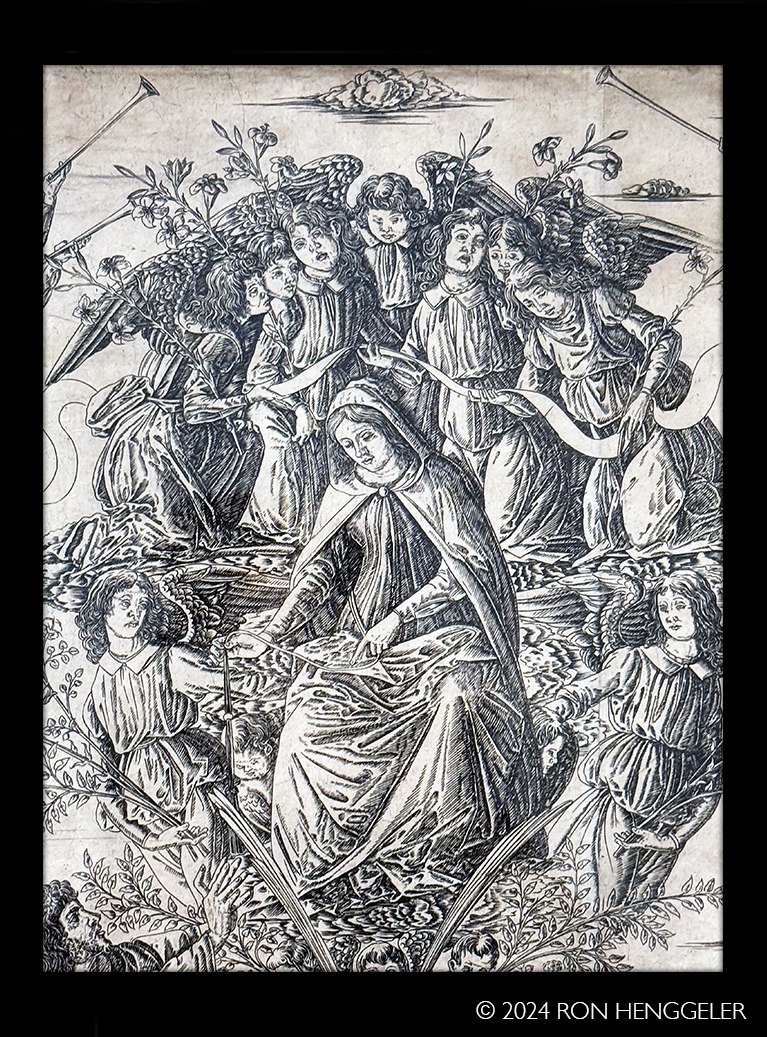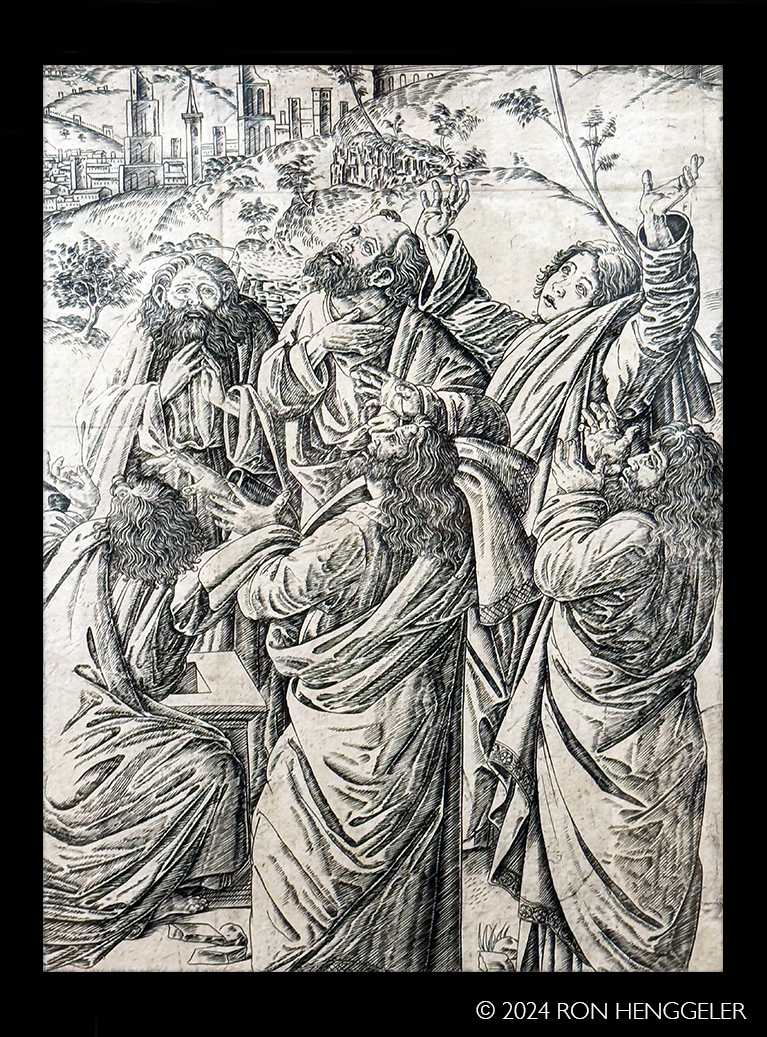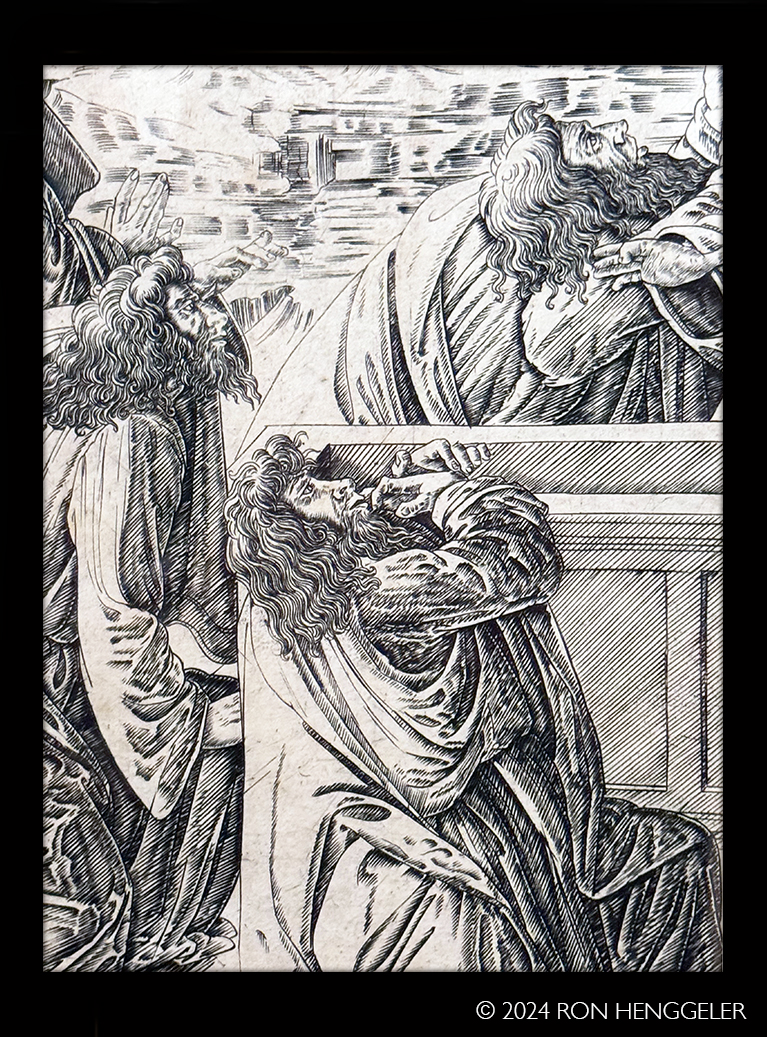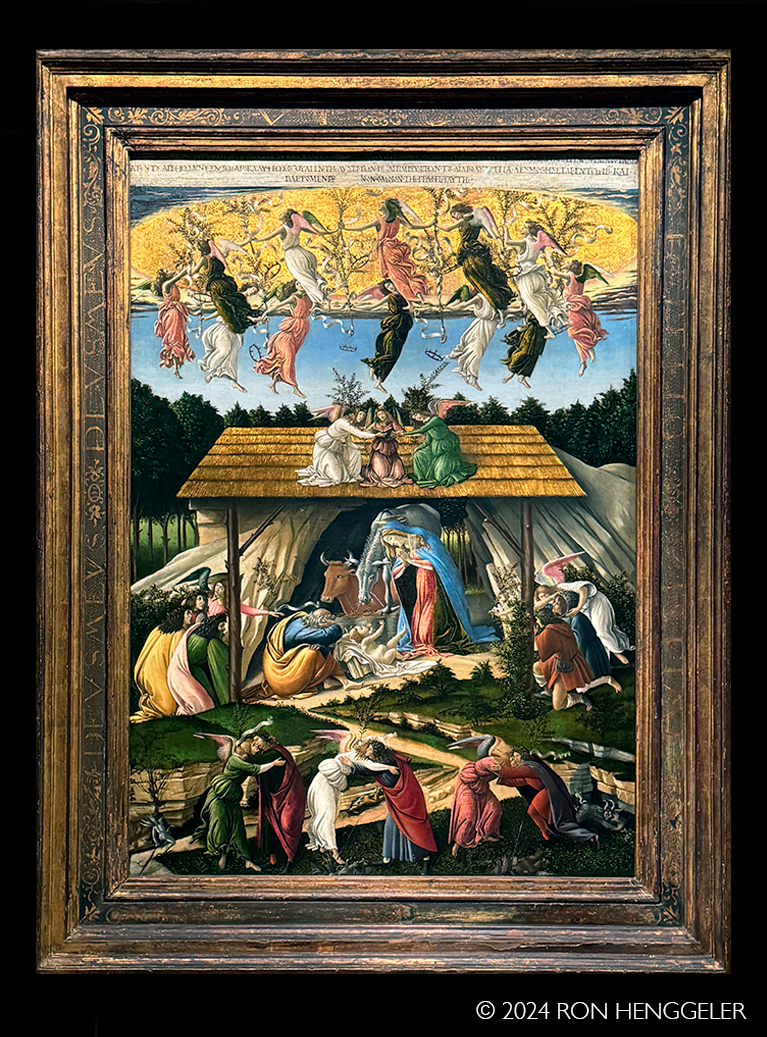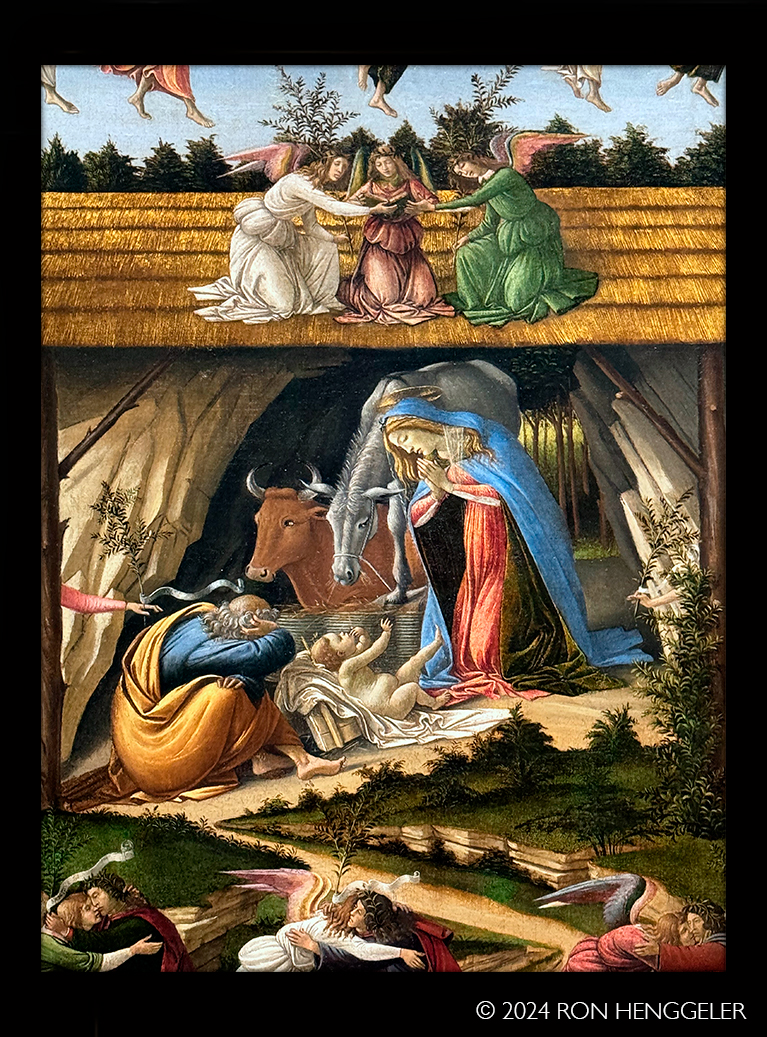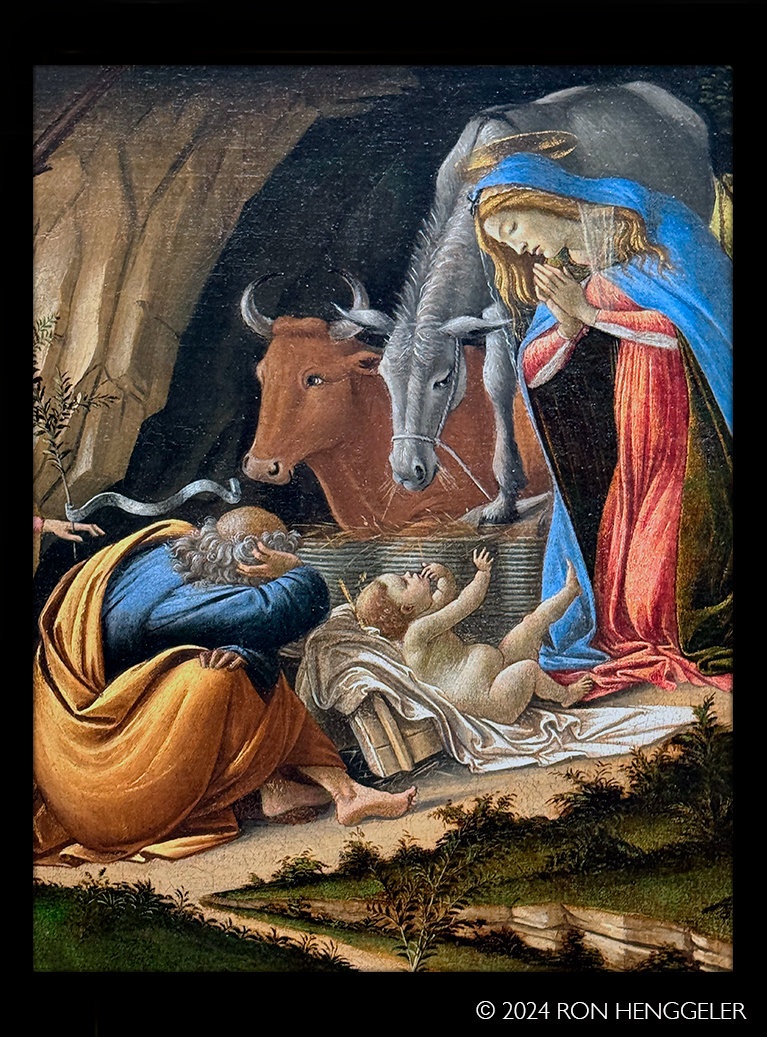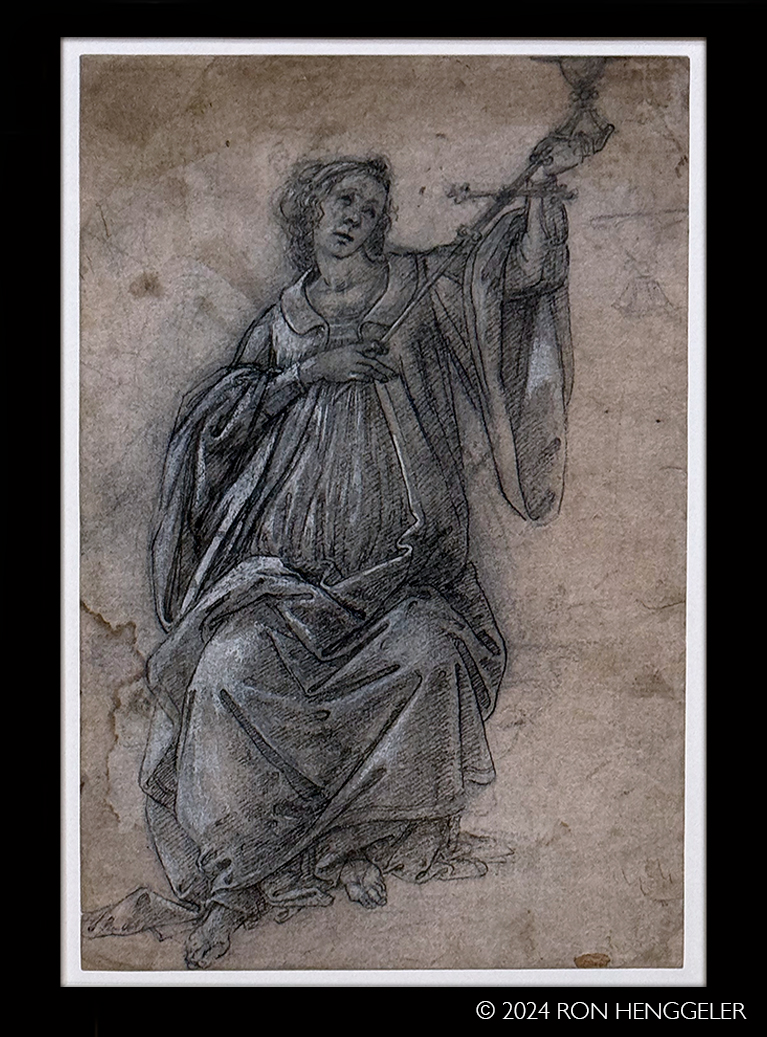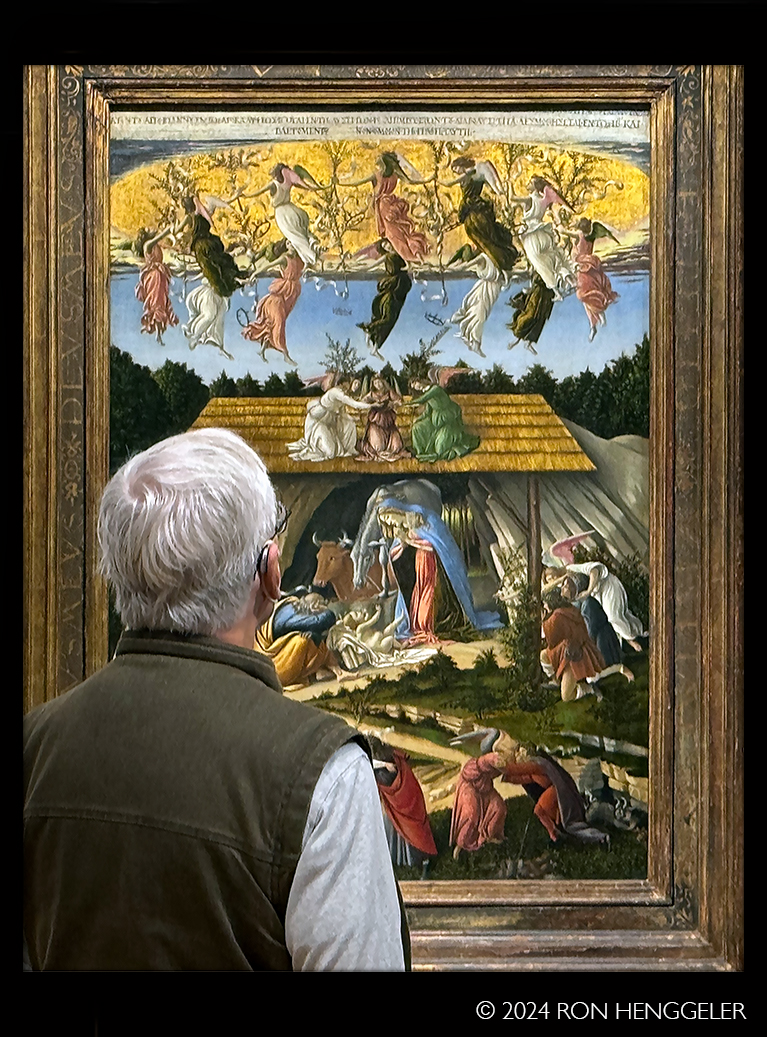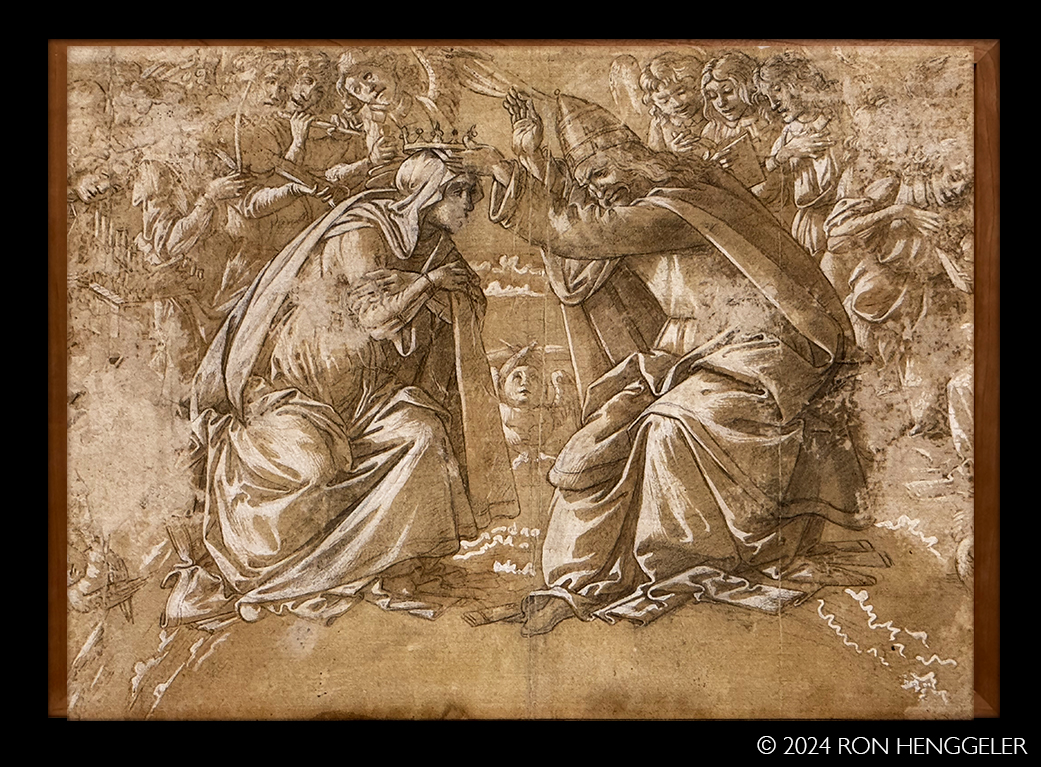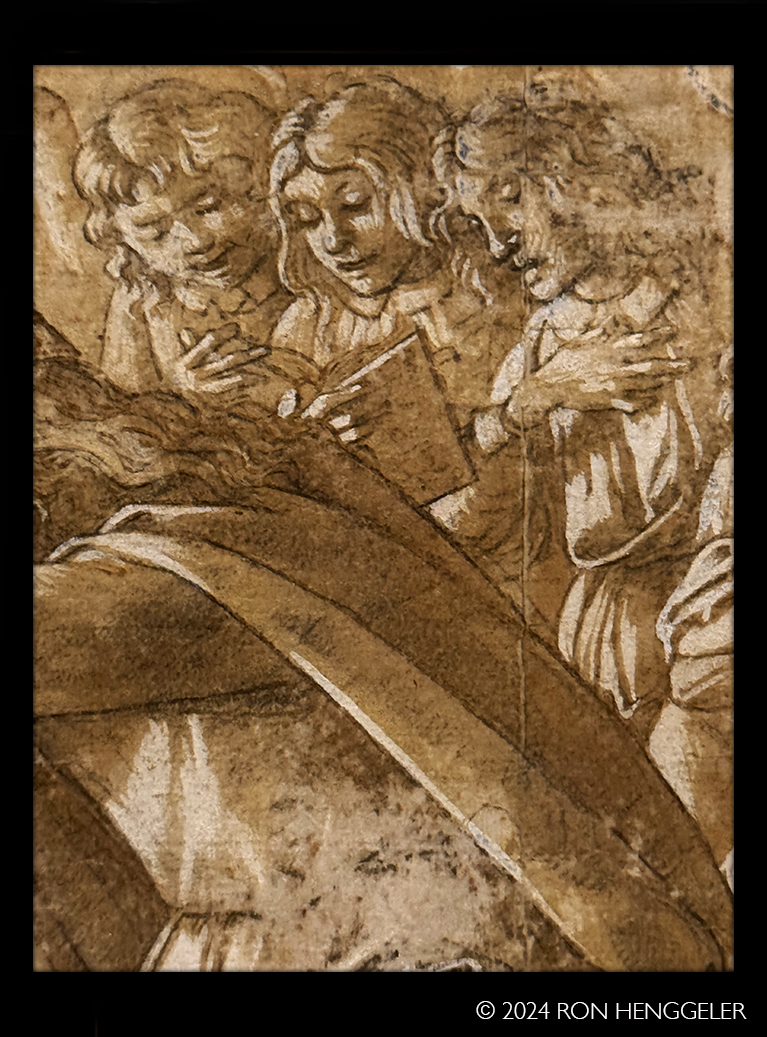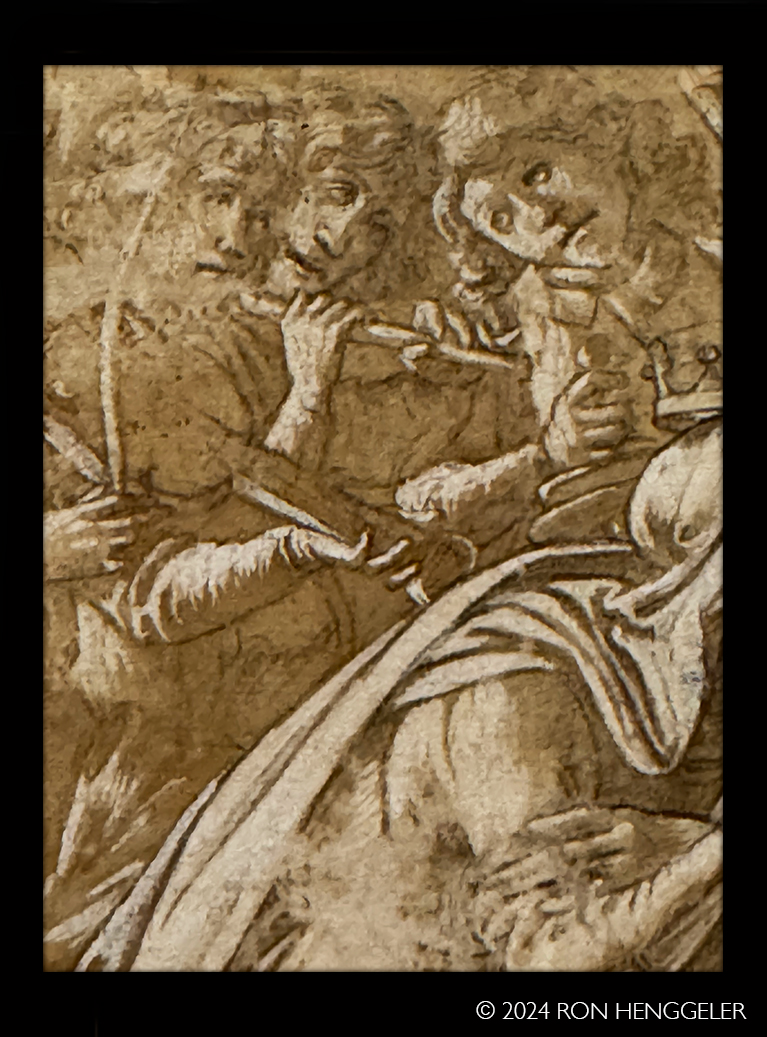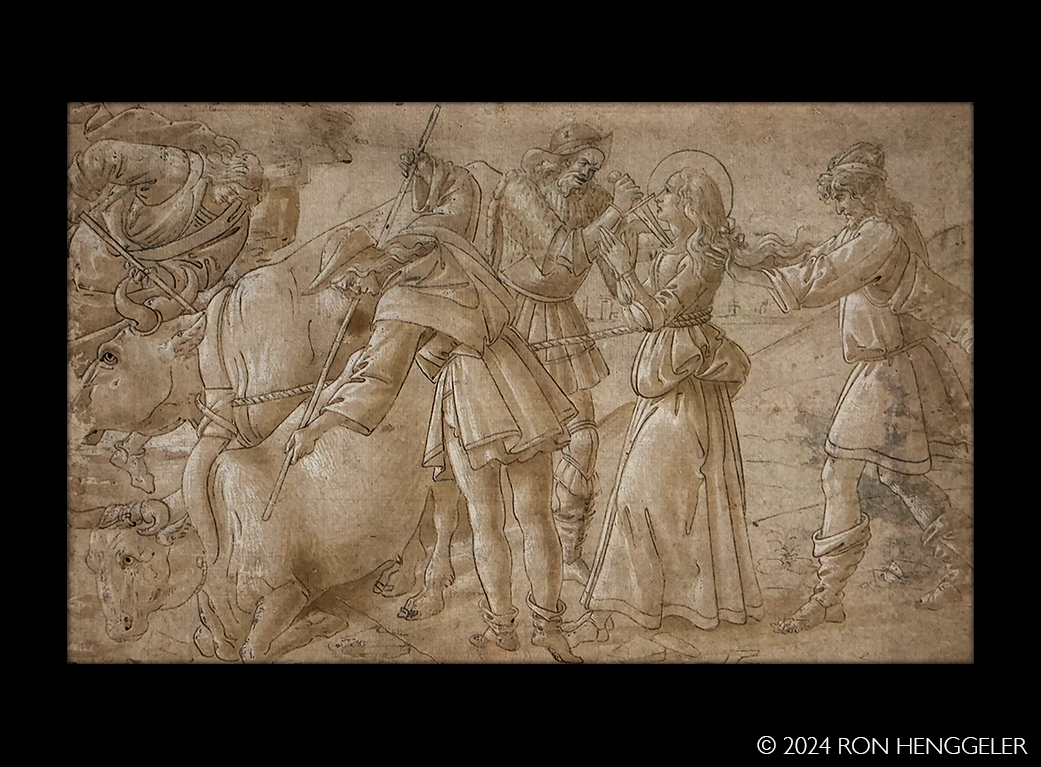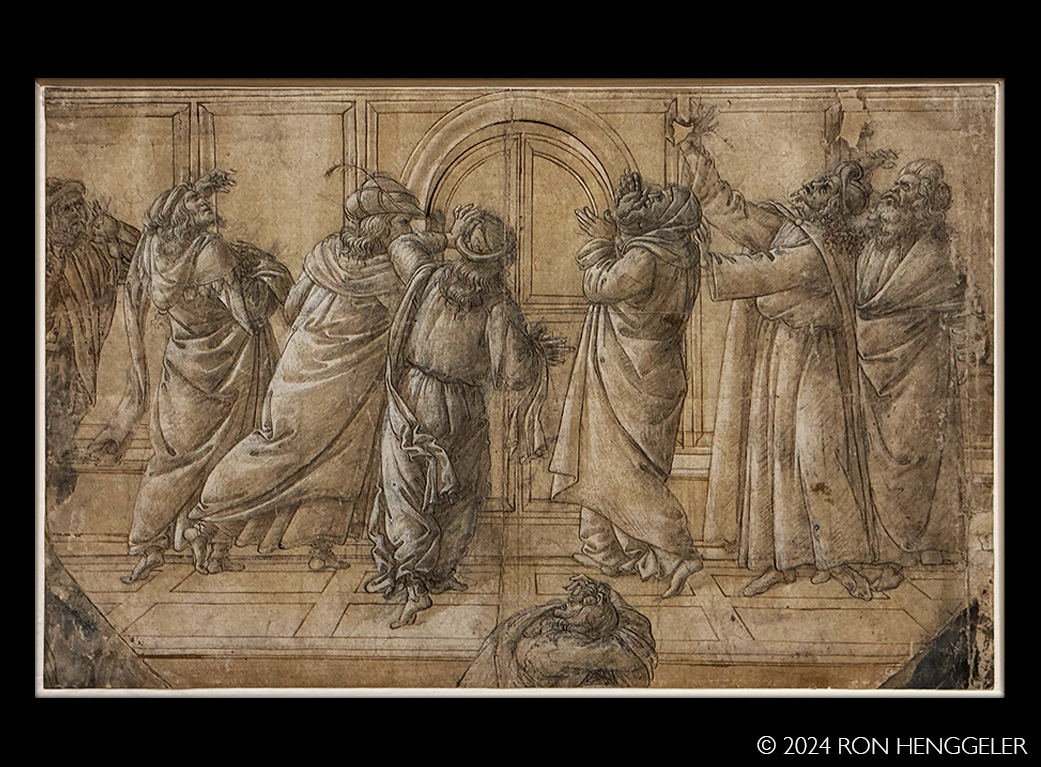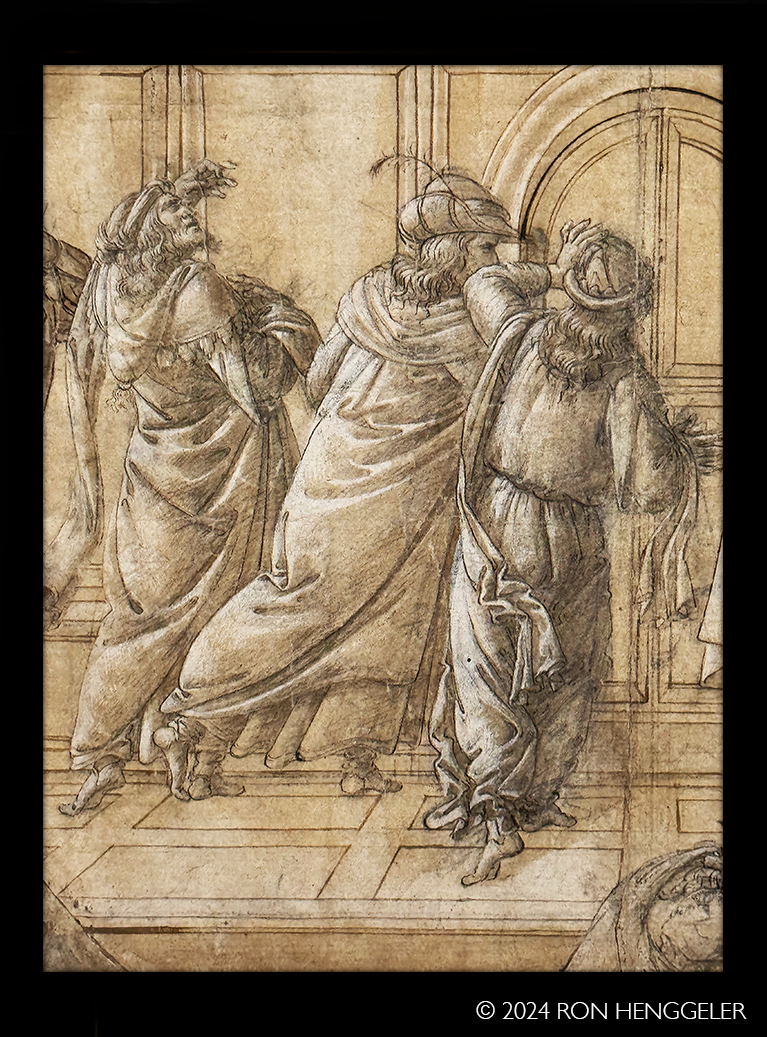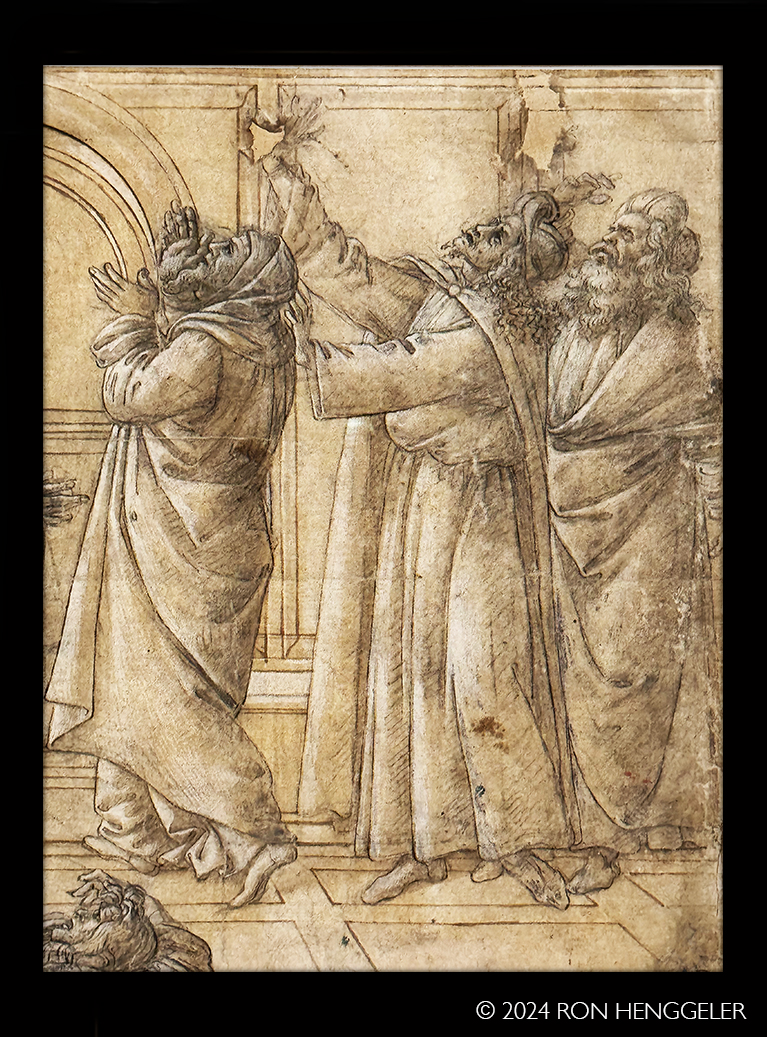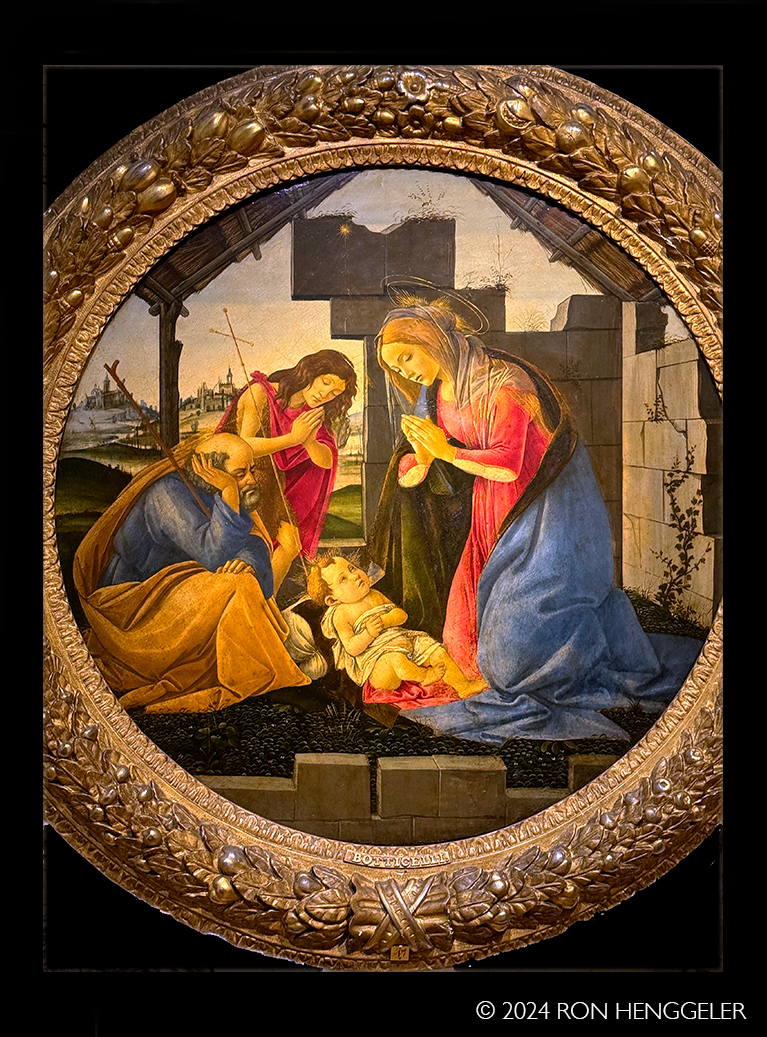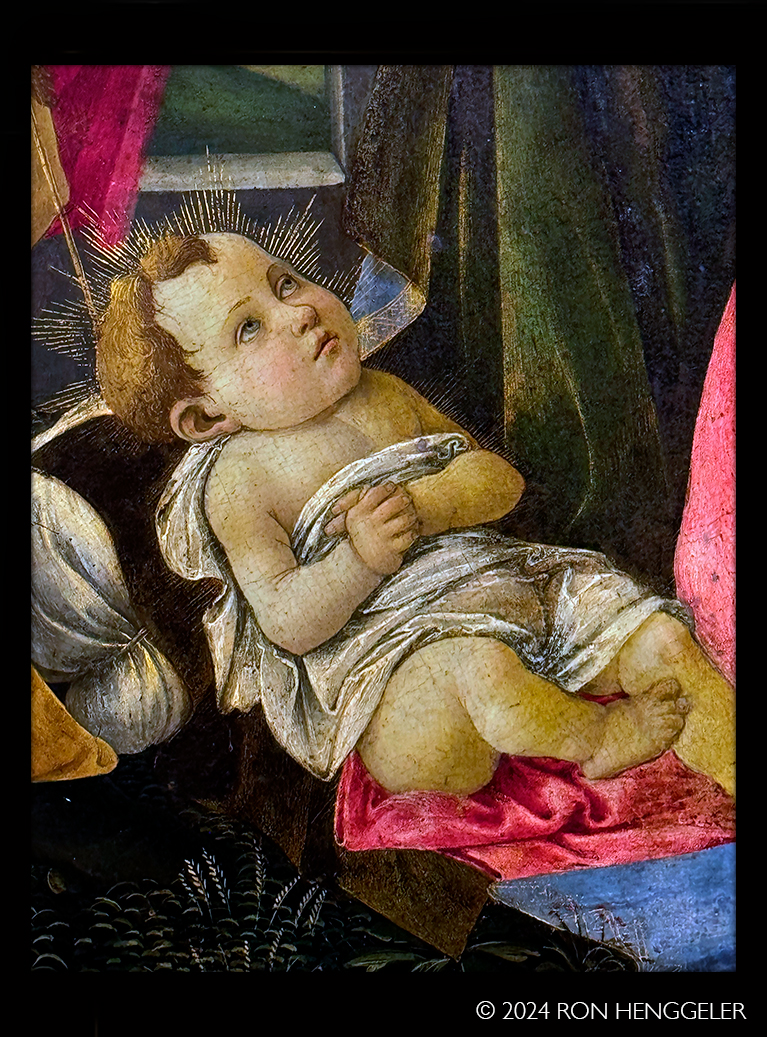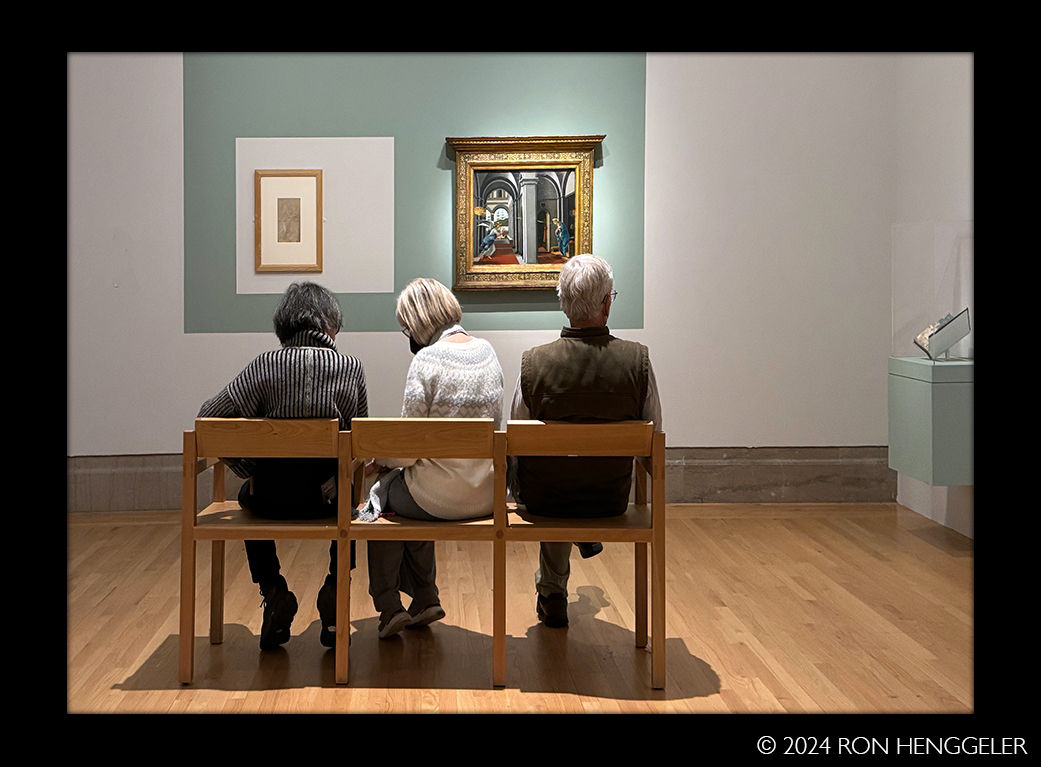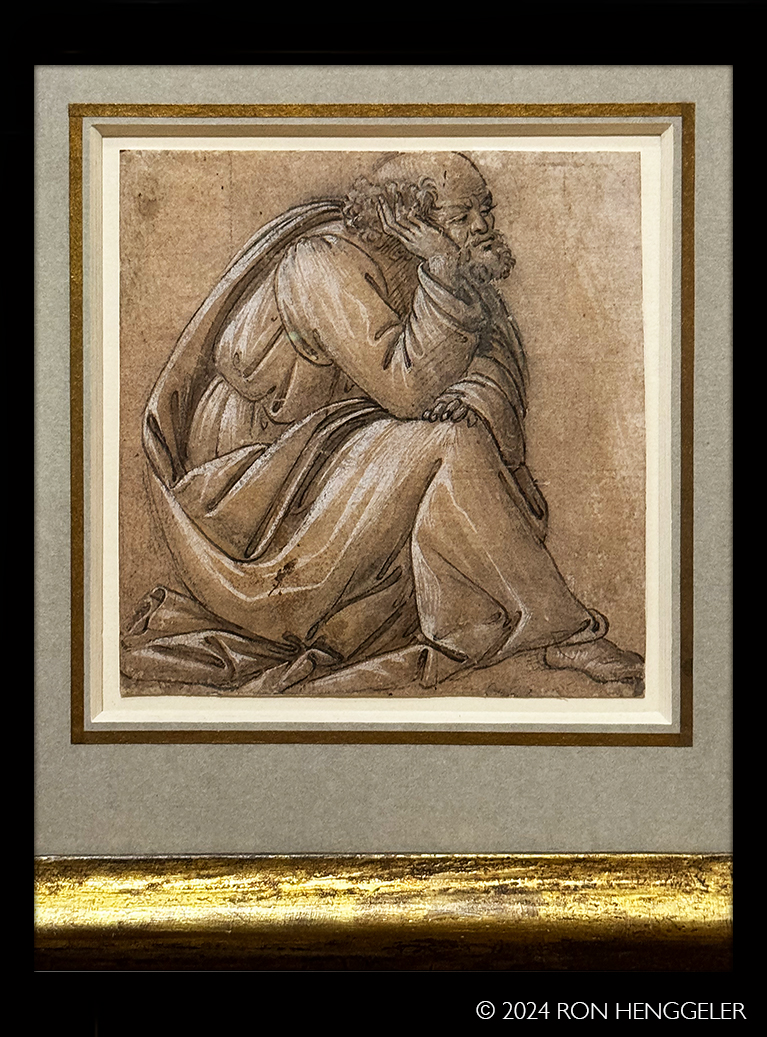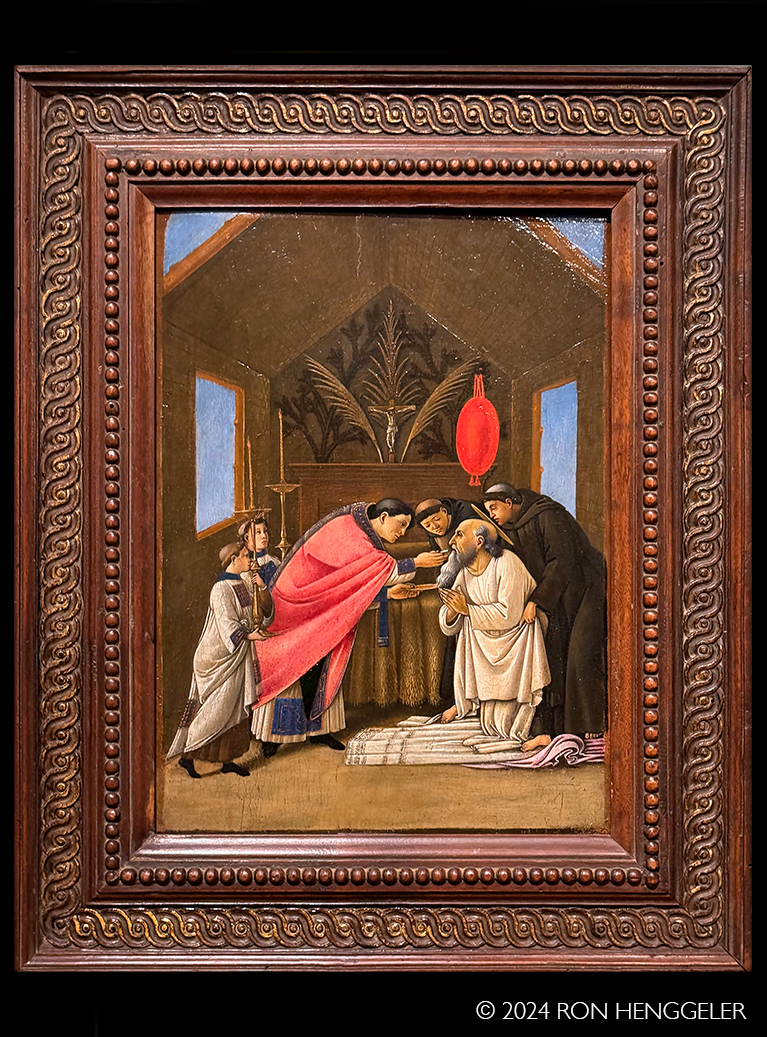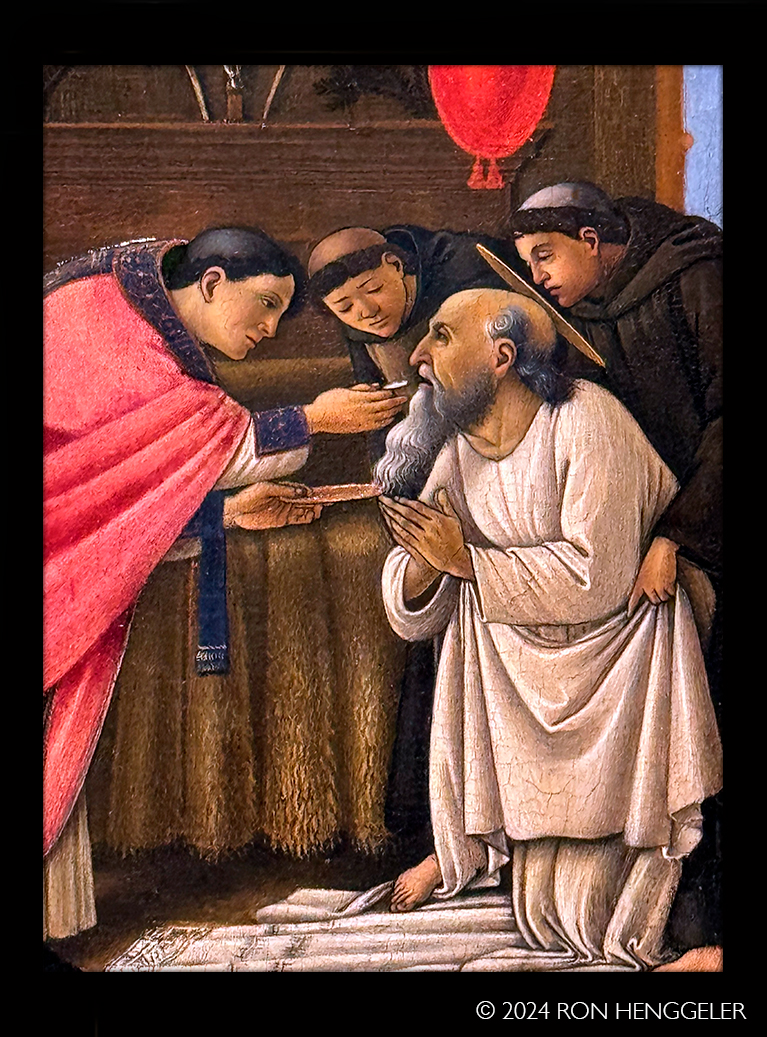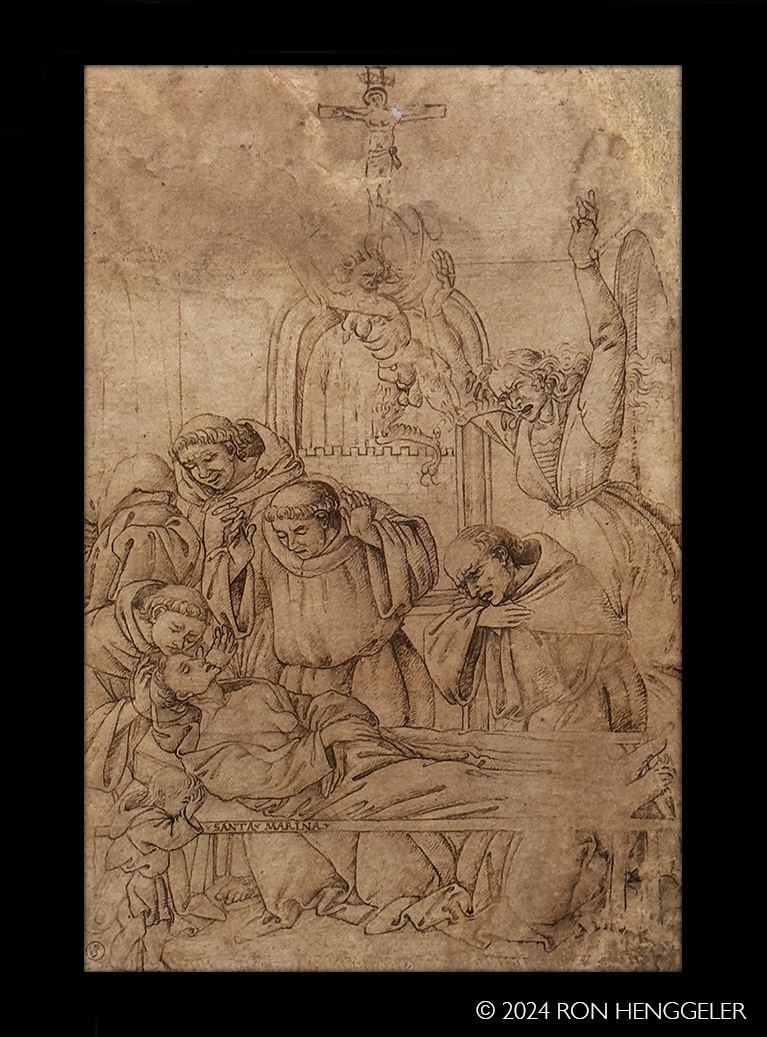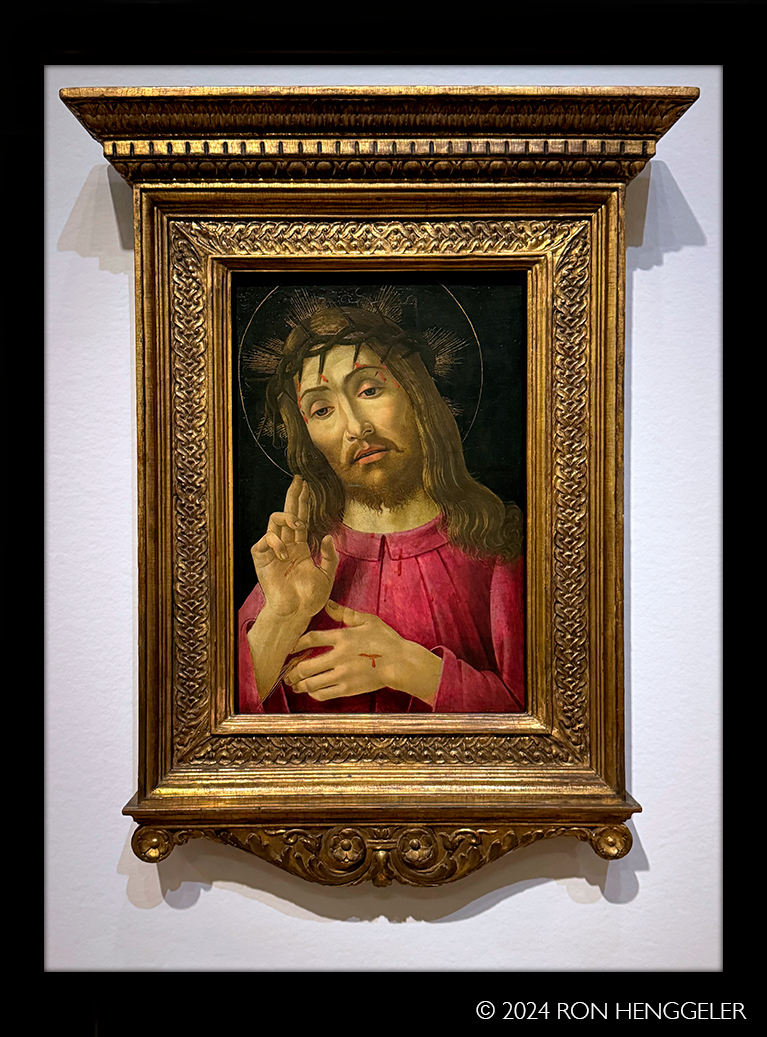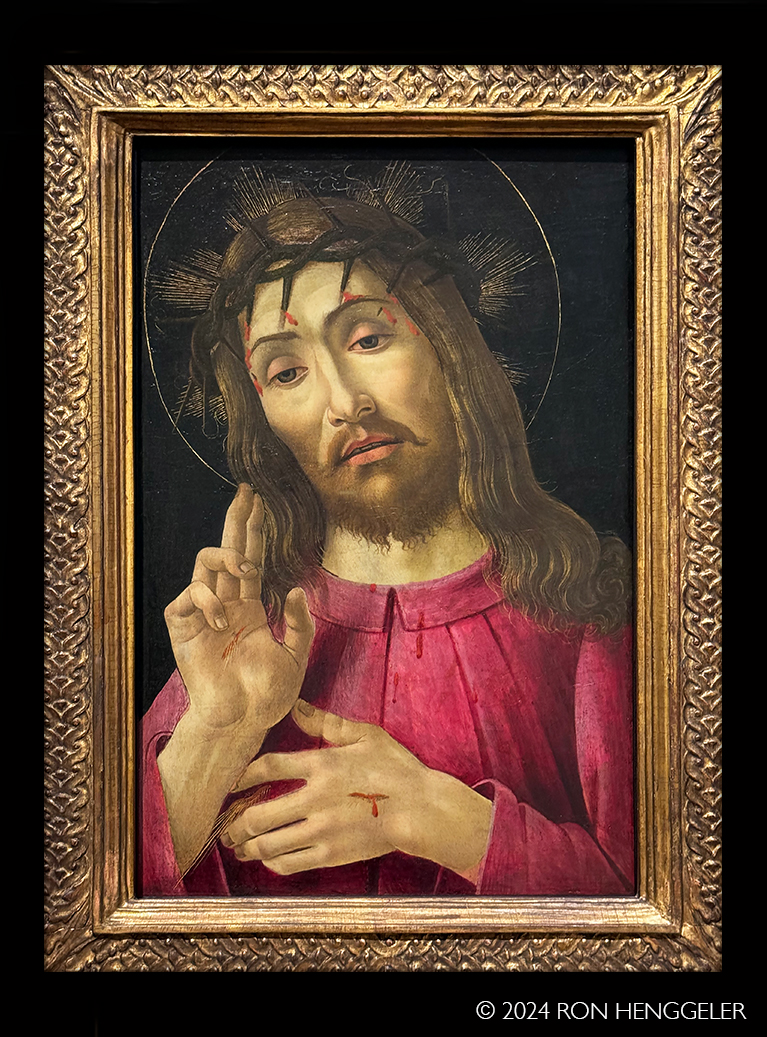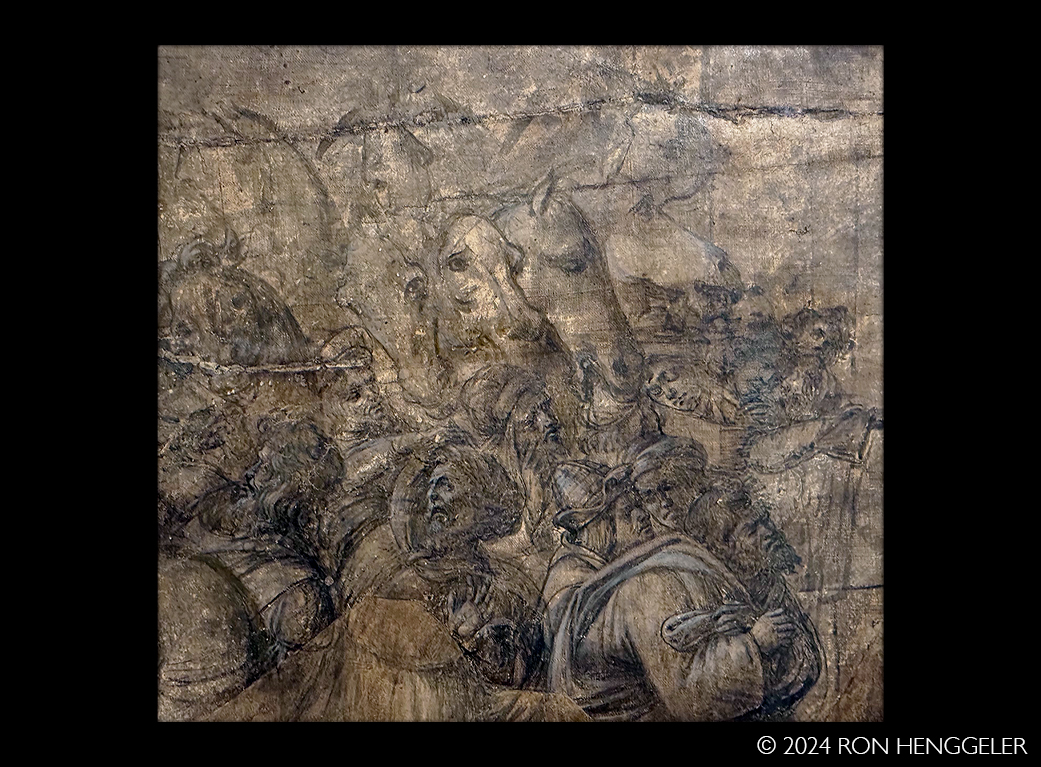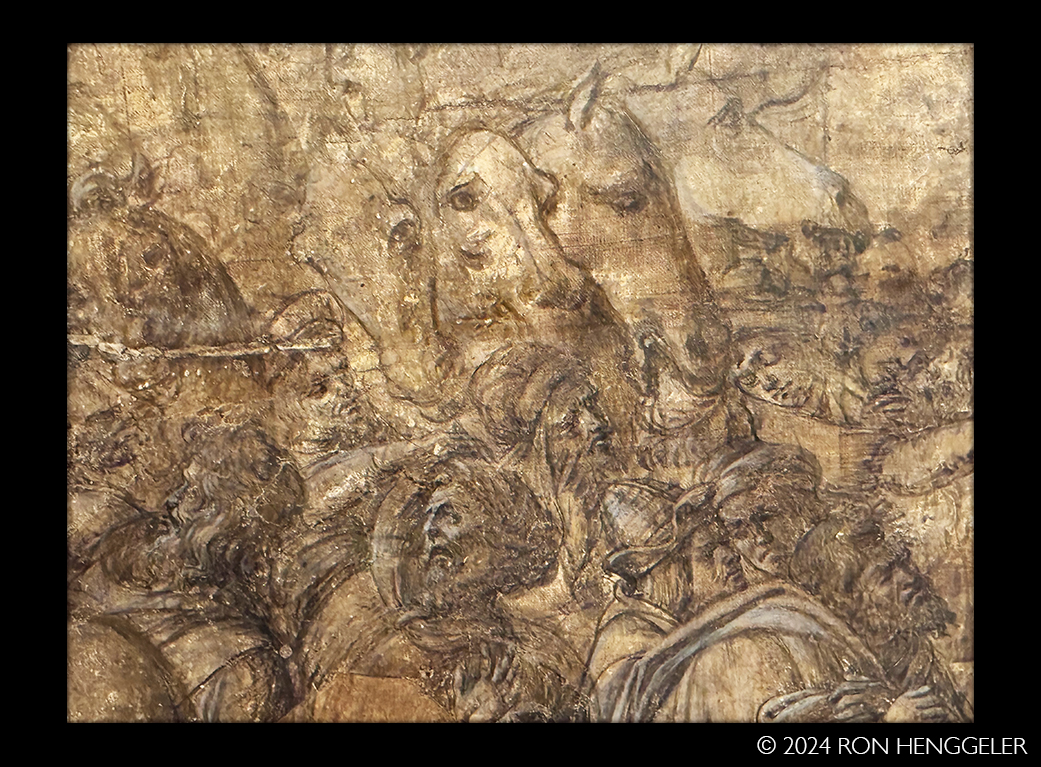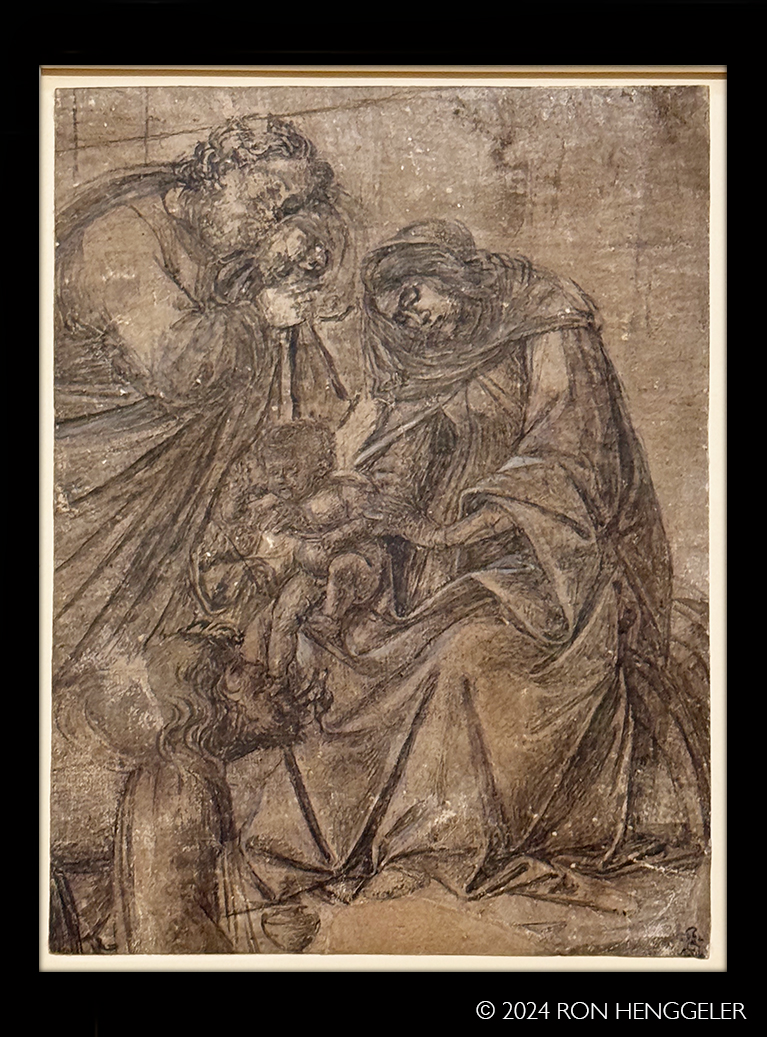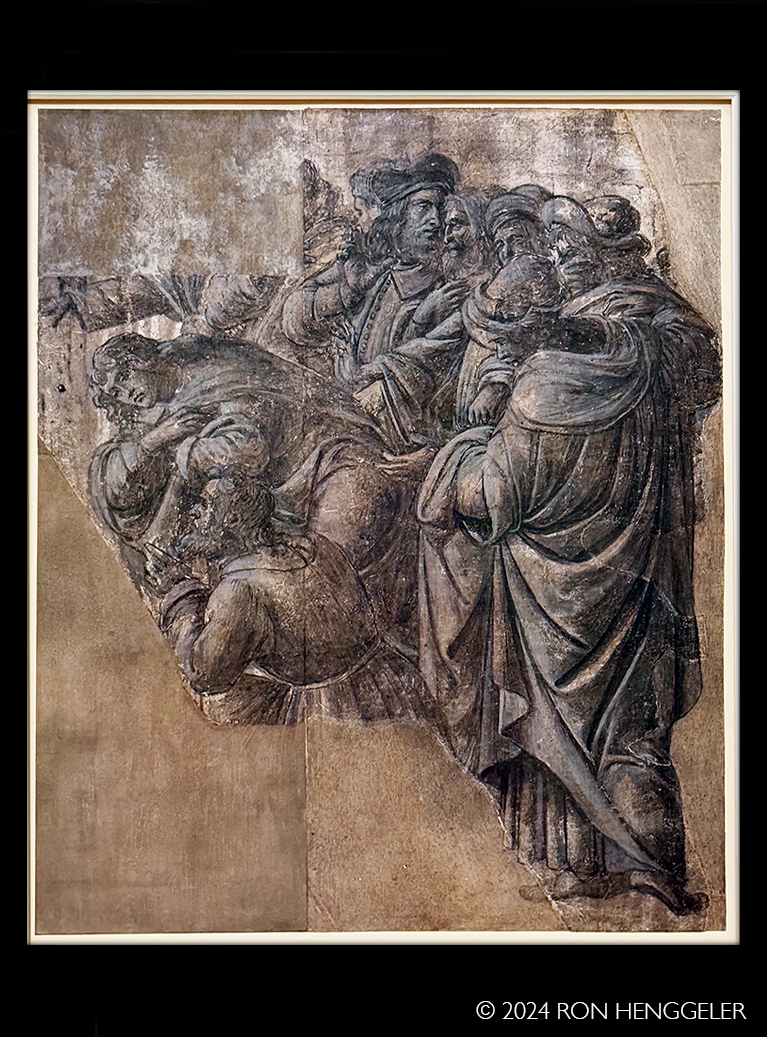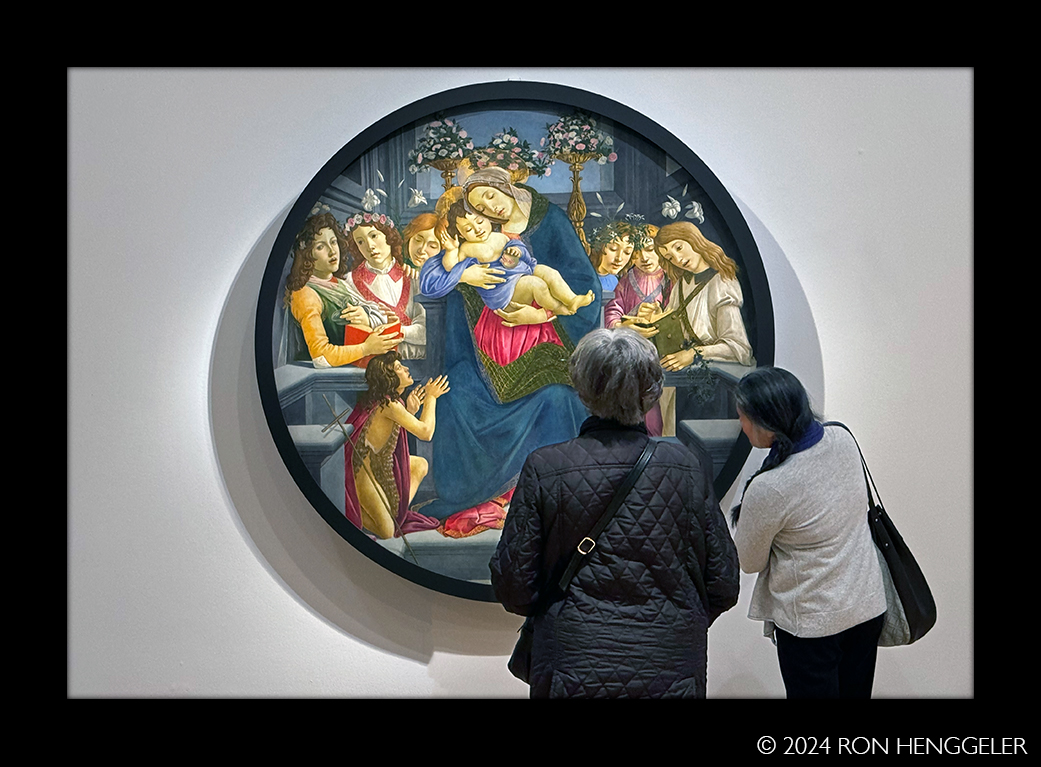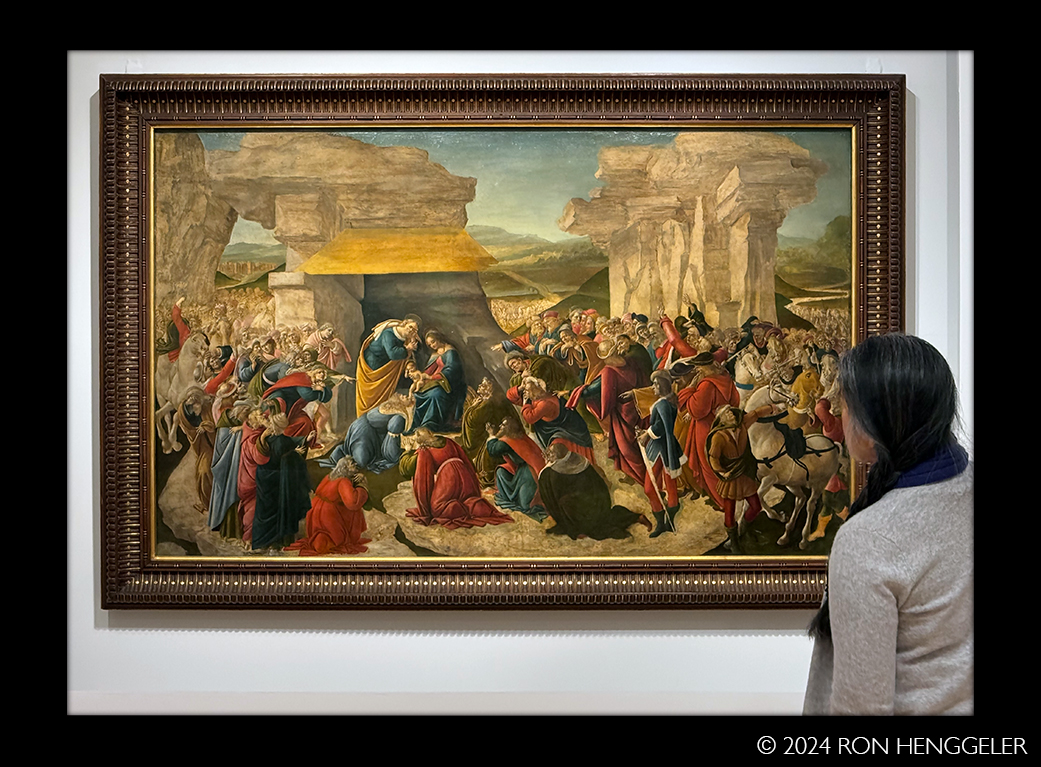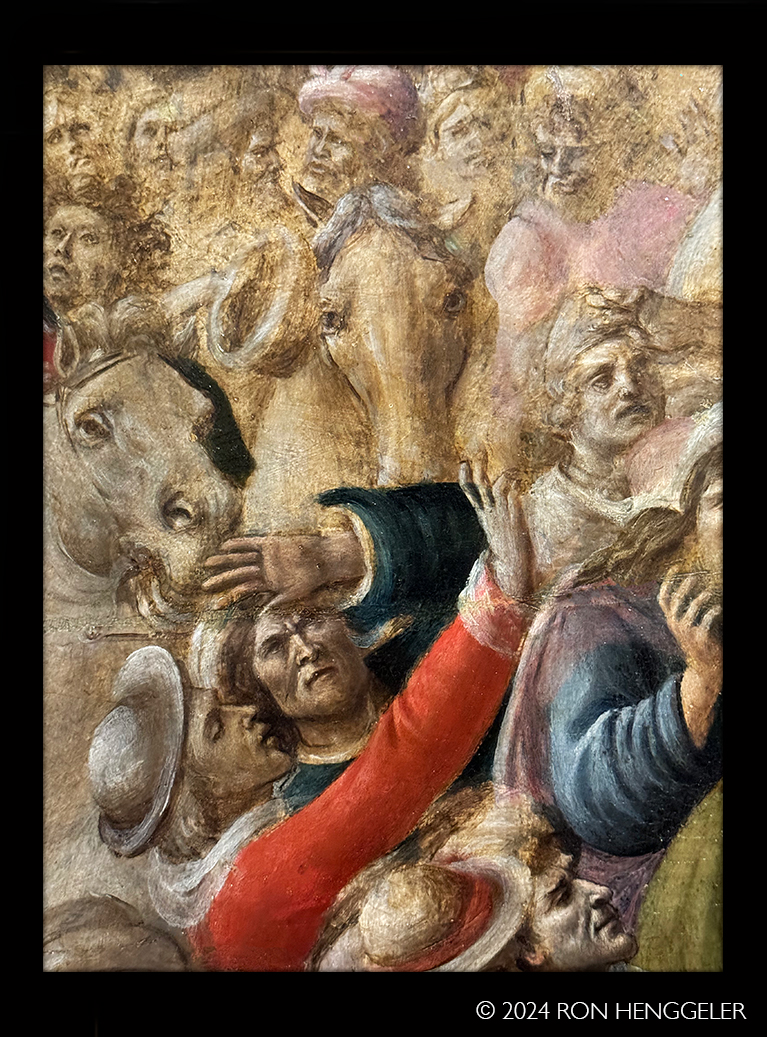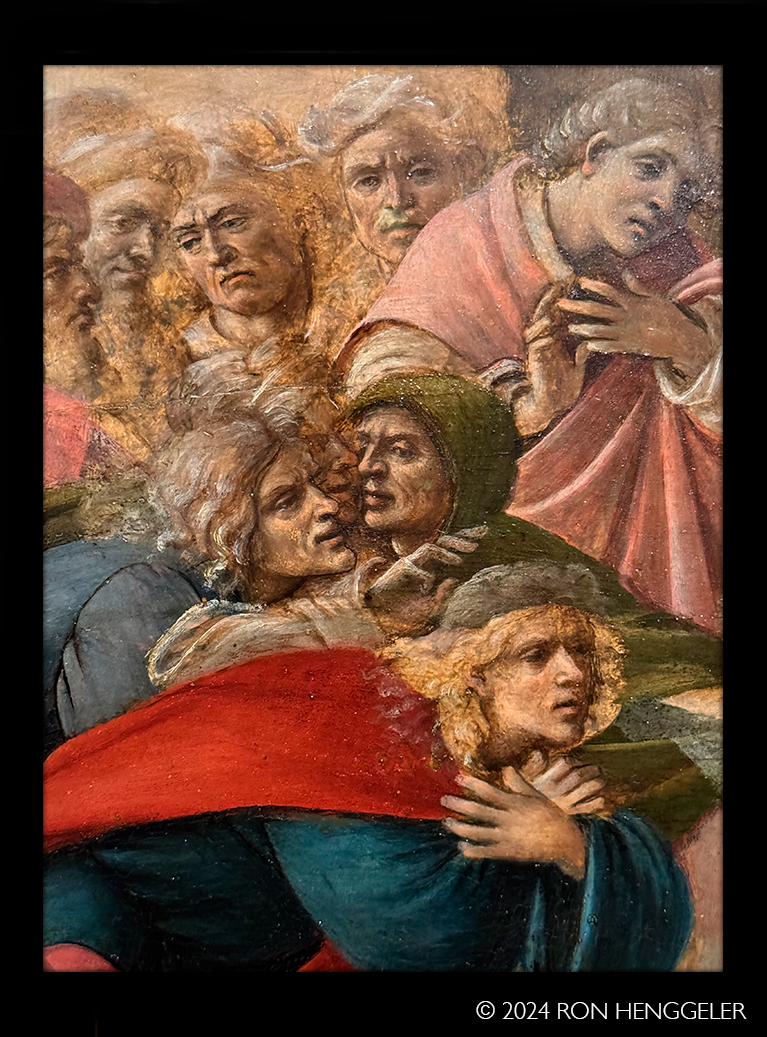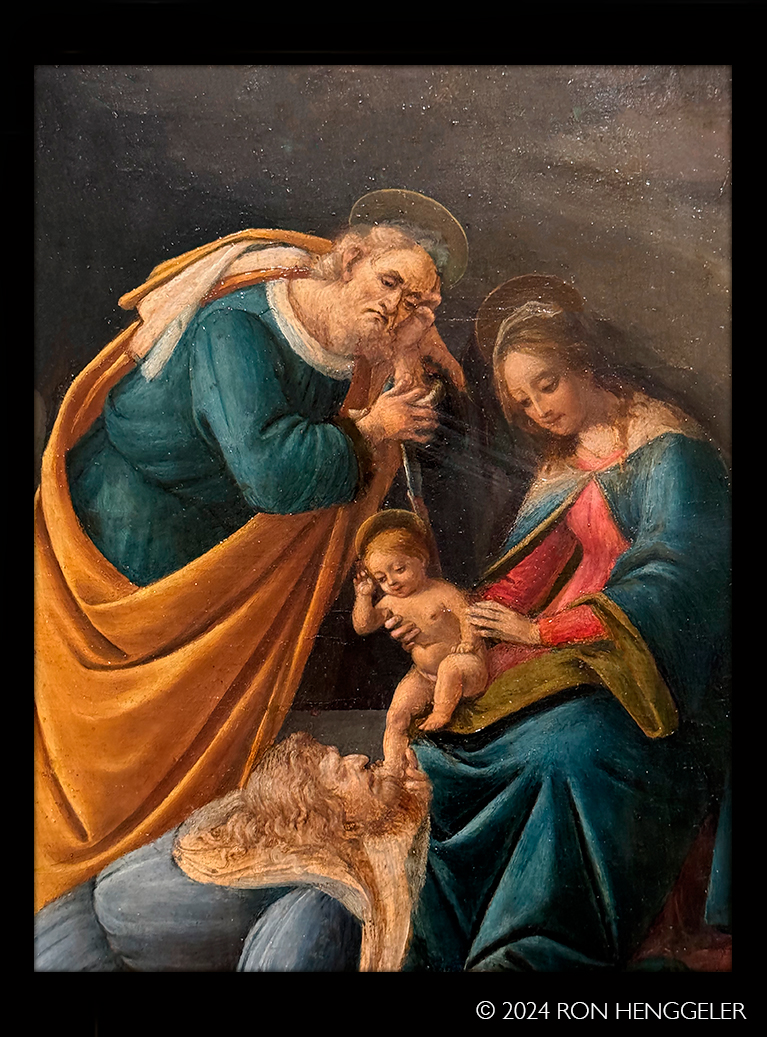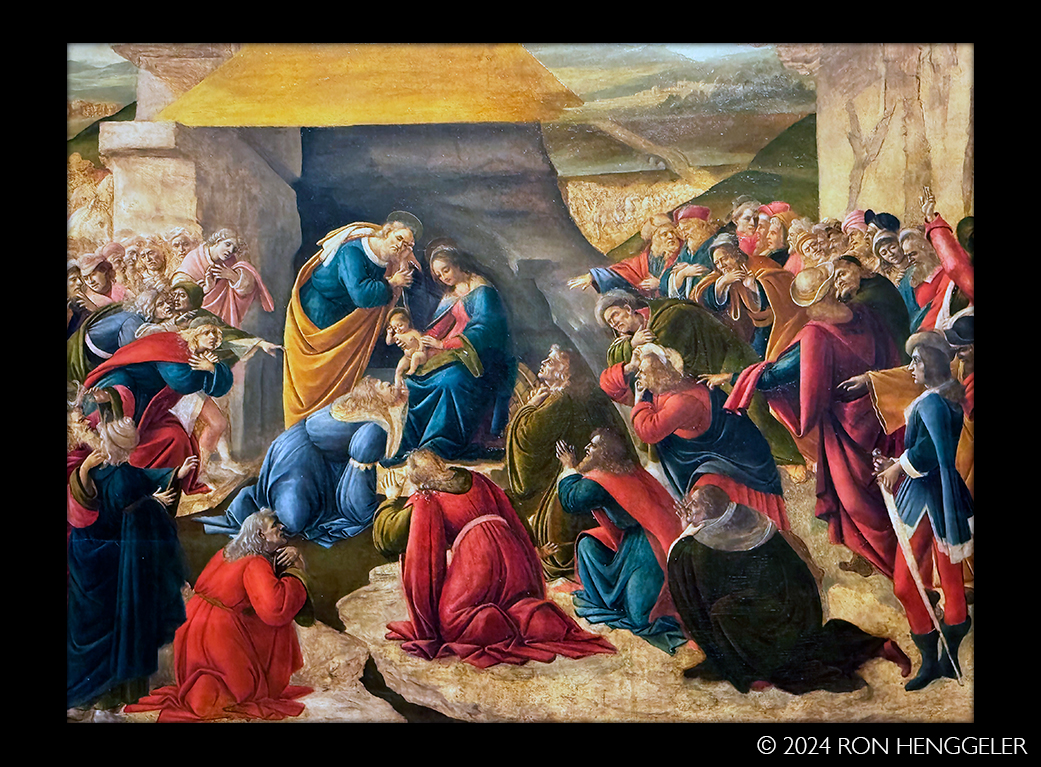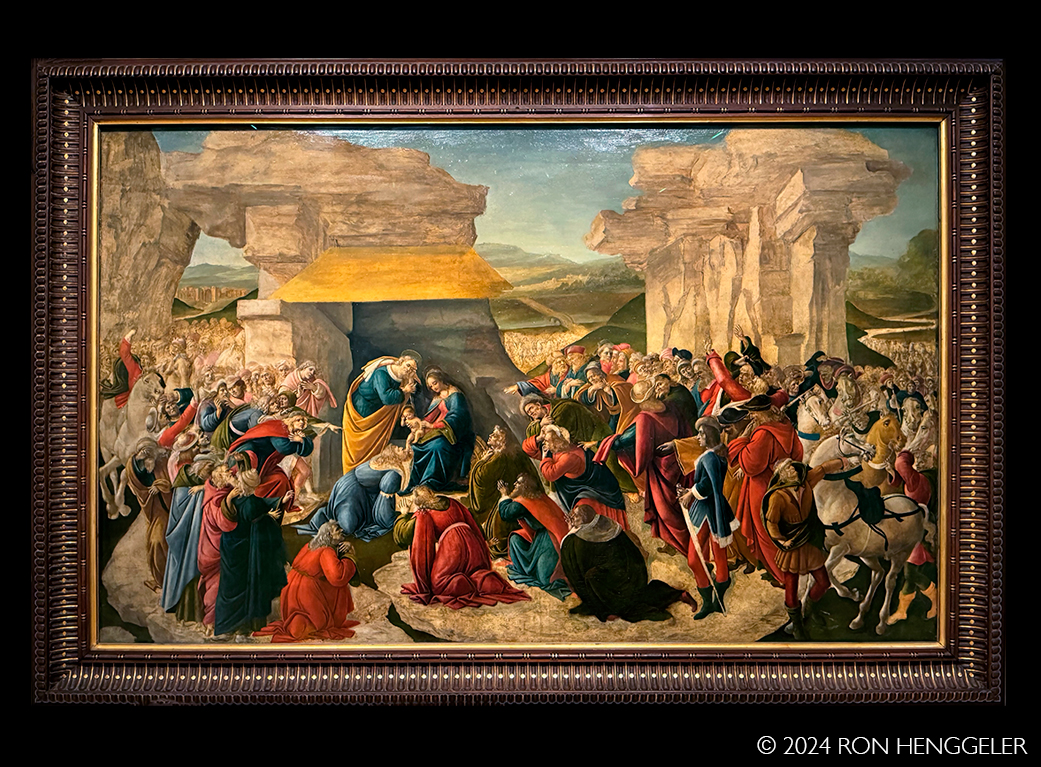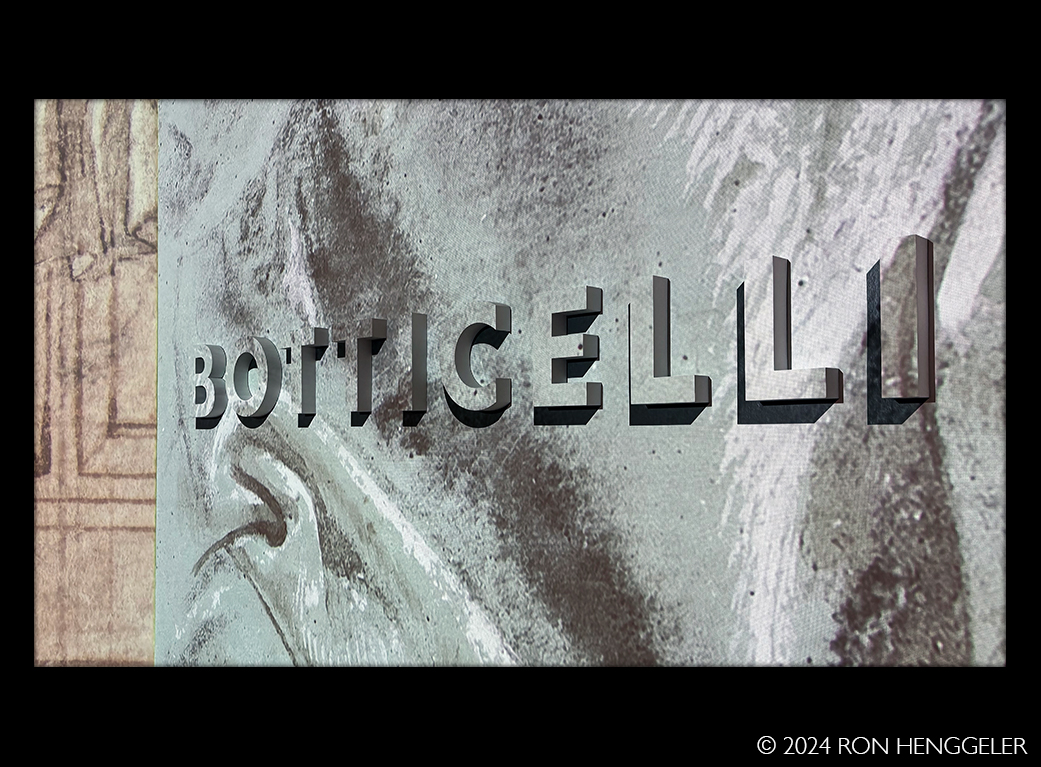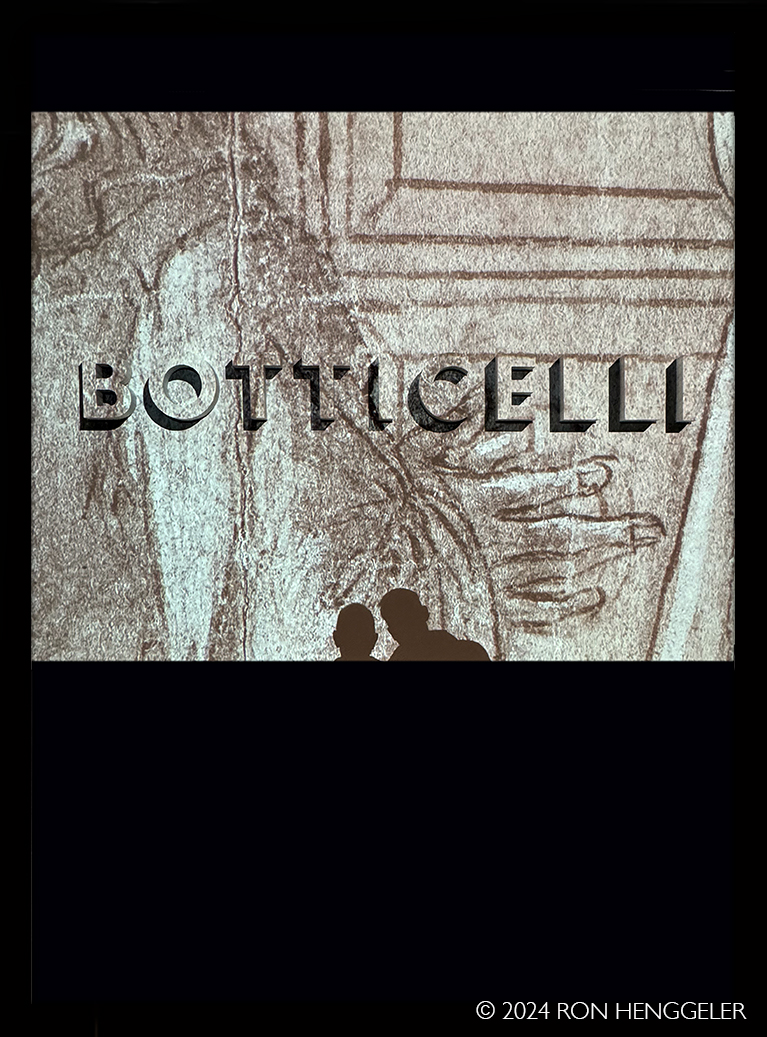| |
January 18, 2024
Botticelli at the Legion of Honor |
|
| |
Botticelli Drawings
Botticelli Drawings is the first exhibition ever dedicated to the drawings of Renaissance artist Sandro Botticelli (ca. 1445 – 1510).
|
|
| |
Incisive or evocative, rhythmic or flowing, Sandro Botticell's fluid command of the line represents the captivating magnetism behind his compositions-whether painted on panel, frescoed on walls, sculpted in wood, or engraved on paper. The line constitutes the basic structure of Botticelli's designs and the primary formal element of his aesthetic. Botticelli elevated the line as the driving force behind his figures and their rhythmic movement and he used drawing as a means of creating, arranging, and controlling the structure within which the figures operate. Unlike previous artists, Botticelli embraced the art of disegno, which encompasses both the physical act of drawing and the conceptual creativity of design. This approach formally grounded his studies of individual figures and their harmonious placement within a larger composition. |
|
|
|
| |
Although Botticelli's paintings and portraits are renowned for their poetry, spiritual power, and grace, his drawings are largely unknown, possibly because of their scarcity. Most of his surviving works on paper have been brought together for this exhibition. Some have been reunited with the resulting paintings, allowing unprecedented insight into the artist's process, from conception to execution.
Botticelli Drawings is divided into seven sections, beginning in the early 1460s with Botticelli's earliest recorded drawings, when he was a pupil of Fra Filippo Lippi, and continuing through his expressive religious works of the 1500s.
Throughout, the exhibition illuminates the graphic articulation of his ideas and the process behind their expression. It also unveils the private imagery of an artistic genius who, with simple lines, envisioned an ideal world of beauty that still resonates with our sensibilities today. |
|
| |
|
|
|
| |
PRELUDE
Fra Filippo Lippi:
Master Draftsman, Botticelli's Teacher
Alessandro (Sandro) Filipepi was born in Florence around 1445.
He was already called Botticelli during his lifetime, after an older brother who was himself nicknamed "Botticello" (a word meaning
"small cask"; it may have alluded to a love of wine, a large belly, or both). In the early 1460s, when Botticelli was about fifteen years old, his father had him train with Fra Filippo Lippi (ca. 1406-1469), the favorite painter of the Medici, the ruling family in Florence.
In 1452, Fra Filippo received a commission to decorate the choir chapel of the Prato Cathedral, north of Florence. Completed by 1465, this monumental endeavor was carried out with the assistance of his large workshop, which included the young Botticelli.
A highly experimental draftsman, Fra Filippo used drawing in every step of the artistic process, from overall composition design to detailed studies of figures and draperies. Botticelli's earliest surviving drawings attest to his strong reliance on Fra Filippo's formal and technical solutions, and their close relationship allowed the younger artist to grasp the master's techniques and figural alphabet while maturing an original style of his own. |
|
| |
|
|
|
| |
Fra Filippo Lippi
(Filippo di Tommaso di Lippo)
(Italian, Florence ca. 1406-1469 Spoleto)
The Funeral of Saint Stephen, ca. 1460-1465
Pen and brown ink, brown wash, over traces of stylus and black chalk
The Cleveland Museum of Art, John L. Severance Fund, 1947.70
This is a compositional study for a large scene frescoed in the Prato Cathedral by Fra Filippo, likely with the assistance of the young Botticelli. Set within a grand church interior, this design features a large ensemble of ecclesiastics celebrating the funerary mass of Saint Stephen, who has been laid to rest at right. Fra Filippo's command of the flowing pen and ink technique and his confident choreography of the crowded scene greatly influenced Botticelli's developing draftsmanship. |
|
| |
|
|
|
| |
Fra Filippo Lippi
(Filippo di Tommaso di Lippo)
(Italian, Florence ca. 1406-1469 Spoleto)
Drapery Study of Figure Kneeling to the Right, 1467
Silverpoint, brown wash, heightened with white, on pink prepared paper, laid down on a paper mount from Giorgio Vasari's Libro de' disegni
Fra Filippo was among the first Italian artists to produce drawings focused exclusively on the study of draperies.
Here, the artist's primary concern is to depict-through delicate strokes of lead white on pink prepared paper-a convincing, nearly tactile rendering of the fabric as it is bathed in light from above. The figure inhabiting the drapery is only lightly sketched. Made when Botticelli was in Fra Filippo's workshop, this drawing was used by other artists in the master's studio as a model for the prostrated magus Caspar in the Adoration of the Magi. |
|
| |
|
|
|
| |
Saint Stephen Casting a Demon out of a Young Man, ca. 1464-1466 Leadpoint, pen and brown ink, brown wash, heightened with white, on pink prepared paper Hamburger Kunsthalle, Kupferstichkabinett
Workshop of Fra Filippo Lippi (Filippo di Tommaso di Lippo)
(Italian, Florence ca. 1406-1469 Spoleto) |
|
| |
|
|
|
| |
Detail of:
Saint Stephen Casting a Demon out of a Young Man, ca. 1464-1466 |
|
| |
|
|
|
| |
Fra Filippo Lippi
(Filippo di Tommaso di Lippo)
(Italian, Florence ca. 1406-1469 Spoleto)
The Annunciation, ca. 1440
Tempera and gold on poplar panel
|
|
| |
|
|
|
| |
Detail of: The Annunciation, ca. 1440 |
|
| |
|
|
|
| |
Detail of: The Annunciation, ca. 1440 |
|
| |
|
|
|
| |
Head of a Man in Near Profile Looking Left, ca. 1468-1470
Metalpoint, traces of black chalk, gray wash, heightened with white, on yellow-ocher prepared paper
The head study of the handsome young man can be directly linked to one of the onlookers in his Adoration of the Magi. By observing the examples of Fra Filippo, Botticelli learned how to master the play of light and the rendering of full forms for these studies.
Adoration of the Magi (detail), ca. 1478-1482. Tempera and oil on poplar, 27 % × 41 in. |
|
| |
|
|
|
| |
Head of a Woman in Near Profile Looking Down to the Left, ca. 1468-1470
Metalpoint (lead?), light gray wash, heightened with white, on yellow-ocher prepared paper
Previously unattributed, these two drawings are here introduced as early works by Botticelli, as they can be linked with his distinctive drawing style and the preparation of his paintings. The soulful head of a woman is likely preparatory for the face
of a Virgin, modestly looking down, as in the majestic Virgin and Child with the Young Saint John the Baptist ("Madonna of the Rose Garden") (on view nearby).
Formalizing a graceful example of feminine beauty, the drawing was also reused for later paintings. |
|
| |
|
|
|
| |
Workshop of Fra Filippo Lippi, possibly Fra Diamante
(Bartolozzo di Feo) (Italian, Terranuova Bracciolini ca. 1430-after 1498 Florence)
Head of a Veiled Woman, ca. 1465-1470
Pen and brown ink, brown wash, heightened with white, on blue-green paper prepared with gray-brown wash, laid down on blue-green paper
Fra Diamante was Fra Filippo's longtime assistant, described by early sources as a "close friend, almost like a brother." Relying on Fra Filippo's techniques, forms, and emphasis on light, this study for a veiled woman captures an idealized feminine type. The drawing has been newly attributed to Fra Diamante because it can be closely related to a head of the Virgin painted by the artist around the same time. |
|
| |
|
|
|
| |
Fra Filippo Lippi (Filippo di Tommaso di Lippo)
(Italian, Florence ca. 1406-1469 Spoleto)
Standing Female Saint Facing Right, ca. 1465
Silverpoint and black chalk with brown wash, heightened with white, over stylus, on pink prepared paper (recto); silverpoint with some details in leadpoint, gray-brown wash, heightened with white, on yellow-ocher prepared paper (verso)
|
|
| |
|
|
|
| |
The Virgin and Child with the
Young Saint John the Baptist
("Madonna of the Rose Garden"), ca. 1465-1470
Tempera and gold on poplar panel |
|
| |
|
|
|
| |
Detail of:
The Virgin and Child with the
Young Saint John the Baptist
("Madonna of the Rose Garden"), ca. 1465-1470
Tempera and gold on poplar panel |
|
| |
|
|
|
| |
Filippino Lippi
(Italian, Prato ca. 1457-1504 Florence)
Five Sibyls in Niches: The Samian, Cumean, Hellespontic, Phrygian and Tiburtine, ca. 1472
Oil on poplar panel
Bv permission of the Governina Body of Christ Church. Oxford. |
|
| |
|
|
|
| |
Detail of:
Five Sibyls in Niches: The Samian, Cumean, Hellespontic, Phrygian and Tiburtine, ca. 1472
Oil on poplar panel |
|
| |
|
|
|
| |
Detail of:
Five Sibyls in Niches: The Samian, Cumean, Hellespontic, Phrygian and Tiburtine, ca. 1472
Oil on poplar panel |
|
| |
|
|
|
| |
HARMONY
Drawing the Figure:
Nude, Seminude, Draped
Botticell's point of departure, and the core element in his compo-sitions, was the portrayal of the human figure. In the Renaissance, there was a new focus on humanism and the affirmation of the individual, and this found expression in Botticelli's depictions of the male body, either nude, seminude, or draped. The youthful workshop assistants modeling for Botticelli's drawings would assume poses from both classical and contemporary sculptural sources, a practice that helped Botticelli infuse his figures with the breath of life and attested to a renewed interest in the beauty and proportions of classical antiquity.
Elements of stylization and abstraction pervade Botticelli's figures— seen in the elongated, lissome, and floating figural types drawn in preparation for his important commissions of the 1470s, from Saint Sebastian to La Primavera. Through these works, he contributed to defining a template of eroticized nudes, daring for their sensuality and athleticism, that would become canonical in Western art.
This gallery also introduces the work of Botticelli's two main competitors in the Florentine art scene: Andrea del Verrocchio, the Medici family's favorite sculptor, and the goldsmith Antonio del Pollaiuolo, whose outline-based design technique was important to the development of Botticelli's linear style. |
|
| |
|
|
|
| |
Attributed to Sandro Botticelli
Study for Three Male Figures, Two Standing, One Seated (verso), ca. 1465
Metalpoint, heightened with white, on pink-mauve prepared paper |
|
| |
|
|
|
| |
After Polykleitos
(Greek, ca. 490-425 BC)
Torso of Hermes
Roman, 2nd century AD
Pentelic marble
Fine Arts Museums of San Francisco, Gift of Vincent Price, 1986.26 |
|
| |
|
|
|
| |
Study for a Standing Man
(Saint Sebastian), ca. 1473
Metalpoint (silver?), heightened with white, on ocher prepared paper
Musée du Louvre, Département des Arts graphiques, 2693 recto
Study for a Standing Draped Figure
Turned to the Left, ca. 1473
Metalpoint (silver?), heightened with white, on ocher prepared paper
Musée du Louvre, Département des Arts graphiques, 2693 recto bis
The nude study at left is preparatory for the altarpiece with Saint Sebastian, among the earliest Renaissance altarpieces to depict a life-size seminude man in repose. Here, the figure's arms are bent farther up behind his back, forcing the model to push out his torso in a manner that is both more exaggerated and more natural than in the painting.
Arguably, the same model posed with his clothes on for the study at right. |
|
| |
|
|
|
| |
Study of a Standing Male Figure,
ca. 1475
Silverpoint, heightened with white, on salmon-pink prepared paper
This drawing of an athletic young man in a resting position is based on Andrea del Verrocchio's bronze sculpture David, although Botticelli enlivened it by using a workshop assistant as a model. The figure's appearance, body type, and attitude compare closely with the Mercury in his seminal painting La Primavera, for which it may have constituted an early, preliminary idea. |
|
| |
|
|
|
| |
A Standing Young Man with His Arm Raised, ca. 1477-1480
Silverpoint, heightened with white, on yellow-ocher prepared paper
For its size and accomplished technique, this sheet is among Botticellis most ambitious studies of the male body. It seems preparatory for the handsome Mercury in La Primavera, who is depicted in a very similar pose. Botticelli took advantage of the paper's verticality, extending the figure in full length from the cropped feet at the bottom to the raised arm at the top. The artist was working from life, and a workshop model would have been leaning on a wall or resting on a staff to maintain muscular tension. |
|
| |
|
|
|
| |
Antonio Pollaiuolo (Antonio Benci)
(Italian, Florence ca. 1431-1498 Rome)
Battle of the Nudes, ca. 1470
Engraving on laid paper
This print by Pollaiuolo is the first signed engraving in Renaissance Italy and the first to show the nude body of a man in motion. For these reasons, along with its technical complexity and large size, it is considered the most significant print from the fifteenth century.
A painter, engraver, goldsmith, and sculptor in precious metals, Pollaiuolo was the head of the most versatile artistic workshop in the late 1400s in Florence. His training as a goldsmith can be seen here in his adoption of a deft contour line, which defines a clear boundary between a body and the external space. This drawing manner was deeply influential for Botticell's emerging style. This impression is the only surviving example of the rare first state (preceding later alterations).
|
|
| |
|
|
|
| |
Detail of: Antonio Pollaiuolo (Antonio Benci)
(Italian, Florence ca. 1431-1498 Rome)
Battle of the Nudes, ca. 1470
Engraving on laid paper
|
|
| |
|
|
|
| |
Antonio Pollaiuolo (Antonio Benci)
(Italian, Florence ca. 1431-1498 Rome)
Study for Saint Sebastian, ca. 1475
Pen and brown ink, brown wash, on paper tinted with reddish-pink
|
|
| |
|
|
|
| |
Unidentified artist (Sandro Botticelli?)
(Florence, 15th century)
Drapery Study of a Seated Figure, ca. 1470
Black chalk, metalpoint, pen and gray-brown ink, gray-brown wash, heightened with white, on green paper prepared with emerald green
Striking for its modeling, layered drawing technique, and green paper, this is one of the most accomplished drapery studies produced in Renaissance Florence.
It reflects the style of both Andrea del Verrocchio and Botticelli, to whom it was attributed in the past. The treatment of the draperies here is similar to the draperies of the Delphic and Cimmerian sibyls in Botticell's Five Sibyls in Niches (on view nearby). |
|
| |
|
|
|
| |
Andrea del Verrocchio (Andrea di Cione) (Italian, Florence 1435?-1488 Venice)
Study for The Allegory of Faith, 1469
Black chalk on metalpoint, pen and brown ink, brown wash, traces of red chalk, heightened with white, on paper partly tinted with pink
Verrocchio executed this allegory for a painting competition, vying for a commission to produce a series of seven enthroned Christian virtues. He ultimately lost to Piero Pollaiuolo and Botticelli. Primarily a sculptor, Verrocchio focused on the three-dimensional presence of the figure and her drapes, realized through a dazzling technique involving a creative overlay of different graphic media. |
|
| |
|
|
|
| |
Detail of: Five Sibyls in Niches: The Persian, Libyan, Delphic, Cimmerian and Erythraean, ca. 1465-1470
Oil on poplar panel |
|
| |
|
|
|
| |
Detail of: Five Sibyls in Niches: The Persian, Libyan, Delphic, Cimmerian and Erythraean, ca. 1465-1470
Oil on poplar panel |
|
| |
|
|
|
| |
Five Sibyls in Niches: The Persian, Libyan, Delphic, Cimmerian and Erythraean,
ca. 1465-1470
Oil on poplar panel
By permission of the Governing Body of Christ Church, Oxford, 1828 (JBS 35)
Prophetesses from classical literature, the sibyls were considered by later Christian theologians to have foretold Christ's birth, death, and resurrection. The two paintings were executed by Botticelli and Filippino Lippi, the son of Fra Filippo Lippi, who from 1472 was Botticelli's pupil and associate. While working in a uniform format, each artist approached his panel with his own individual style. As the senior artist, Botticelli was likely responsible for the overall design: a sequence of five draped, seated figures, each framed by a niche separated by a series of candelabra-shaped columns.
Their names are inscribed on the corresponding walls, and eleven of their prophecies ("dicta sibillarum") on the advent of Christ are strung together into two lengthy texts underneath the figures. |
|
| |
|
|
|
| |
Detail of: Five Sibyls in Niches: The Persian, Libyan, Delphic, Cimmerian and Erythraean, ca. 1465-1470
Oil on poplar panel |
|
| |
|
|
|
| |
Head of a Youth
Roman, 2nd century AD
Marble |
|
| |
|
|
|
| |
Portrait of a Lady at the Window, Known as Smeralda Bandinelli, ca. 1475
Tempera on poplar
Victoria and Albert Museum, London, Bequeathed by Constantine Alexander Lonides
In a bold departure from earlier formal conventions, Botticelli here depicts the sitter in a three-quarter view. She inhabits a loggia, also seen in Portrait of a Lady, and this device allows the viewer to peek into her private space. This woman has opened the shutter on the right and looks out of a fictive window, exchanging glances with the viewer. An infrared image reveals an abundance of freehand under-drawing and changes made by Botticelli in the preparation of this groundbreaking portrait.
|
|
| |
|
|
|
| |
Head of a Youth, Turned to the Left,
ca. 1480
Silverpoint, gray wash, heightened with white, on gray prepared paper
|
|
| |
|
|
|
| |
Portrait of a Lady, ca. 1475
Tempera on wood (poplar?)
Up until the middle of the fifteenth century, the portrayal of women remained tied to the profile pose derived from earlier conventions (such as on ancient coins), allowing only a limited characterization of the sitter and no interaction with the viewer. In such portraits, women were presented as objects of admiration, encoded as the property of their family or husbands. X-ray images of this painting (reproduced here) reveal significant changes in the design conception: the lady was originally
wearing a pearl pendant and a more closely fitting dress with a floral belt. Indeed, Botticelli had conceived this as a portrait of an elegantly coiffed upper-class woman. Only later (possibly in the 1500s) was it altered to represent Saint Catherine of Alexandria, with the addition of the green cloak and the wheel of martyrdom.
X-ray image of Portrait of a Lady.
Courtesy of the Lindenau-Museum Altenburg, Germany, imagery by Holger Manzke |
|
| |
|
|
|
| |
Detail of: Portrait of a Lady, ca. 1475
Tempera on wood |
|
| |
|
|
|
| |
Detail of: Portrait of a Lady, ca. 1475
Tempera on wood |
|
| |
|
|
|
| |
Detail of: Portrait of a Lady, ca. 1475
Tempera on wood |
|
| |
Drawing across Media:
Preparatory Studies, Design Process
The mid-1470s and the 1480s marked a career high for Botticelli: he was successfully managing a large workshop and producing works in a variety of media. His linear drawing style was particularly well suited to translation into other materials, and a distinctive aspect of Botticelli's artistic and business practice was the dissemination of his figural inventions through paintings, prints, book illustrations, wood marquetry, embroideries, and tapestries. Such diversification helped Botticelli's workshop adapt to the ever-changing market and respond quickly to all types of commissions.
A drawing is part of a dynamic, creative process, and the works in this room attest to the various stages of Botticelli's method of design. He used drawings in the contractual stage of a commission, prepared drawings of specific figures, referenced drawings while executing a work (or handed them to other craftsmen, such as sculptors or printmakers), and ultimately kept them in his studio as a visual record from which to produce replicas and variations. |
|
|
| |
Head of a Youth Looking Up, ca. 1465-1468
Metalpoint (silver?), heightened with white, on blue-green prepared paper
In this very early drawing, Botticelli was concerned with how to model the effects of light as it gently caressed the planes of the face, captured with a strong foreshort-ening from below. He used a series of very fine strokes of lead white, delicately spread with the tip of the brush, to convey the highlights going down from the forehead to the nose, delineating the youth's soft features and musculature.
|
|
| |
|
|
|
| |
Workshop of Sandro Botticelli
Study for a Man Running to the Left, ca. 1483
Metalpoint, heightened with white, on yellow-ocher prepared paper
In early 1483, Botticelli's workshop produced four spalliere (painted headboards) with scenes from a story in Boccaccio's Decameron about the unrequited love of Nastagio degli Onesti. Although Botticelli oversaw the figural conception of the paintings, he delegated their execution to a team of assistants. This sheet-drawn by a pupil imitating the master's technique-is preparatory for the figure of the running Nastagio in one of the panels. It attests to Botticell's inclusive approach in his workshop, both in the design conception and pictorial execution of his projects. |
|
| |
|
|
|
| |
Sandro Botticelli or Workshop
Study for Standing Petrarch in Profile, Holding a Book, ca. 1480
Pen and brown ink, heightened with white, on paper tinted with reddish-pink
This study depicts the iconic profile of the poet Petrarch (1304-1374), who from the fourteenth century had become an emblem of Florentine cultural identity. (A copy of his famous poem Triumphs, illustrated by Botticelli, is also shown in this gallery.) It was preparatory for door marquetry at the Palazzo Vecchio, the epicenter of Florentine political power. This study's clear linework was necessitated by its function: the design needed to be understood by the craftsmen who would translate it into wood carving. The simple outline manner of this drawing resembles the nearly contemporary engravings based on Botticelli's designs illustrating Dante's Divine
Comedy (on view nearby). |
|
| |
|
|
|
| |
Saint John the Baptist, ca. 1482-1485
Pen and brown ink, brown wash, heightened with white,
on paper tinted with reddish-pink
This elegant rendering, one of the most definitive figure drawings produced by Botticelli, served as a model for several depictions of Saint John produced by the artist and his workshop during the 1480s and 1490s. Saint John, the patron saint of Florence, was often included in a variety of devotional pictures.
The drawing's finished appearance; the treatment as an isolated figure, devoid of background context; and the exquisite technique, confidently established with a contour line, point to its use as a template rather than as preparatory for a single artwork. |
|
| |
|
|
|
| |
Drawing across Media:
Preparatory Studies, Design Process
The mid-1470s and the 1480s marked a career high for Botticelli: he was successfully managing a large workshop and producing works in a variety of media. His linear drawing style was particularly well suited to translation into other materials, and a distinctive aspect of Botticelli's artistic and business practice was the dissemination of his figural inventions through paintings, prints, book illustrations, wood marquetry, embroideries, and tapestries. Such diversification helped Botticelli's workshop adapt to the ever-changing market and respond quickly to all types of commissions.
A drawing is part of a dynamic, creative process, and the works in this room attest to the various stages of Botticelli's method of design. He used drawings in the contractual stage of a commission, prepared drawings of specific figures, referenced drawings while executing a work (or handed them to other craftsmen, such as sculptors or printmakers), and ultimately kept them in his studio as a visual record from which to produce replicas and variations. |
|
| |
|
|
| |
|
|
|
| |
The Annunciation, ca. 1485-1493
Tempera and gold on panel
Lent by Glasgow Life (Glasgow Museums) on behalf of Glasgow City Council, Archibald McLellan Collection
The Feast of the Annunciation (March 25) was important to the civic and religious life of Florence, marking the beginning of the Florentine calendar year. Exquisitely painted for private devotion, this panel depicts the archangel Gabriel and the Virgin isolated from each other and almost oppressed by the grand architecture. The assertive gestures, spatial organization, and tight architectural foreshortening (slightly tilted to the left) imbue the scene with anticipation and drama.The figure of the archangel was carefully studied on the Angel of the Annunciation (newly attributed to Botticelli). If you look closely at the drawing, you can see that Botticelli explored at least four different positions for the angel's arms, with the left arm bent or outstretched while holding the lily, and the right arm blessing or pointed downward.
|
|
| |
|
|
|
| |
Detail of: The Annunciation, ca. 1485-1493
Tempera and gold on panel |
|
| |
|
|
|
| |
Detail of: The Annunciation, ca. 1485-1493
Tempera and gold on panel |
|
| |
|
|
|
| |
Detail of: The Annunciation, ca. 1485-1493
Tempera and gold on panel |
|
| |
|
|
|
| |
Angel of the Annunciation,
ca. 1485-1490
Pen and brown ink, brown wash, over metalpoint, heightened with white, on paper tinted with reddish-
pink (now discolored), laid down
|
|
| |
|
|
|
| |
Detail of: The Annunciation, ca. 1485-1493
Tempera and gold on panel |
|
| |
|
|
|
| |
Triumph of Love for Petrarch's Triumphs (Trionfi),
from a miscellany manuscript of the Canzoniere and Trionfi, 1470-1473
Pen and brown ink, brown wash, over leadpoint, on parchment, later additions in blue and violet wash
This exquisite composition drawing appears as a one-off illustration in a refined manuscript containing Petrarch's Canzoniere and Trionfi, two of the great Tuscan poet's most popular and beloved works. In visualizing Triumph of Love, Botticelli closely followed Petrarch's text describing a "fiery chariot" pulled by four white horses that carried a winged Cupid. By having the chariot approaching frontally, the artist infused the composition with a dynamic sense of move-ment. The small illustrated manuscript was produced as a luxury object. It was likely a high-end commission, possibly from Lorenzo de Medici, who greatly admired Petrarch's work and promoted him as a herald of Florentine culture. |
|
| |
|
|
|
| |
Raffaellino del Garbo (Raffaello Carli) (Italian, Florence ca. 1466-1524 Florence)
Angel of the Annunciation, ca. 1495-1500
Pen and two hues of brown ink, brown wash, heightened with white, over black chalk (or charcoal), on paper tinted with reddish-pink; outlines pricked for transfer, irregular and partly made up
This drawing is a cartonetto, a scale drawing used to transfer designs onto the collar of a cope or chasuble to be embroidered. Raffaellino was a master in the production of such refined objects. Finely pinpricked on its contours, the design was intended to be transferred in reverse by means of pouncing with charcoal dust on its verso. Raffaellino's exquisite drawing technique is indebted to both Botticelli and Filippino Lippi. As a painter, his most accomplished work was the large altarpiece for the Frescobaldi family, signed and dated 1502, on view in the Renaissance painting gallery of the Legion of Honor.
|
|
| |
|
|
|
| |
Pallas on a Pedestal, ca. 1472-1474
Pen and brown ink, traces of black chalk
Saint Thomas Receiving the Girdle,
ca. 1493
Pen and brown ink, brown wash, over black chalk, heightened with white, on paper lightly tinted with brown-reddish wash, pasted on a sheet of blue paper, lined with gold foil (a page from Father Sebastiano Resta's Galleria Portatile, ca. 1700)
Veneranda Biblioteca Ambrosiana, Milan, Codex Resta, F 261 inf. no. 18 bis, fol. 14
Two drawings by Botticelli are pasted on this page from an album of drawings collected by the seventeenth-century Milanese connoisseur Sebastiano Resta. Attesting to Botticell's work in printmaking, the study for the Saint Thomas (at the bottom), unnaturally reaching upward, relates to the same figure in
Francesco Rossellis large engraving The Assumption of the Virgin with Saint Thomas Receiving the Holy Girdle (on view nearby). The bold, linear expressiveness and clarity of form made this drawing particularly suitable for translation into an engraving. According to the Gospels, Thomas was the only apostle to witness
Marys Assumption into heaven, and she dropped her waistband, or girdle, down to him as a token of protection. |
|
| |
|
|
|
| |
Francesco di Lorenzo Rosselli (Italian, Florence 1448-before 1513), after a design by Sandro Botticelli
The Assumption of the Virgin with Saint Thomas Receiving the Holy Girdle, ca. 1494-1495
Broad manner engraving on two sheets of laid paper |
|
| |
|
|
|
| |
Detail of: The Assumption of the Virgin with Saint Thomas Receiving the Holy Girdle,
ca. 1494-1495 |
|
| |
|
|
|
| |
Detail of: The Assumption of the Virgin with Saint Thomas Receiving the Holy Girdle,
ca. 1494-1495 |
|
| |
|
|
|
| |
Detail of: The Assumption of the Virgin with Saint Thomas Receiving the Holy Girdle,
ca. 1494-1495 |
|
| |
|
|
|
| |
DISCORD
The Late Drawings:
Spiritual Anxiety, Political Unrest
Coinciding with the death of his patron Lorenzo de Medici in 1492. and for the rest of his career, Botticelli progressively abandoned displays of virtuosity, shifting his emphasis away from physical beauty, anatomical accuracy, perspective, and foreshortening.
Instead, he created powerful images of raw emotion, like The Pentecost and The Coronation of the Virgin, preparatory for the largest and most expensive altarpiece of his career. In his late designs, figures are compressed and moved to the foreground, faces are distorted, gestures are excessively animated, contours are unrealistically emphasized. The spiritual message outweighs the balanced proportions of earlier decades.
The arrival in Florence of Girolamo Savonarola-the friar who ousted the Medici family and railed against the moral corruption of the city and the church-added another element of upheaval to the already turbulent Florentine community. Botticelli's disregard for standard rules of perspective is most evident in the Mystic Nativity. Botticelli referenced Savonarola in the cryptic inscriptions and apocalyptic imagery, suggesting that he had become an ardent follower of the friar. Savonarola was publicly executed in 1498. |
|
| |
|
|
|
| |
The Nativity of Christ (Mystic Nativity), 1501
Oil on canvas
Botticelli's final masterpiece is a visionary depiction of the advent of Christ and a poignant allegory for the salvation of humanity. He choreographed the complex composition on three parallel levels. It is centered on the Nativity, a scene dominated by a Virgin who is disproportionately larger than the other figures. The angels' circular movement above is mirrored below by the three men being embraced by angels as saved souls. Their cartouches read "peace on earth, goodwill toward men." Given the highly personal interpretation of the Nativity, it is possible that Botticelli painted this for himself, as an expression of his intensified spirituality following the downfall of Savonarola's theocracy. The Greek inscription includes Botticelli's signature and a date, making this his only signed and dated painting. |
|
| |
|
|
|
| |
Detail of: The Nativity of Christ (Mystic Nativity), 1501
Oil on canvas |
|
| |
|
|
|
| |
Detail of: The Nativity of Christ (Mystic Nativity), 1501
Oil on canvas |
|
| |
|
|
|
| |
Detail of: The Nativity of Christ (Mystic Nativity), 1501
Oil on canvas |
|
| |
|
|
|
| |
Allegory of Faith, ca. 1495
Pen and two hues of brown ink, over black chalk, heightened with white
The British Museum, London |
|
| |
|
|
|
| |
The Nativity of Christ (Mystic Nativity), 1501
Oil on canvas |
|
| |
|
|
|
| |
The Coronation of the Virgin, 1488-1492
Pen and two hues of brown ink, brown wash, over black chalk, heightened with white, on paper tinted with brown
This design relates to The Coronation of the Virgin, Botticell's largest altarpiece, executed for the powerful silk guild of Florence, from which he received his highest payment. Characterized by great formal clarity, this sheet is the surviving upper section of a larger composition the artist may have submitted to his patrons for design approval. Its exaggerated gestures and devotional expressiveness reflect Botticelli's new figural vocabulary of the 1490s and attest to his control of the graphic media (black chalk, washes, highlight) in choreographing a crowded composition. |
|
| |
|
|
|
| |
Detail of: The Coronation of the Virgin, 1488-1492 |
|
| |
|
|
|
| |
Detail of: The Coronation of the Virgin, 1488-1492 |
|
| |
|
|
|
| |
Detail of: The Coronation of the Virgin, 1488-1492 |
|
| |
|
|
|
| |
Workshop of Sandro Botticelli
Martyrdom of Saint Lucy, ca. 1485-1495
Pen and brown ink, brown wash, heightened with white, traces of red chalk
Musée du Louvre, Département des Arts graphiques, 1224 recto
|
|
| |
|
|
|
| |
The Devout People of Jerusalem at the Gates (Design for a Pentecost), ca. 1500-1505
Pen and two hues of brown ink, brown wash, over black chalk, heightened with white Hessisches Landesmuseum Darmstadt, Graphische Sammlung, AE 1285
According to the Acts of the Apostles, during the descent of the Holy Spirit, people of Jerusalem, "from every nation under heaven," came together when they heard the apostles, who were each speaking in a different language. Botticelli effectively portrays the turmoil and bewilderment animating a group of men, each dressed differently to symbolize their foreign cultures, as they gather outside the gates, behind which the apostles and the Virgin receive the word of God.
In his frieze-like arrangement of the eight figures, placed against a flat background, Botticelli seems to have favored the varied expression of their emotions and linear elegance of their movement over the accuracy of perspective.
|
|
| |
|
|
|
| |
Detail of: The Devout People of Jerusalem at the Gates (Design for a Pentecost)
ca. 1500-1505
|
|
| |
|
|
|
| |
Detail of: The Devout People of Jerusalem at the Gates (Design for a Pentecost)
ca. 1500-1505 |
|
| |
|
|
|
| |
The Holy Family with Saint John the Baptist, ca. 1490-1495
Tempera on panel
The Faringdon Collection Trust, 47 |
|
| |
|
|
|
| |
Detail of: The Holy Family with Saint John the Baptist, ca. 1490-1495
Tempera on panel |
|
| |
|
|
|
| |
Detail of: The Holy Family with Saint John the Baptist, ca. 1490-1495
Tempera on panel |
|
| |
|
|
|
| |
CHORUS
Botticelli's Pupils:
Drawing a Workshop Practice
Drawings played an essential role in the Renaissance workshop: they were copied by assistants and pupils as they learned to draw, used as references to create variations of the master's inventions, and kept in the studio as part of its patrimony.
Sources mention a number of assistants working in Botticelli's studio in various capacities. Their contributions, both as painters and draftsmen, are usually difficult to detect, as they minimized their personal styles to harmonize with Botticelli's. While their drawings lack individuality and demonstrate a strict adherence to Botticelli's formulas, they were nonetheless important to the dissemination of the master's "brand," his maniera.
In the 1400s and early 1500s, if a painting was composed by Botticelli and produced in his workshop, it was a Botticelli, even if not done by his hand. That is the case with the majestic Virgin and Child with Saint John the Baptist and Six Singing Angels, the largest surviving tondo issued by Botticellis studio. While Botticelli oversaw the design of such monumental work, the workshop was largely responsible for its execution. |
|
| |
|
|
|
| |
|
|
| |
|
|
|
| |
Drawing across Media:
Preparatory Studies, Design Process
The mid-1470s and the 1480s marked a career high for Botticelli: he was successfully managing a large workshop and producing works in a variety of media. His linear drawing style was particularly well suited to translation into other materials, and a distinctive aspect of Botticelli's artistic and business practice was the dissemination of his figural inventions through paintings, prints, book illustrations, wood marquetry, embroideries, and tapestries. Such diversification helped Botticelli's workshop adapt to the ever-changing market and respond quickly to all types of commissions.
A drawing is part of a dynamic, creative process, and the works in this room attest to the various stages of Botticelli's method of design. He used drawings in the contractual stage of a commission, prepared drawings of specific figures, referenced drawings while executing a work (or handed them to other craftsmen, such as sculptors or printmakers), and ultimately kept them in his studio as a visual record from which to produce replicas and variations. |
|
| |
|
|
| |
|
|
|
| |
Study for a Seated Saint Joseph, Resting on His Right Hand, ca. 1490-1495
Pen and brown ink, over black chalk, heightened with white, squared in black chalk on paper lightly tinted with brown-pink wash
Botticelli portrayed the aloof, self-contained, and compact figure of Saint Joseph for The Holy Family with Saint John the Baptist (on view nearby), a medium-size tondo for private devotion. In its restrained appearance and fluency of line, this small study exemplifies Botticelli's draftsmanship in the 1490s. While conceived in preparation for the painting, the drawing was also used as a template, preserved in the workshop to be repurposed in other compositions. For example, the same figure also appears, seen from behind, in The Nativity of Christ (Mystic Nativity) (on view nearby). It was also copied by his assistants, and a workshop variation of this drawing, Saint Peter Sleeping, is on view in the next gallery. |
|
| |
|
|
|
| |
Workshop of Sandro Botticelli
The Last Communion of Saint Jerome, ca. 1495
Oil on panel
Private collection |
|
| |
|
|
|
| |
Detail of:
Workshop of Sandro Botticelli
The Last Communion of Saint Jerome, ca. 1495
Oil on panel |
|
| |
|
|
|
| |
Workshop of Sandro Botticelli
The Last Communion of Saint Jerome, 1490-1495
Pen and brown ink, brown wash, traces of black chalk on paper, laid down
This lesser-known subject-Saint Jerome receiving his last communion before he dies in a humble barn near Bethlehem-became increasingly popular in Florence during the theocracy of Fra Girolamo Savonarola, who arguably promoted writings dedicated to his eponymous saint. Early sources considered The Last Communion of Saint Jerome to be among the most exquisite and poignant of Botticelli's small devotional paintings. It is also one of his most replicated compositions, known through at least four versions. Drawings played a crucial role within Botticell's practice: this drawing was used to retain a visual record of the design and to execute additional copies as well as more creative variations of this composition. |
|
| |
|
|
|
| |
Workshop of Sandro Botticelli The Funeral and First Miracle of Saint Marina, ca. 1495
Pen and brown ink, brown wash, over black chalk on paper, with later additions in pen and brown ink
|
|
| |
|
|
|
| |
Vir Dolorum (Man of Sorrows), ca. 1485-1490
Tempera (and oil?) and gold on panel
Detroit Institute of Arts |
|
| |
|
|
|
| |
Vir Dolorum (Man of Sorrows), ca. 1485-1490
Tempera (and oil?) and gold on panel |
|
| |
|
|
|
| |
Horses and Spectators
(fragment of Adoration of the Magi), ca. 1500
Brush and two hues of brown ink, over black chalk, heightened with white, on three pieces of prepared linen stitched together
The Morgan Library and Museum, New York. |
|
| |
|
|
|
| |
Detail of: Horses and Spectators
(fragment of Adoration of the Magi), ca. 1500 |
|
| |
|
|
|
| |
The Virgin and Saint Joseph with the Child Adored by a Magus (fragment of Adoration of the Magi), ca. 1500
Brush and two hues of brown ink, over black chalk, heightened with white on prepared linen |
|
| |
|
|
|
| |
Onlookers
(fragment of Adoration of the Magi), ca. 1500
Brush and two hues of brown ink, over black chalk, heightened with white (with a later addition), on prepared linen
|
|
| |
|
|
|
| |
Sandro Botticelli and Workshop
Virgin and Child with Saint John the Baptist and Six Singing Angels,
ca. 1490
Tempera and gold on panel
Galleria Borghese, Rome |
|
| |
|
|
|
| |
Adoration of the Magi, ca. 1500-1506
Tempera on poplar panel
Gallerie degli Uffizi, Florence, Depositi, 1890 no. 4346 |
|
| |
|
|
|
| |
Detail of: Adoration of the Magi, ca. 1500-1506
Tempera on poplar panel
Gallerie degli Uffizi, Florence |
|
| |
|
|
|
| |
Detail of: Adoration of the Magi, ca. 1500-1506
Tempera on poplar panel |
|
| |
|
|
|
| |
Detail of: Adoration of the Magi, ca. 1500-1506
Tempera on poplar panel |
|
| |
|
|
|
| |
Detail of: Adoration of the Magi, ca. 1500-1506
Tempera on poplar panel |
|
| |
|
|
|
| |
Detail of: Adoration of the Magi, ca. 1500-1506
Tempera on poplar panel |
|
| |
|
|
|
| |
Detail of: Adoration of the Magi, ca. 1500-1506
Tempera on poplar panel |
|
| |
|
|
|
| |
Adoration of the Magi, ca. 1500-1506
Tempera on poplar panel |
|
| |
FINALE
Drawing Unfinished:
Botticelli's Adoration of the Magi
The impenetrable style of Botticelli's late paintings, his heavy reliance on his workshop, and the repetition of his formulas led to a decline in appreciation for his work, and the artist died in near poverty in Florence in May 1510. His legacy, which included his workshop materials and his drawings, was rejected by his own family, who did not want to be responsible for his debts.
Possibly left uncompleted in his studio, the poignant Adoration of the Magi is a work of strong spiritual power. It offers penetrating insights into the artist's creative process and design practices, both for its unfinished state and for the exceptional survival of three fragmentary designs related to the composition, reunited here for the first time.
Forcefully drawn with a brush on an unusual support of finely threaded linen, the three fragments were once part of a unified design. As a large-scale modello (reference study), this drawing may have served as a guide for the preparation of the painted composition, to refine its figural elements, or for the workshop to lay out a similar scene.
Eluding any firm categorization, these unique brush drawings attest to Botticellis highly experimental draftsmanship, evolving technique, and unorthodox artistic practice at the end of his career. In their immediacy and undeveloped appearance, they help to firmly place Botticelli with Leonardo and Michelangelo-artists who defied the notion of the completeness of a work of art in the High Renaissance, and who embraced the non finito in their art-making. |
|
|
| |
|
|
| |
|
|
|
| |
|
|
